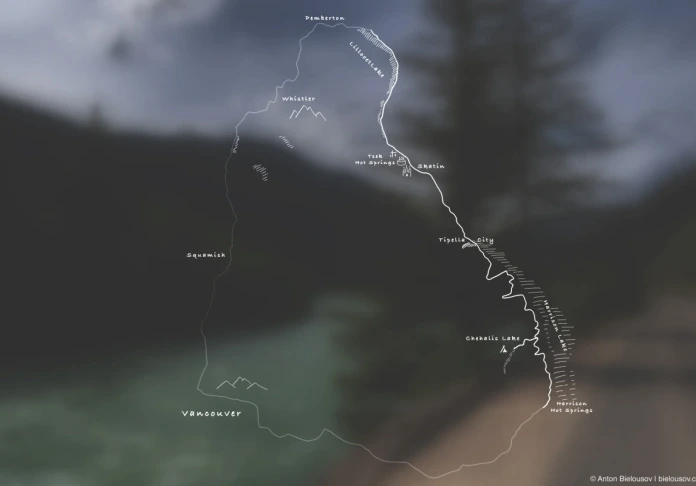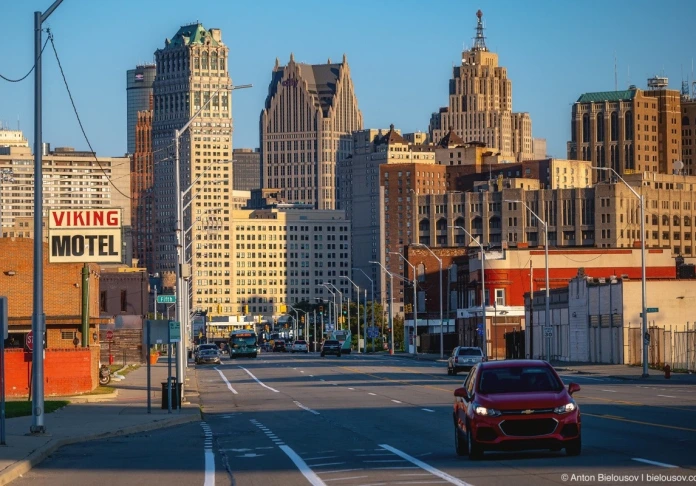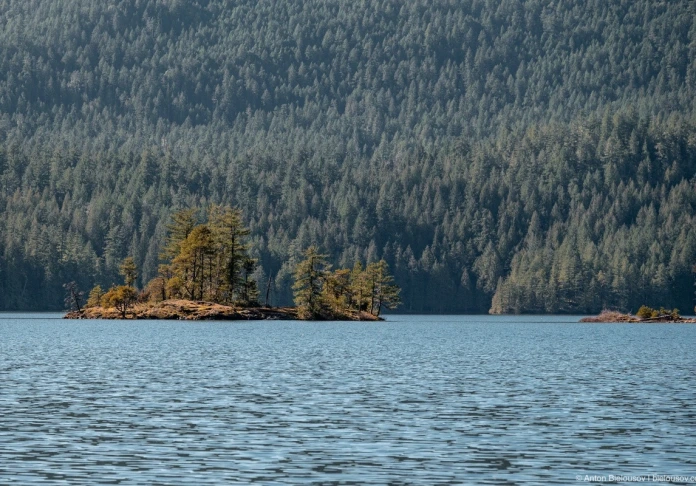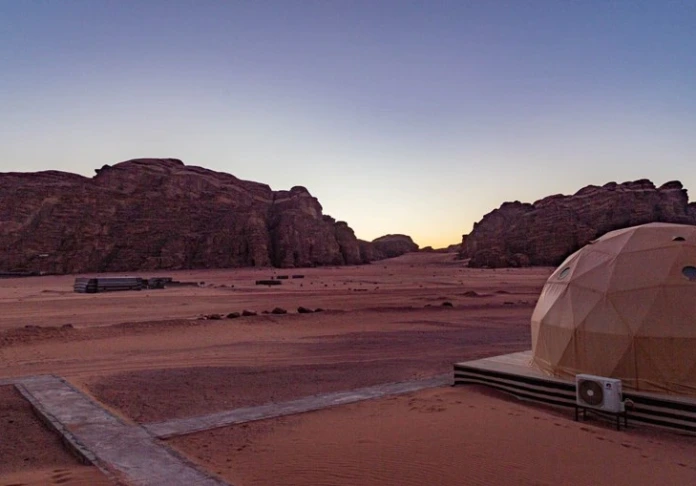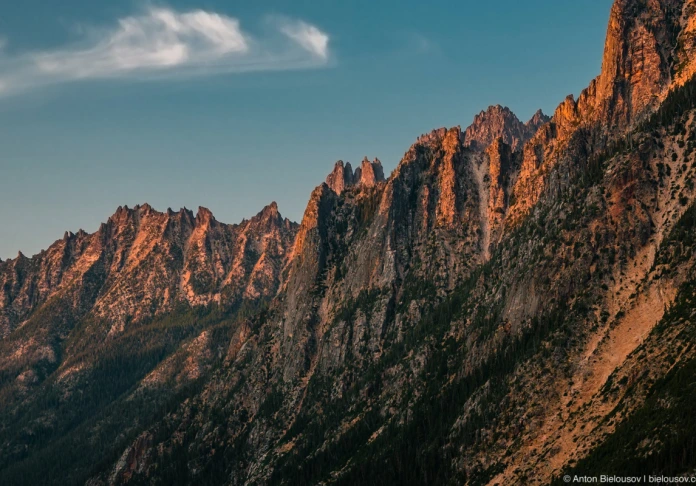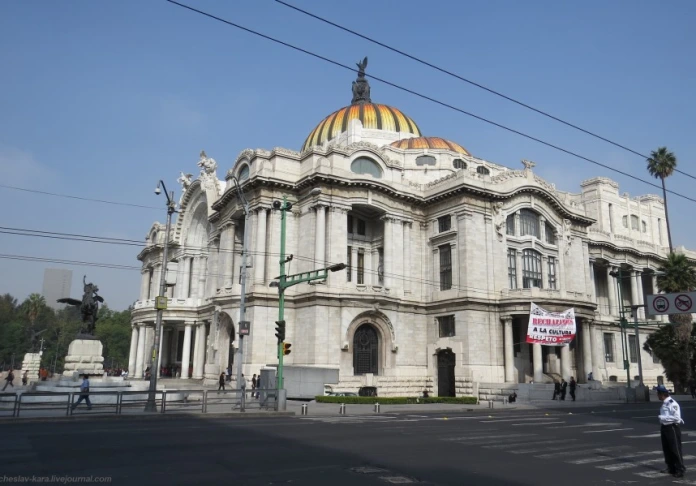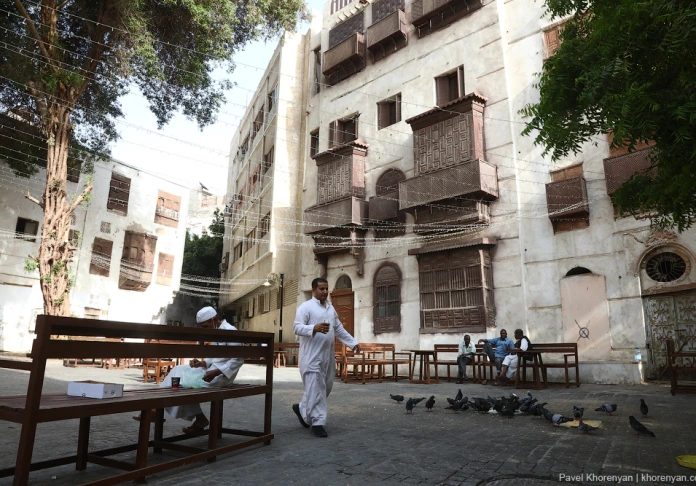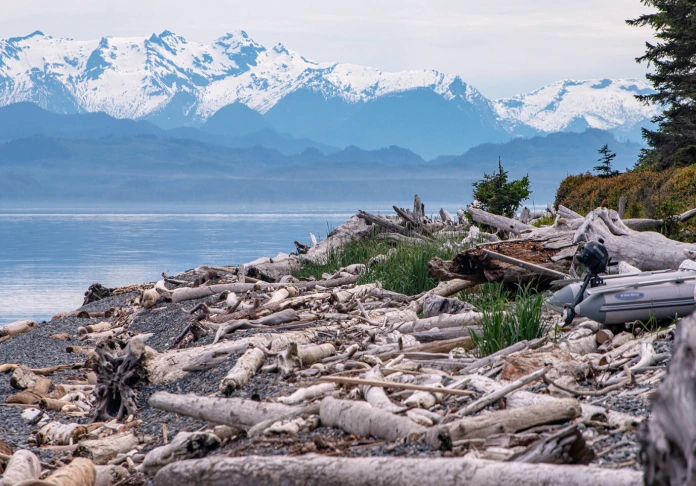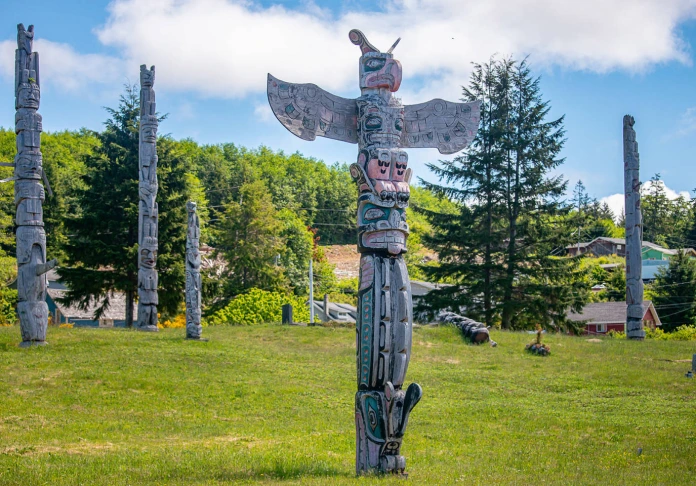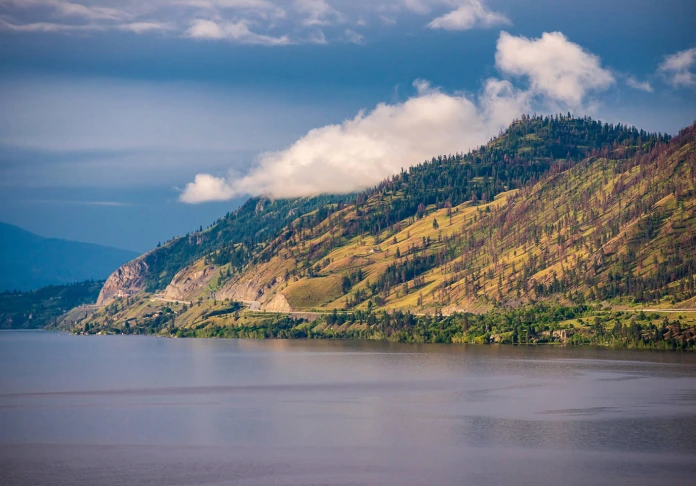Canada
The island of Finnish socialists and itchy killer whales
Malcolm Island is a small island in the north of Vancouver Island, where you need to get two ferries and drive a little more than 400 km. I probably would never have found out about its existence if my wife hadn’t been making fun of it on social networks.
I have been on Vancouver Island many times - one might say, I explored its southern part quite well - Victoria, Tofino, passed the West Coast Trail from Bamfield to Port Renfrew. But I have never been to its northern part, especially to the small, semi-wild islets that scattered as an archipelago along the western coast of Canada, where it is almost impossible to drive up from the land side (but we will try anyway).
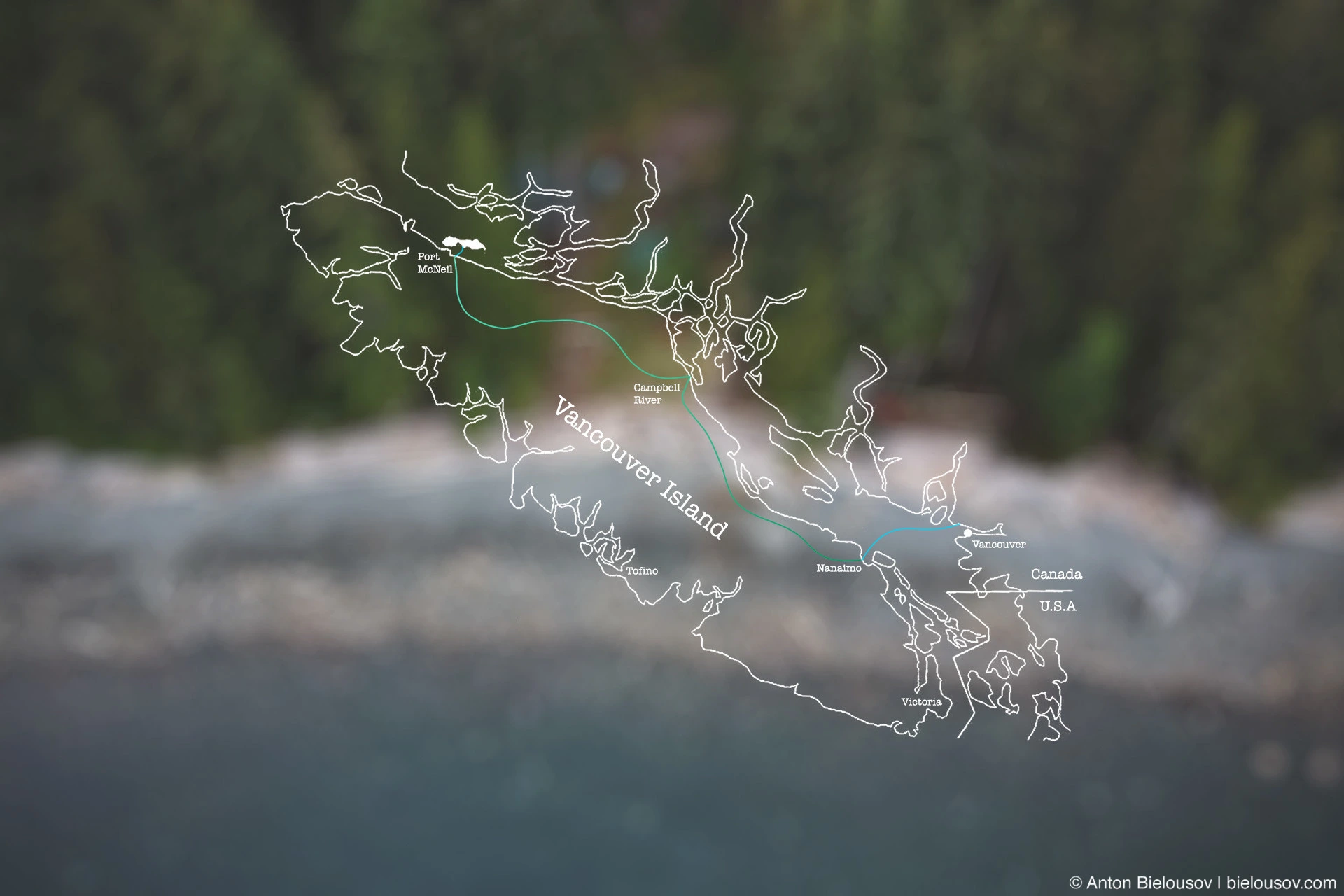 The places here are amazing, and although this is not so far from Vancouver - only 400 km - here you are transported to some completely different world.
This world lives its own leisurely life, reflecting on the ocean, and on our world from there, from the outside.
So, for example, the only store and restaurant in a relatively large town on the way on Sunday is open until 4 o'clock, but having arrived there at 2:50, it turned out that their kitchen had already closed.
The places here are amazing, and although this is not so far from Vancouver - only 400 km - here you are transported to some completely different world.
This world lives its own leisurely life, reflecting on the ocean, and on our world from there, from the outside.
So, for example, the only store and restaurant in a relatively large town on the way on Sunday is open until 4 o'clock, but having arrived there at 2:50, it turned out that their kitchen had already closed.
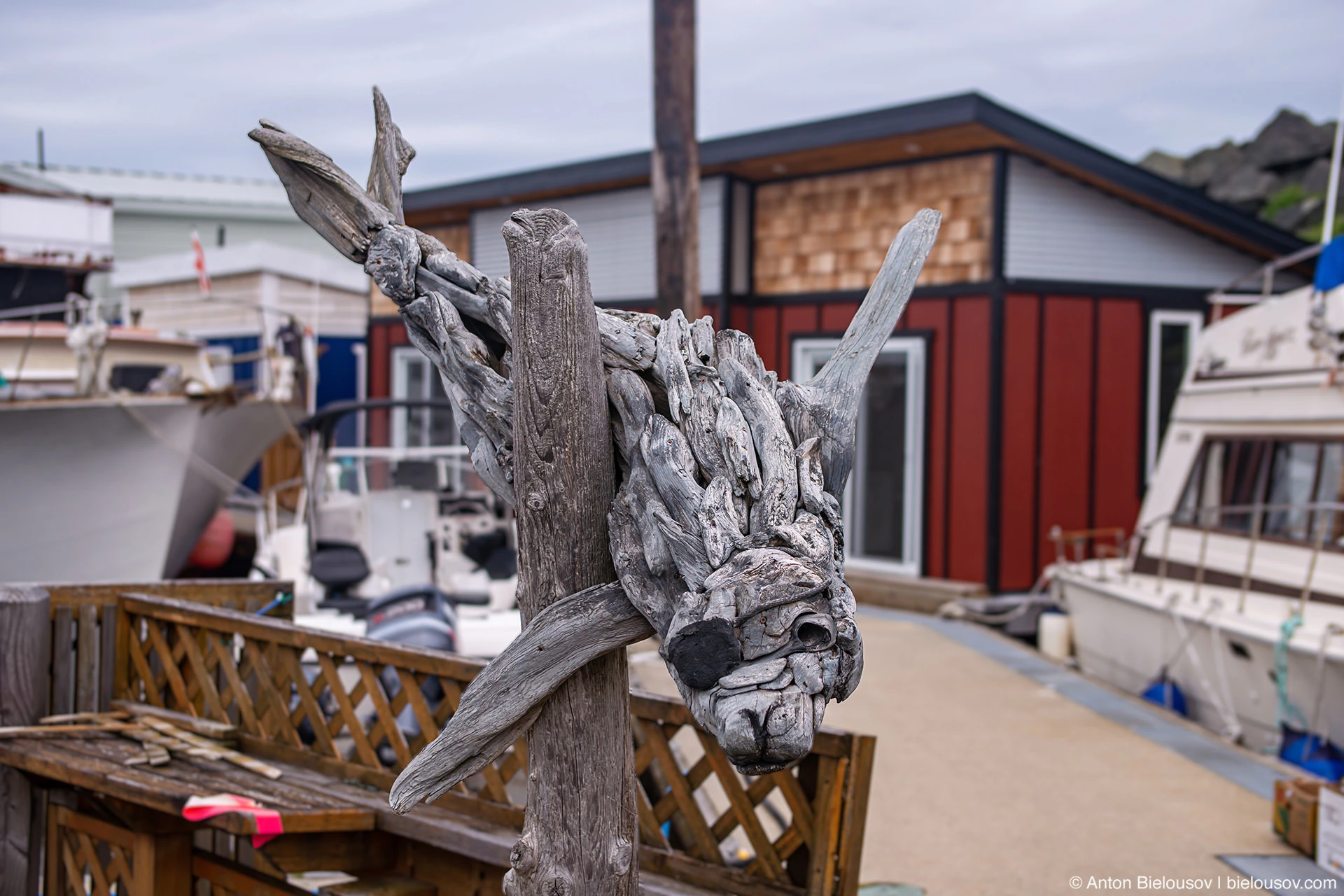 The one-eyed fur seal is the symbol of Dockside Fish & Chips (Campbell River, BC)
For example, Campbell River, also known as the "World Salmon Capital". You could see this town in such films as "7 years in Tibet", "Destination - 2", "Planet of the Apes: Revolution", "Twilight. new moon". In short, the city of sequels.
I remember it as a city where you can drink from a fire hydrant. Yes, this is a drinking fountain.
The one-eyed fur seal is the symbol of Dockside Fish & Chips (Campbell River, BC)
For example, Campbell River, also known as the "World Salmon Capital". You could see this town in such films as "7 years in Tibet", "Destination - 2", "Planet of the Apes: Revolution", "Twilight. new moon". In short, the city of sequels.
I remember it as a city where you can drink from a fire hydrant. Yes, this is a drinking fountain.
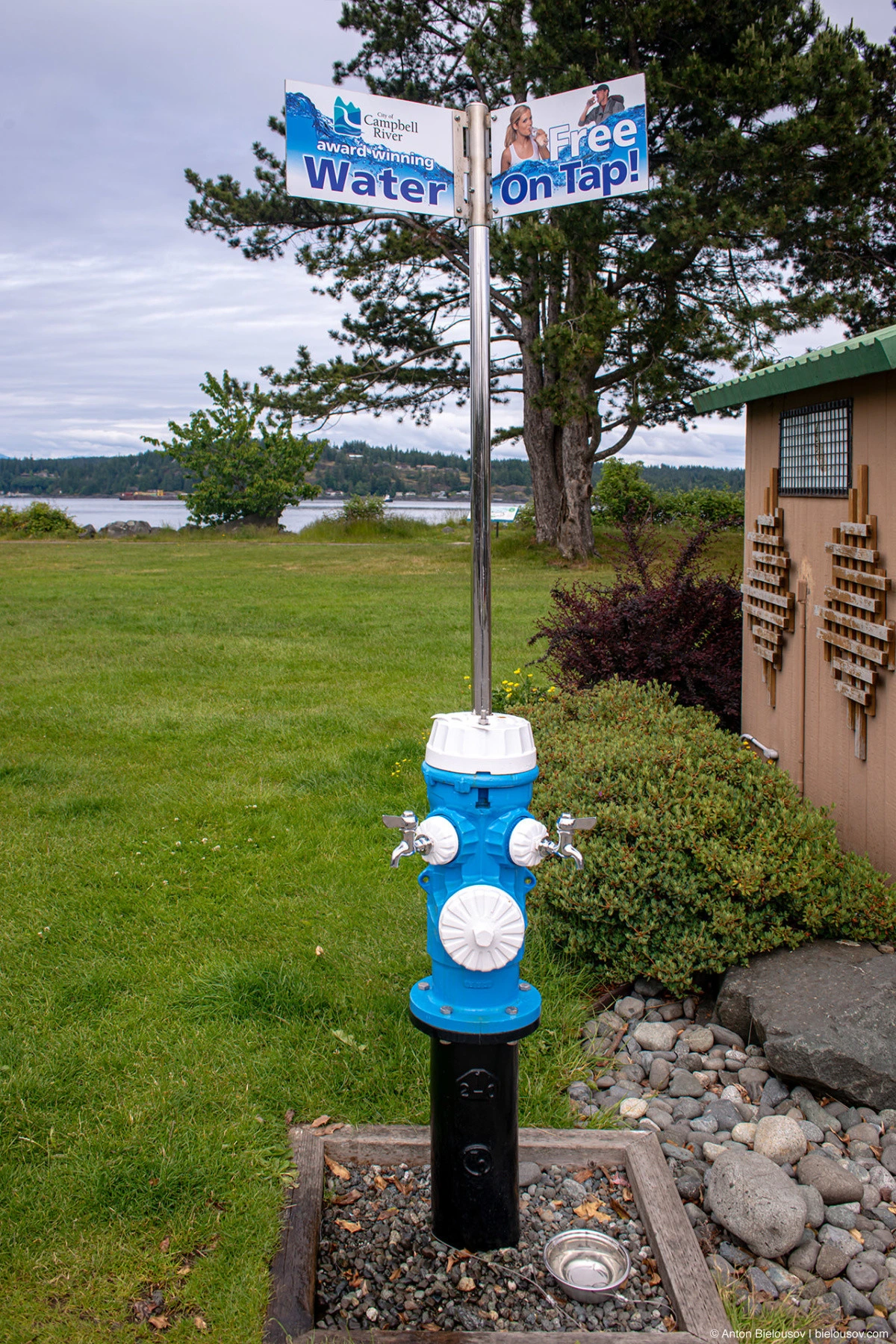 Here you can choose a route from Nanaimo to your taste - along the fast highway or along the slower road, but with heart - along the sea, where small coastal towns so much resemble the Oregon coast.
Here you can choose a route from Nanaimo to your taste - along the fast highway or along the slower road, but with heart - along the sea, where small coastal towns so much resemble the Oregon coast.
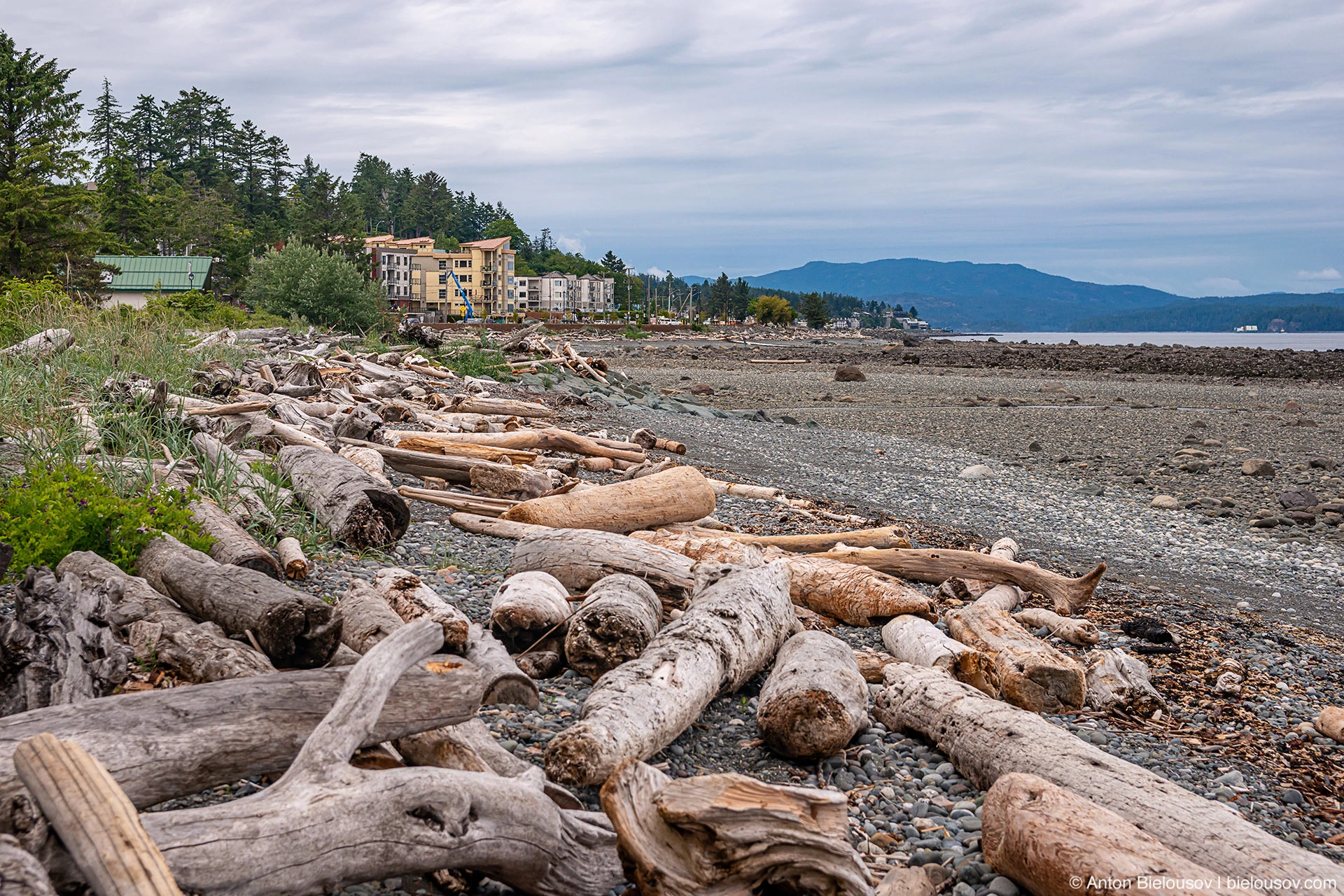 Qualicum Beach, BC
Then the road goes into a dense forest that does not end up to the northernmost coast of the island. But cellular communications, gas stations, restaurants are running out - only the road and the forest.
Qualicum Beach, BC
Then the road goes into a dense forest that does not end up to the northernmost coast of the island. But cellular communications, gas stations, restaurants are running out - only the road and the forest.
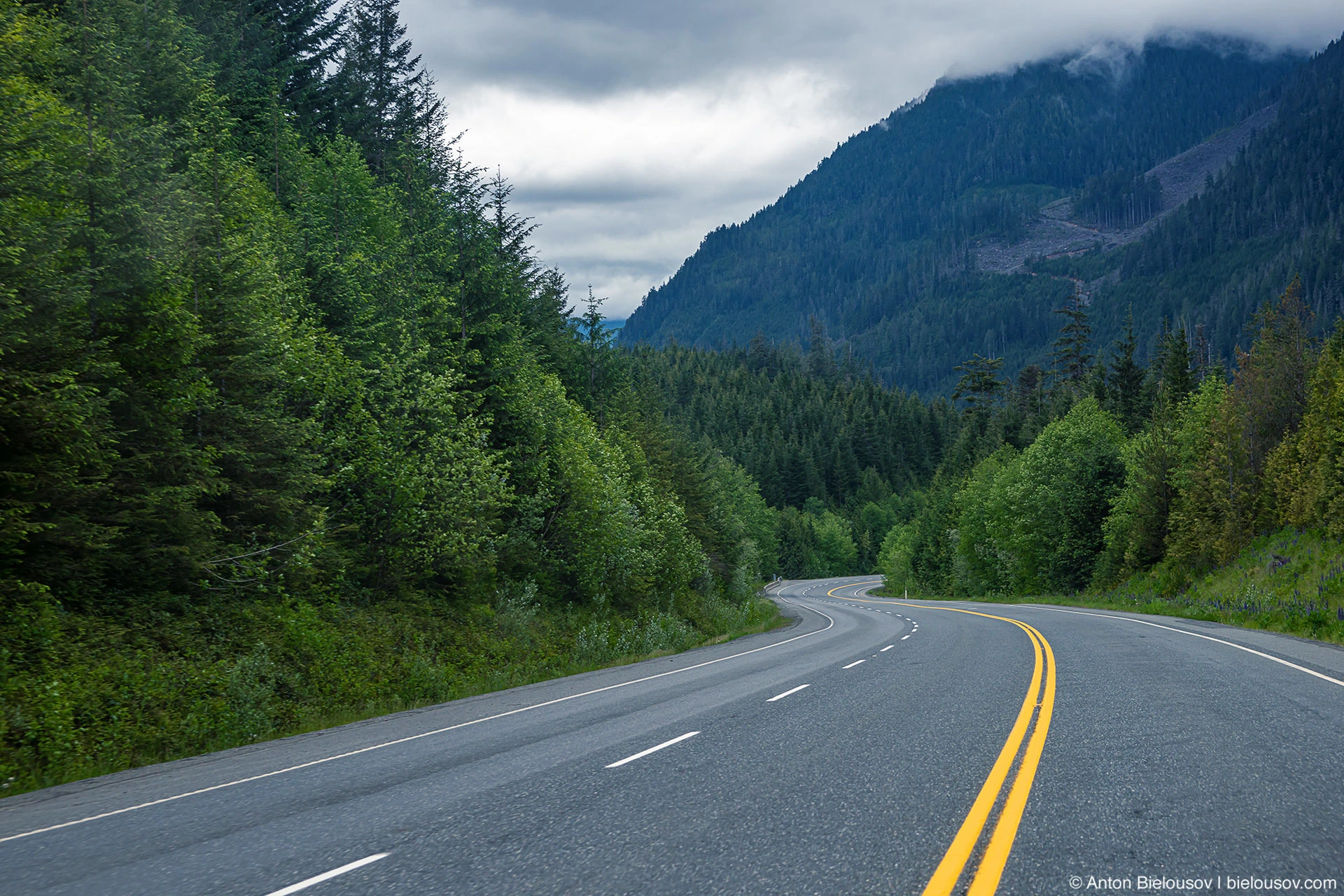 On the northern coast there are a couple of small settlements including Port Hardy, from where ferries leave very far north to the Indian island of Hyda Guida and Port Rupert. And the sleepy town of Port McNeill, a smaller ferry goes to Malcolm Island and the small Indian island of Cormorant Island, better known by the name of the city on it - Alert Bay (I'll tell you about it separately).
On the northern coast there are a couple of small settlements including Port Hardy, from where ferries leave very far north to the Indian island of Hyda Guida and Port Rupert. And the sleepy town of Port McNeill, a smaller ferry goes to Malcolm Island and the small Indian island of Cormorant Island, better known by the name of the city on it - Alert Bay (I'll tell you about it separately).
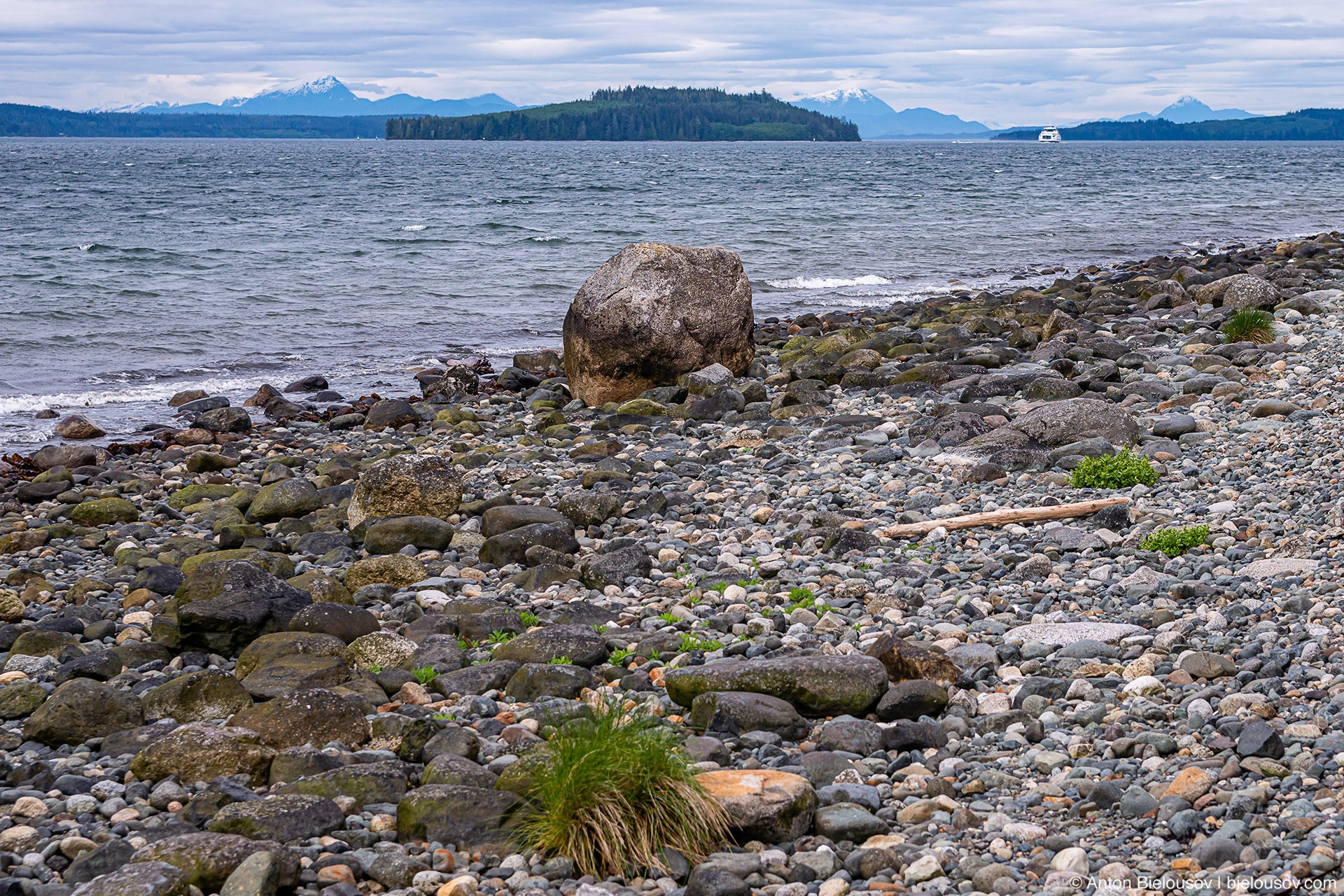 From left to right - Isle of Malcolm, Haddington and Cormorant (Alert Bay)
That's where we need it.
From left to right - Isle of Malcolm, Haddington and Cormorant (Alert Bay)
That's where we need it.
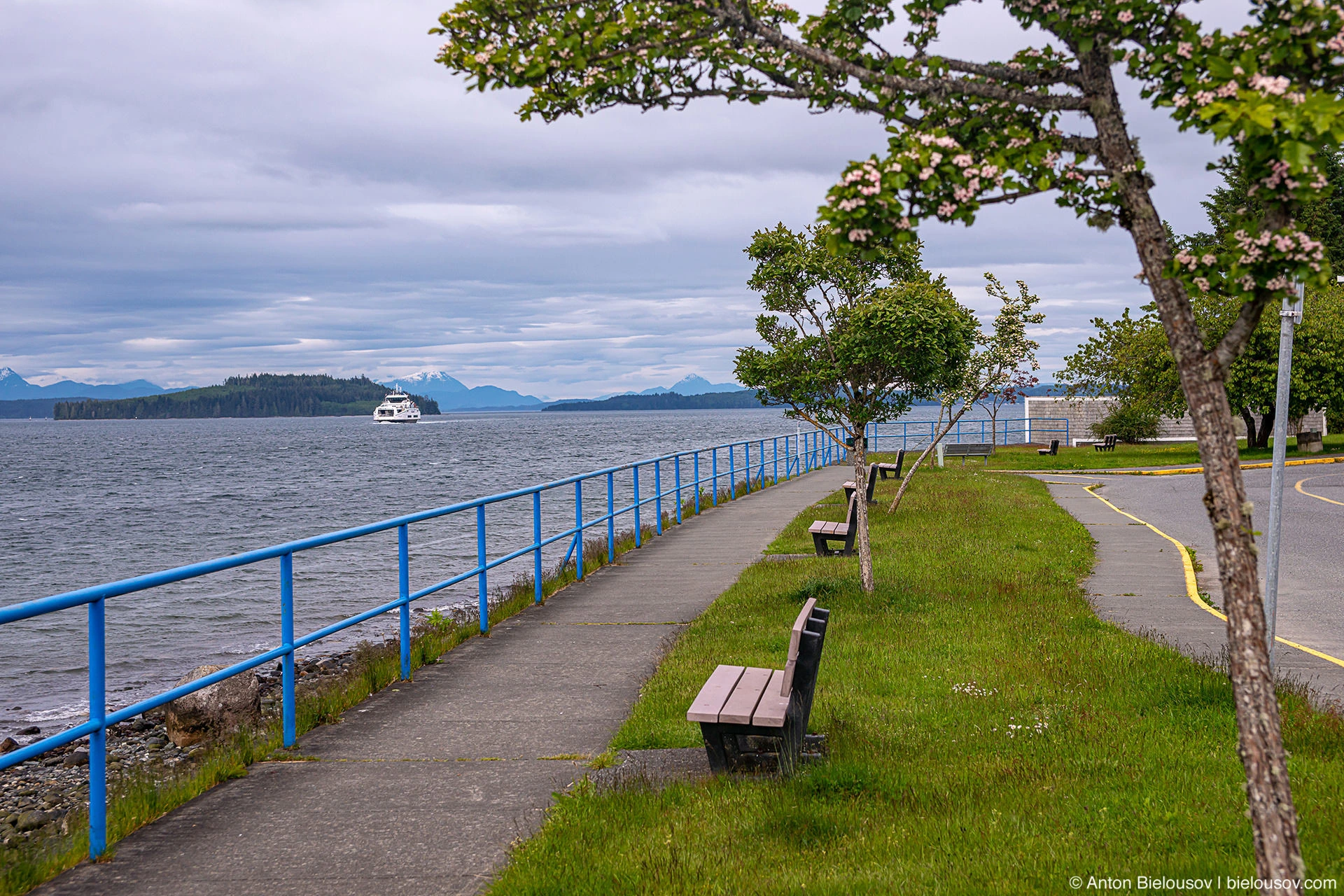 While waiting for the ferry, I opened the map (communication in Port McNeill reappeared) and quickly glanced at what to see in the area.
While waiting for the ferry, I opened the map (communication in Port McNeill reappeared) and quickly glanced at what to see in the area.
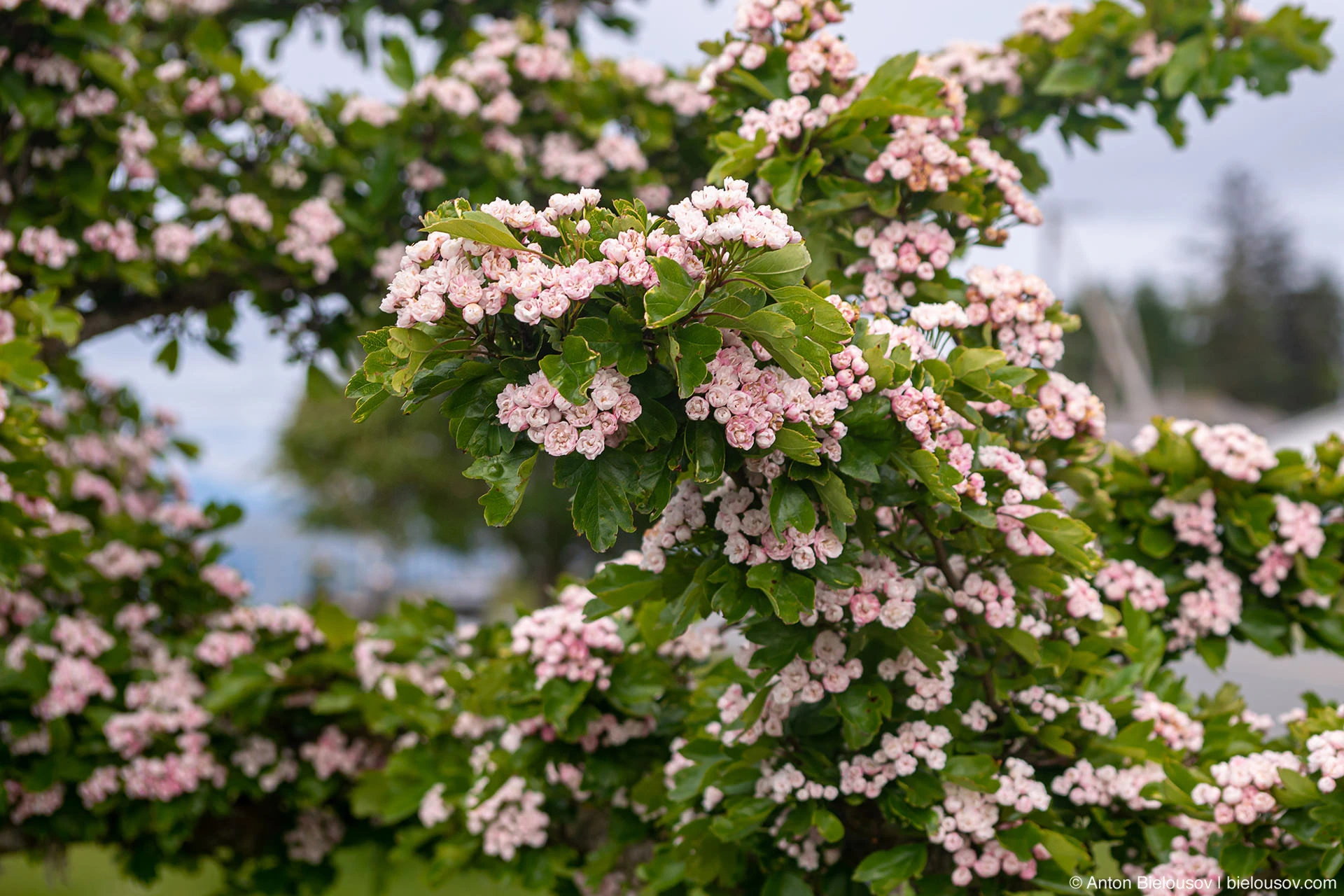 There is a "steam donkey" on the coast right near the port - such winches with a steam engine were actively used in mining wood, and the engineers who operated them were called "donkey punchers".
There is a "steam donkey" on the coast right near the port - such winches with a steam engine were actively used in mining wood, and the engineers who operated them were called "donkey punchers".
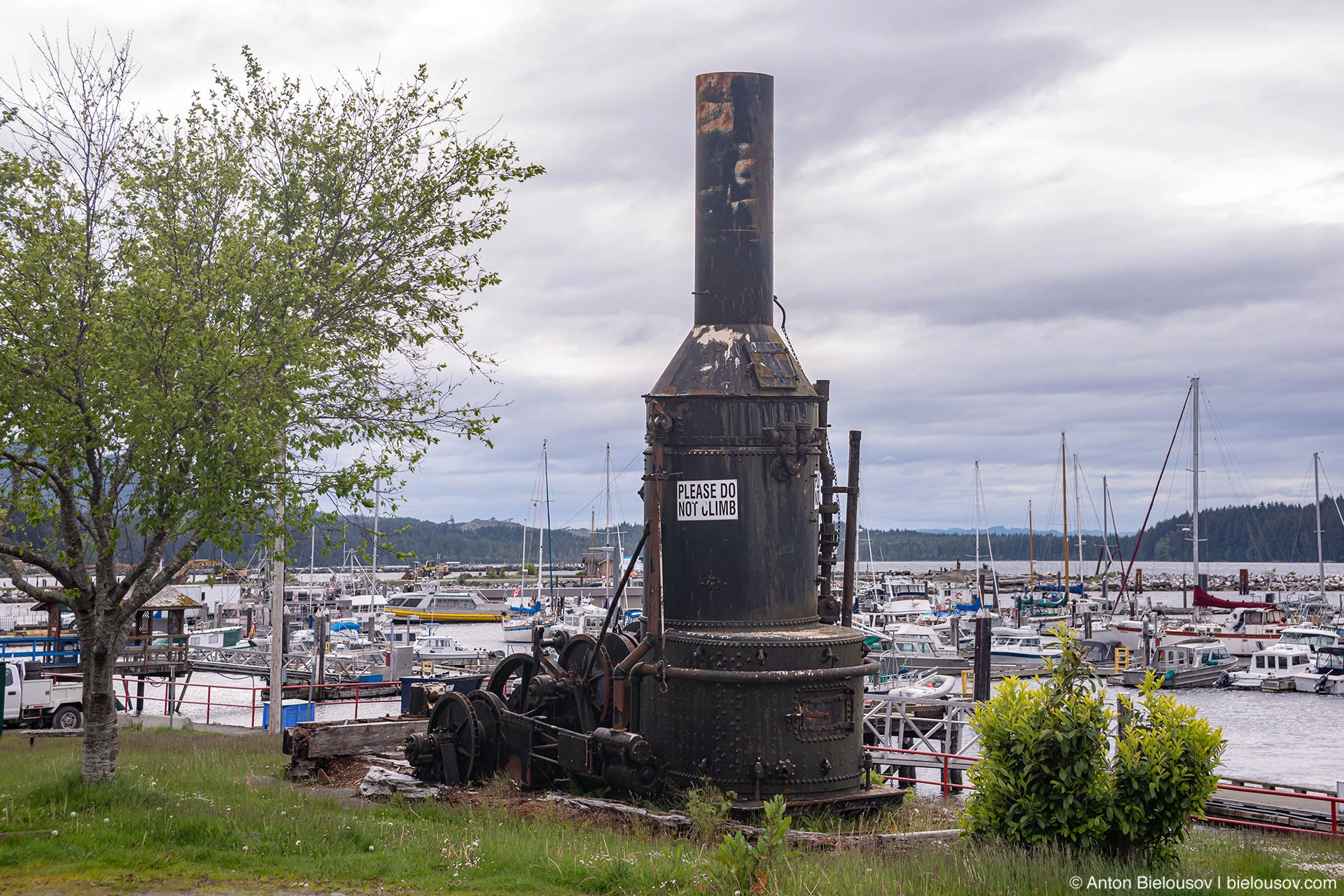 Red dresses are hanging in some houses - this is not saving on drying clothes, but such a trending project now across Canada, designed to draw public attention to the problem of Indian women who disappear or become victims of murder and violence. Accordingly, hanging the dress has become a sign of passive support.
Red dresses are hanging in some houses - this is not saving on drying clothes, but such a trending project now across Canada, designed to draw public attention to the problem of Indian women who disappear or become victims of murder and violence. Accordingly, hanging the dress has become a sign of passive support.
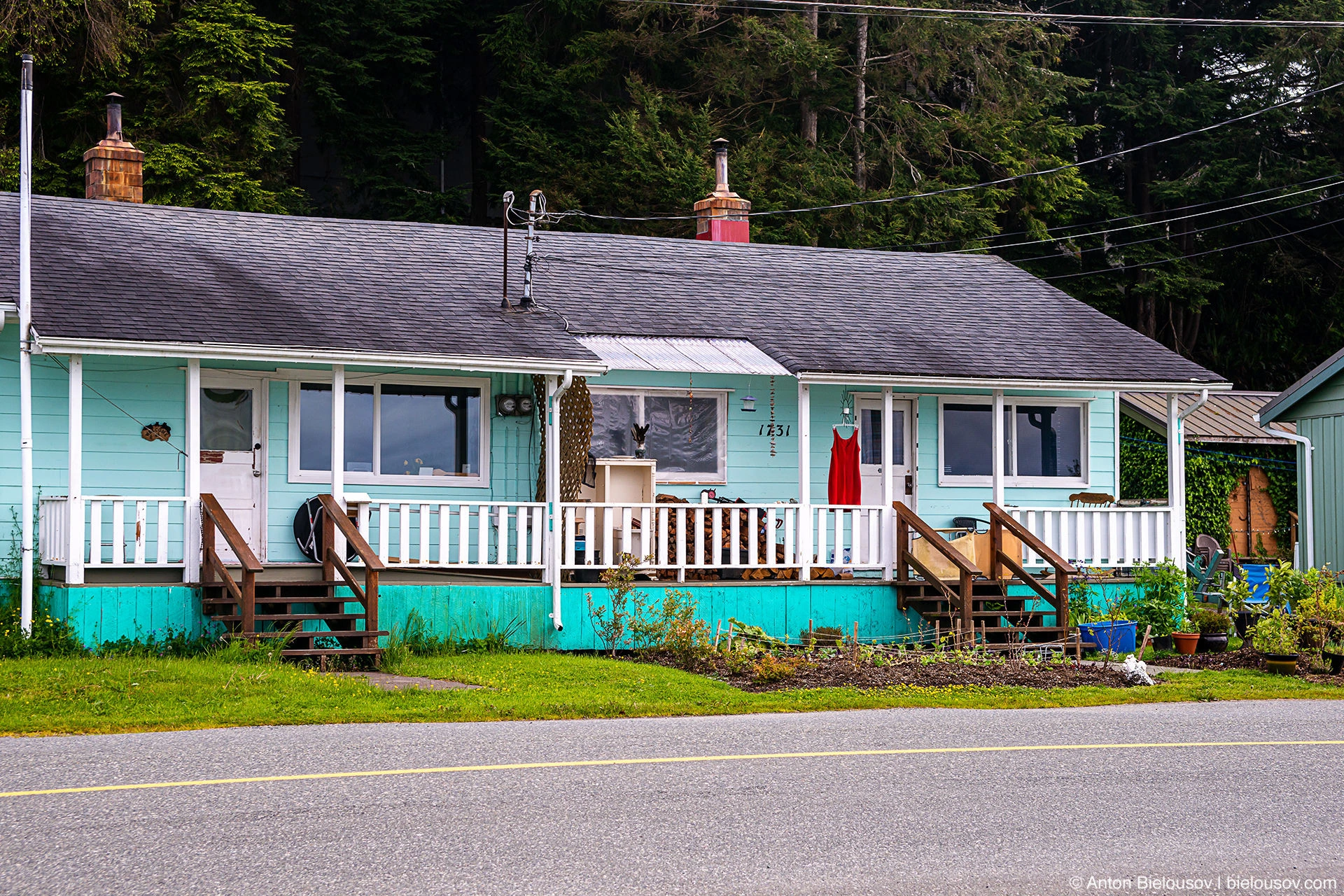 And it also turned out that here, not far away, there is the world's largest ... cap. Don't know what a cap is? I can't blame you, neither can I. This is what is known in English as "burl". Still no?
In general, this is such a callus, or rather a tumor on a tree with deformed directions of growth of wood fibers - they must have seen it a hundred times, but did not know what it was called.
And it also turned out that here, not far away, there is the world's largest ... cap. Don't know what a cap is? I can't blame you, neither can I. This is what is known in English as "burl". Still no?
In general, this is such a callus, or rather a tumor on a tree with deformed directions of growth of wood fibers - they must have seen it a hundred times, but did not know what it was called.
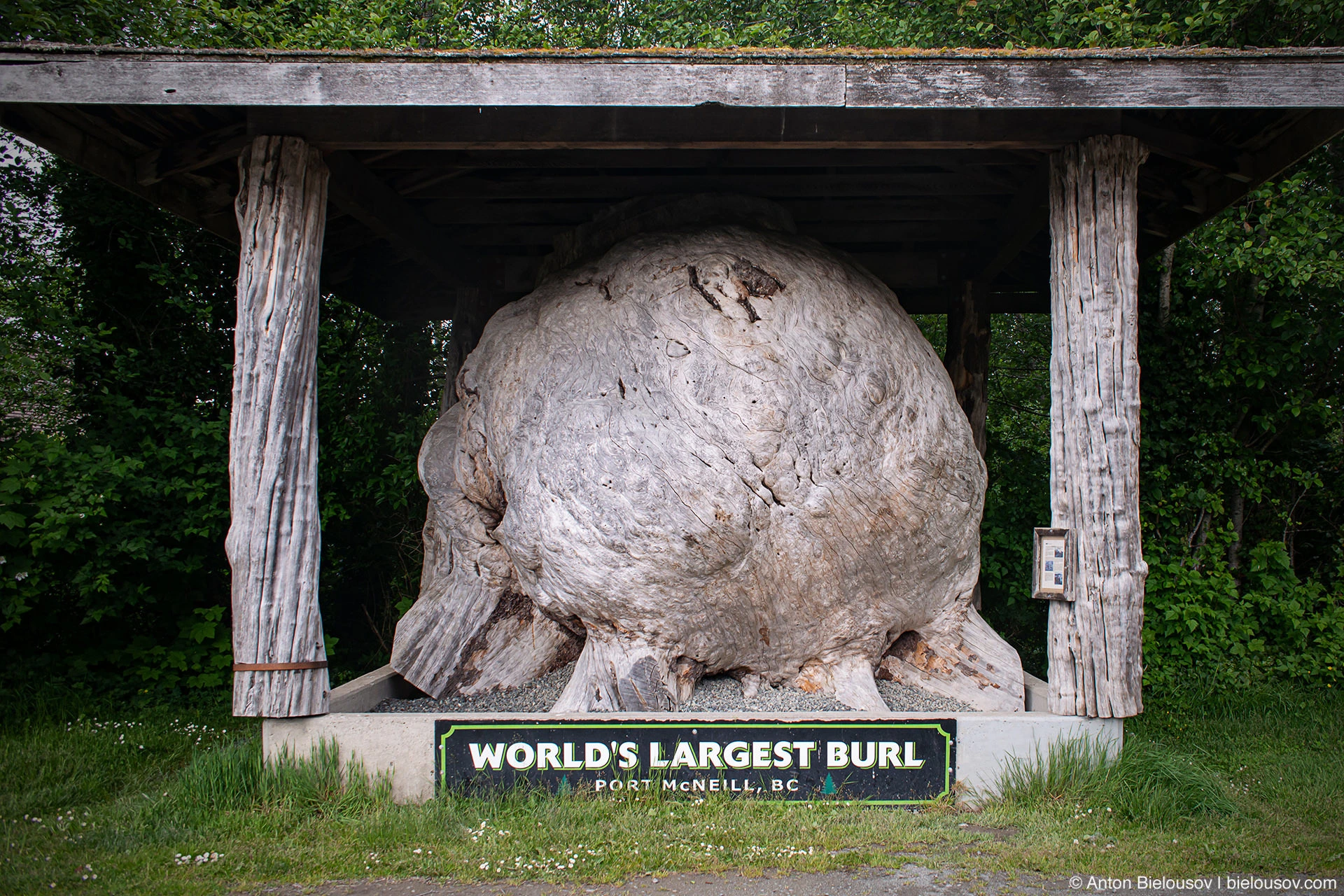 Indeed, such a large tumor.
This is the first wooden product that did not fit into my trunk (from time to time I have to carry either furniture or building materials).
Indeed, such a large tumor.
This is the first wooden product that did not fit into my trunk (from time to time I have to carry either furniture or building materials).
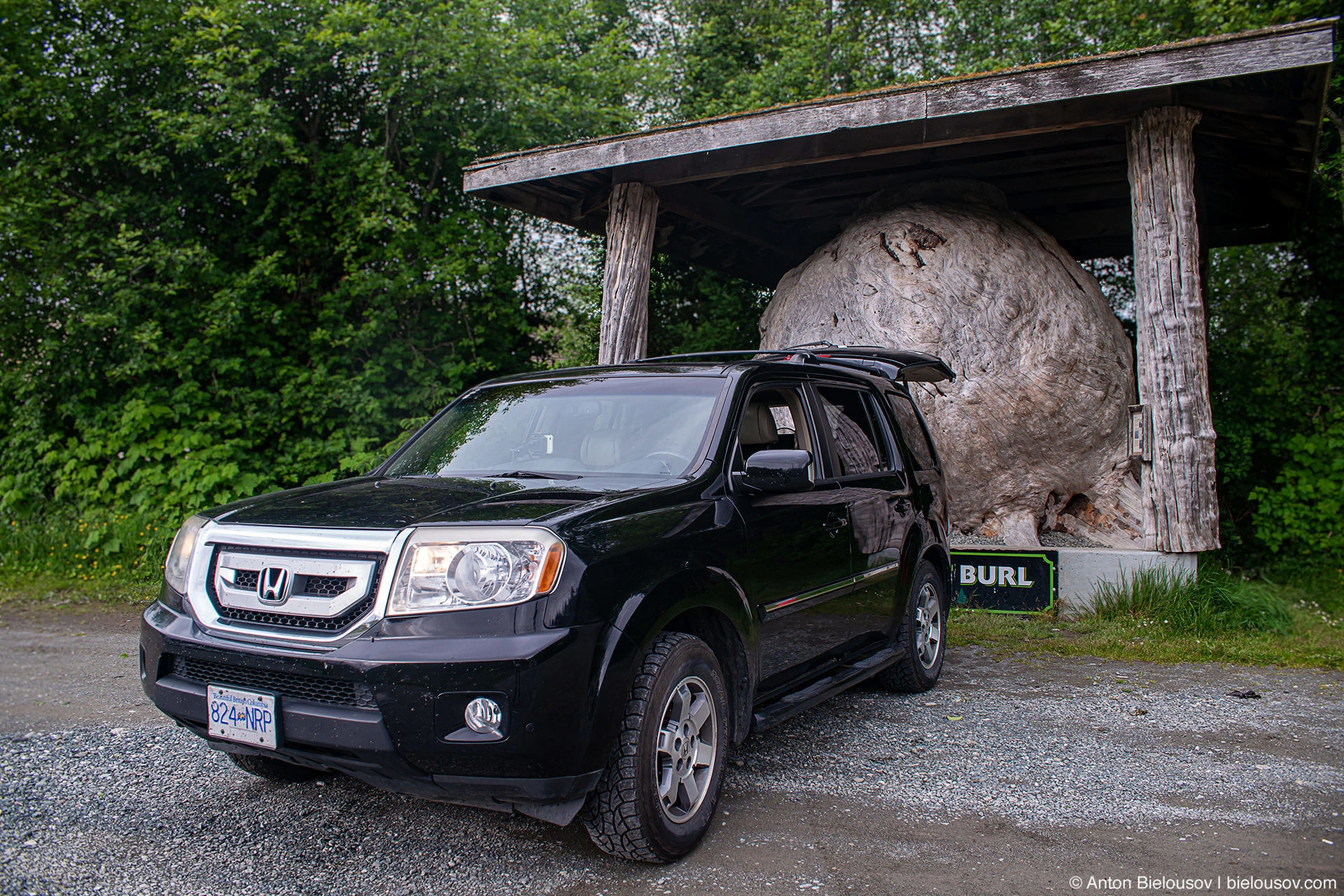 Then the ferry arrived in time. The new ship Island Aurora goes to two islands in turn: then to Malcolm, then to Alert Bay, so there is usually a ferry service in the right direction every two hours, or 6 times a day.
Then the ferry arrived in time. The new ship Island Aurora goes to two islands in turn: then to Malcolm, then to Alert Bay, so there is usually a ferry service in the right direction every two hours, or 6 times a day.
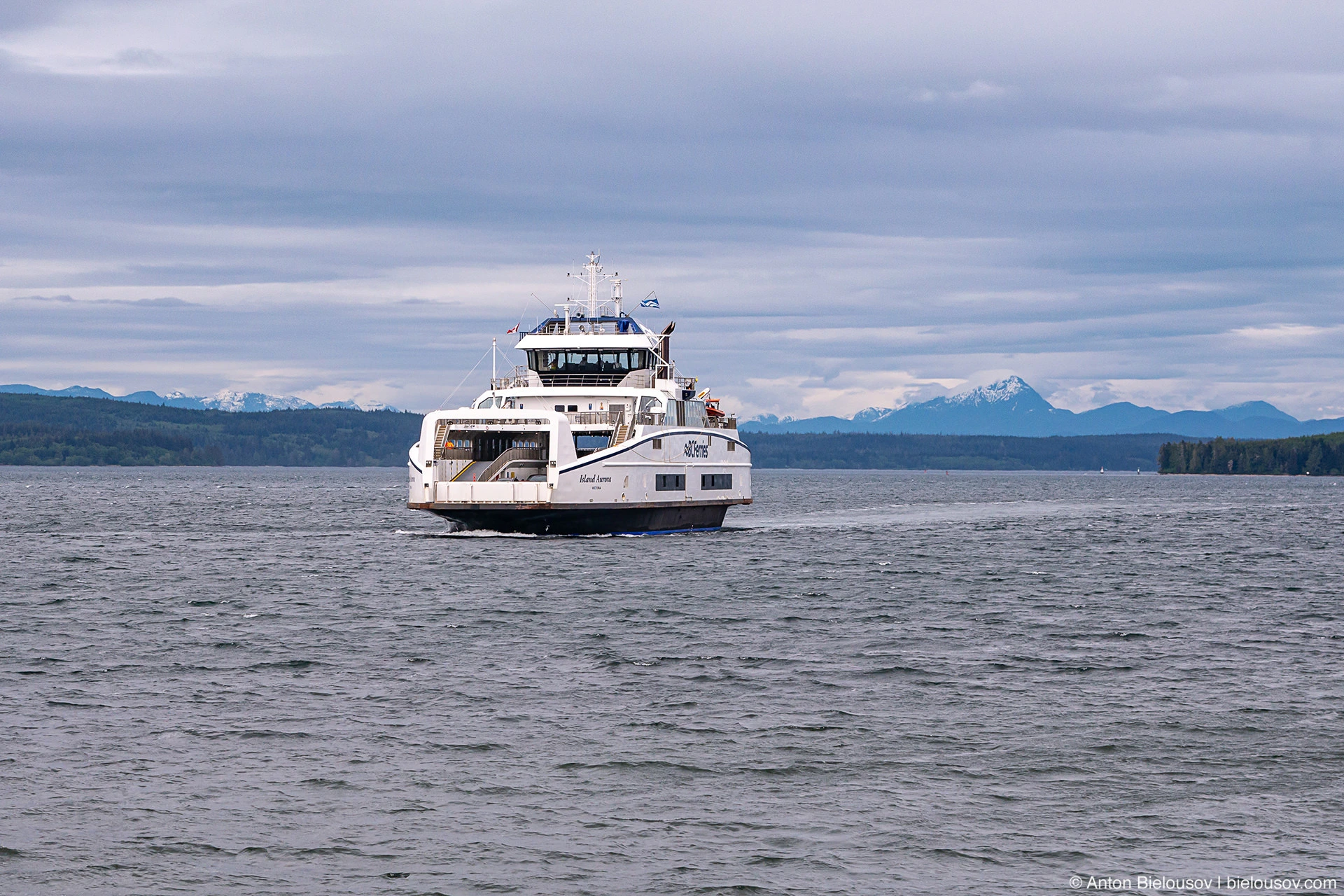 There is no such excitement for these ferries as for ferries from Vancouver, therefore, reservations are not accepted here.
On board the ferry employee said that they had just seen whales, and for weeks - dolphins, or rather porpoise. The main difference is that the latter are more likely relatives of whales.
There is no such excitement for these ferries as for ferries from Vancouver, therefore, reservations are not accepted here.
On board the ferry employee said that they had just seen whales, and for weeks - dolphins, or rather porpoise. The main difference is that the latter are more likely relatives of whales.
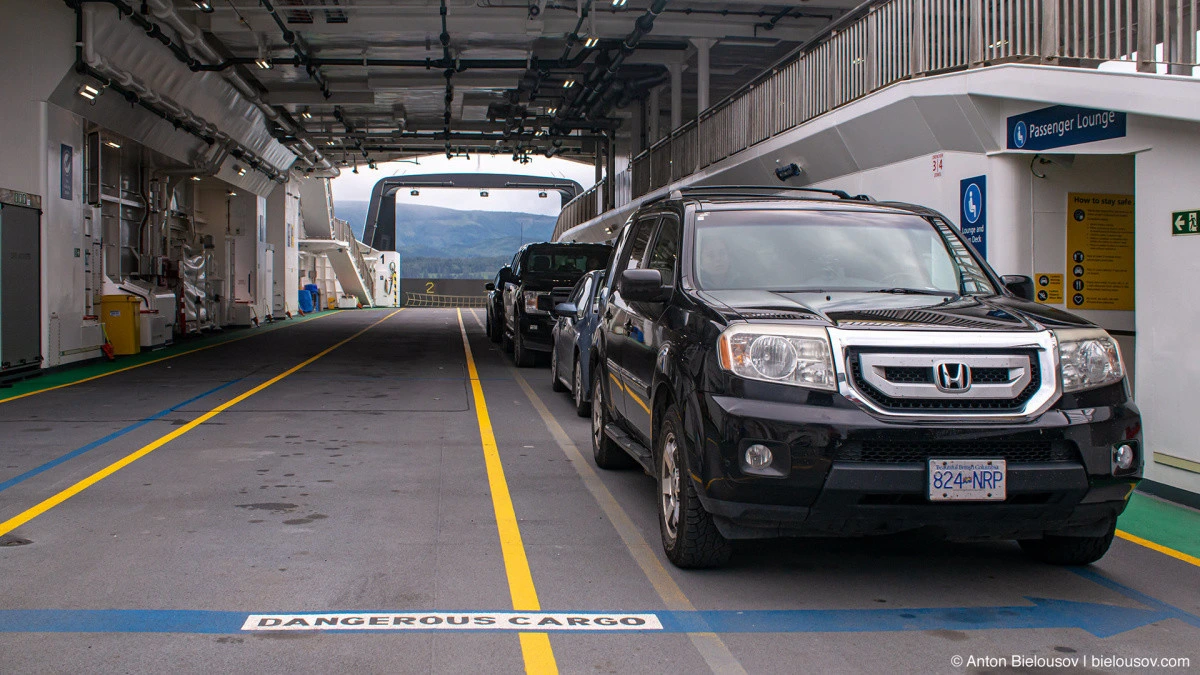 And the best views of Port McNeill, in general, are from the water.
And the best views of Port McNeill, in general, are from the water.
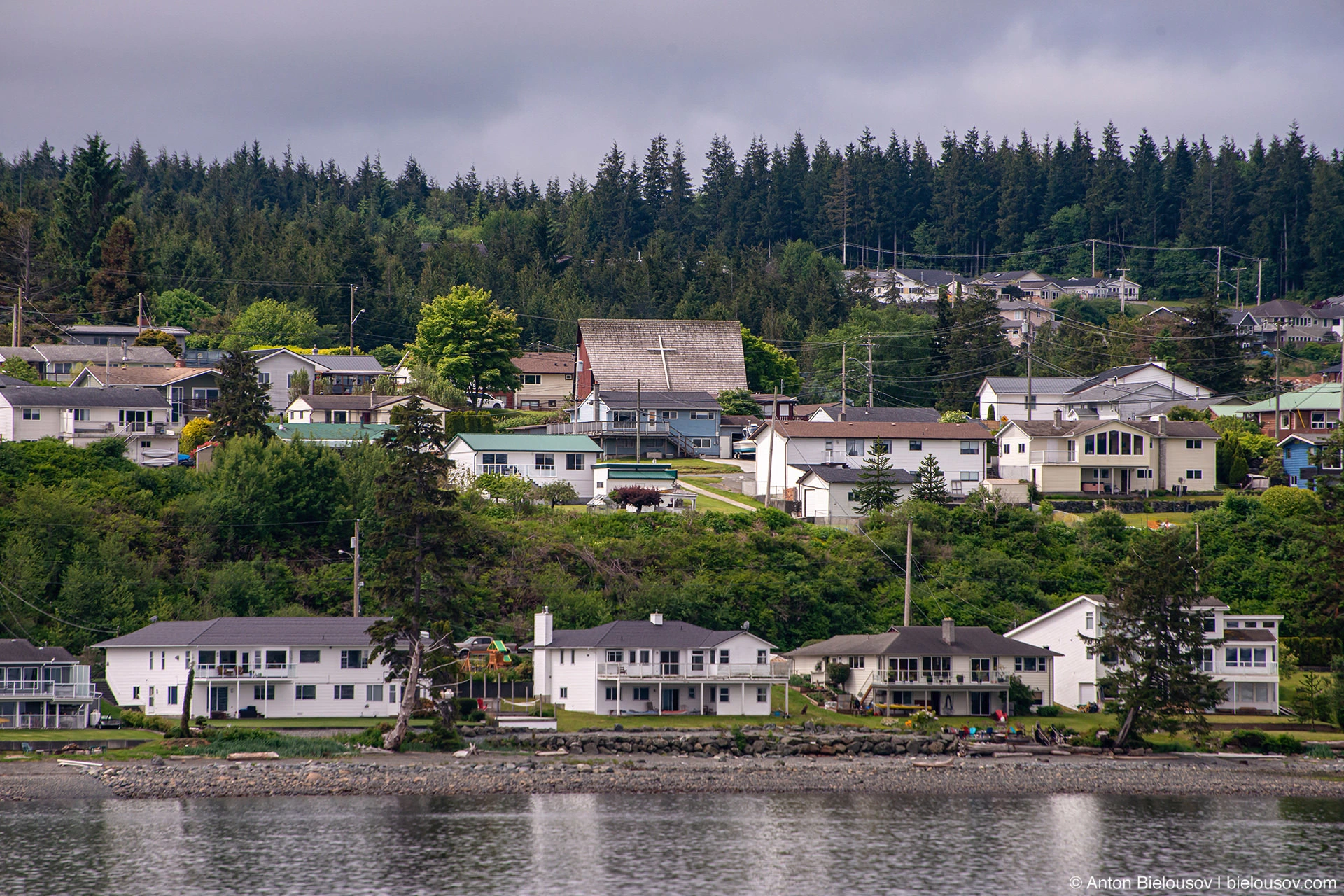 Only 20 minutes - and from the larger island we move to the smaller island.
Only 20 minutes - and from the larger island we move to the smaller island.
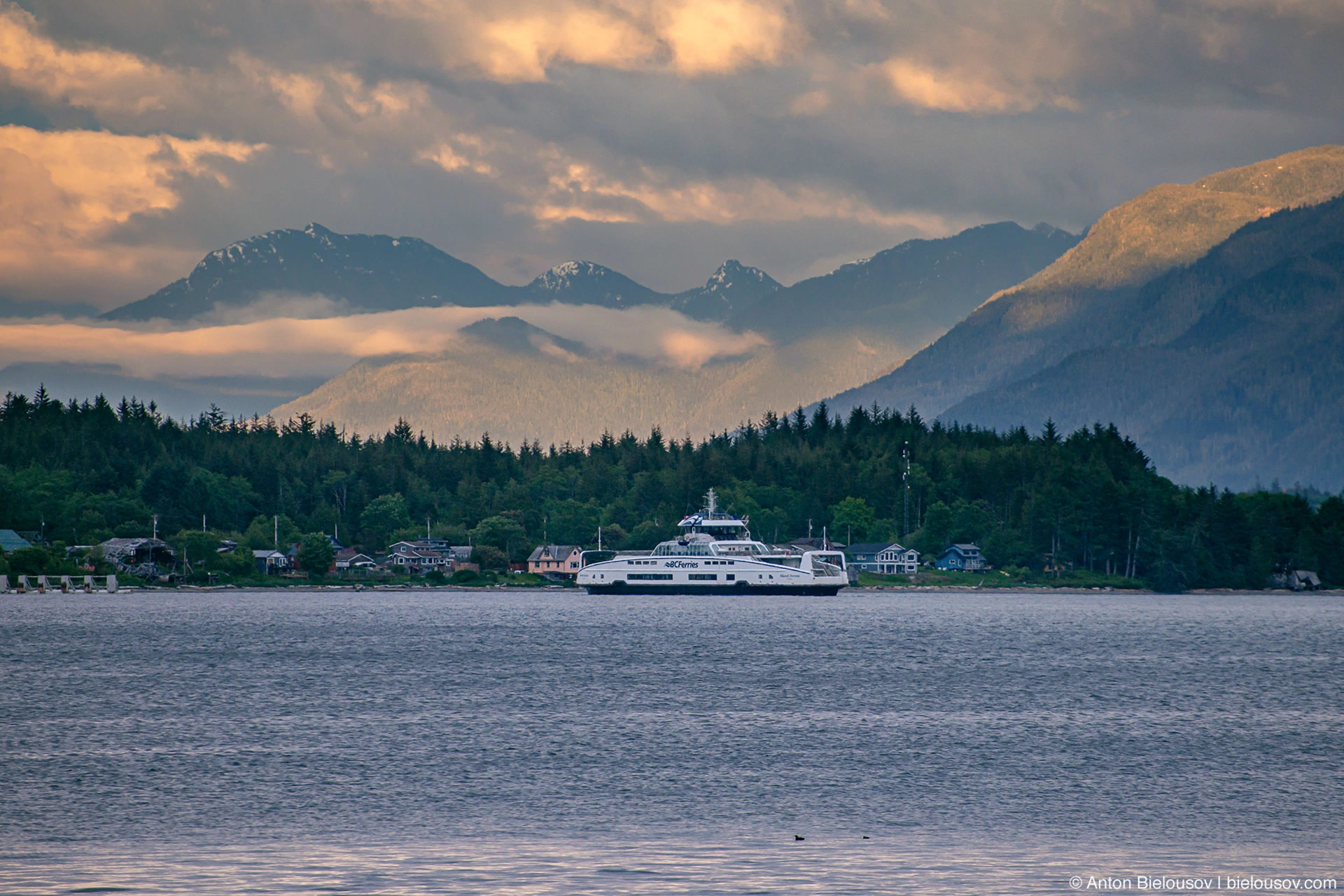 To be honest, initially I planned a trip to the east coast of Canada for this time - I even forgot all the stops and the car in Newfoundland, but the Atlantic provinces were closed due to the pandemic.
It seems to me that it was only in Soinchul that I finally recovered from the disappointment that everything had to be canceled: the desired feeling of a postcard northern seaside village was definitely obtained.
To be honest, initially I planned a trip to the east coast of Canada for this time - I even forgot all the stops and the car in Newfoundland, but the Atlantic provinces were closed due to the pandemic.
It seems to me that it was only in Soinchul that I finally recovered from the disappointment that everything had to be canceled: the desired feeling of a postcard northern seaside village was definitely obtained.
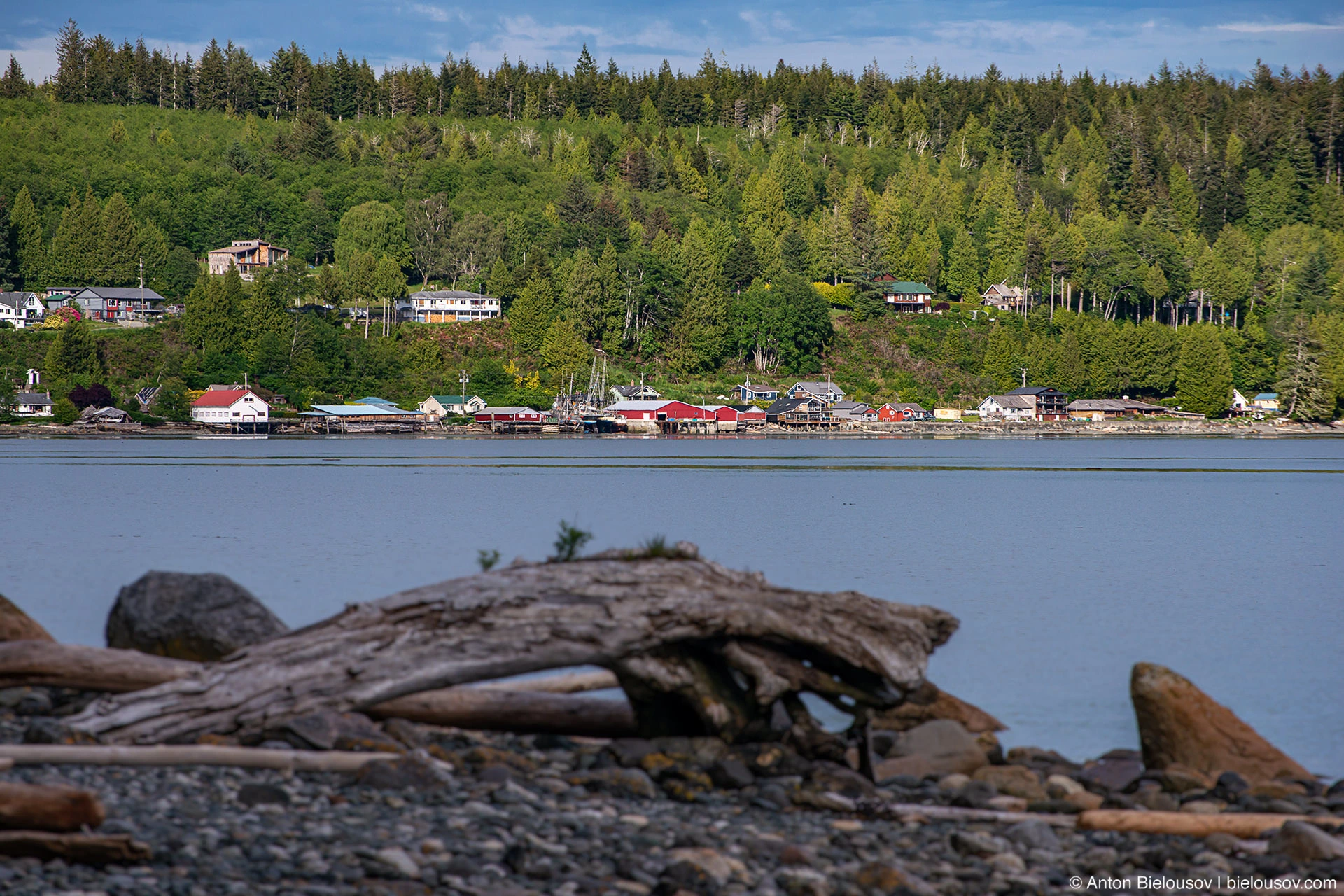 This settlement was founded in 1901 by a group of Finnish communists and its name, translated from Finnish Soinchula, means "Place of Harmony".
This settlement was founded in 1901 by a group of Finnish communists and its name, translated from Finnish Soinchula, means "Place of Harmony".
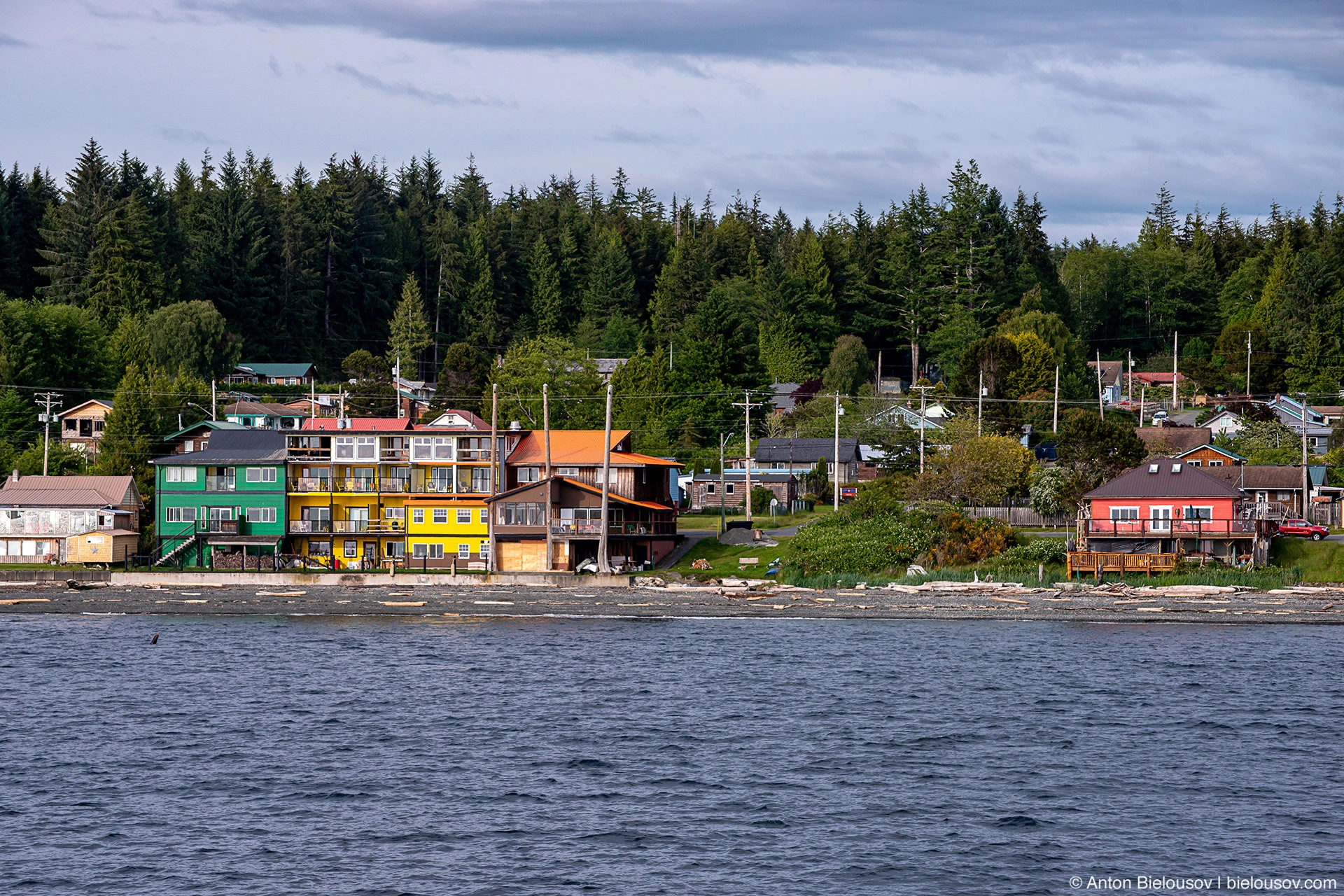 The goal of the settlers was to build an ideal socialist society.
The goal of the settlers was to build an ideal socialist society.
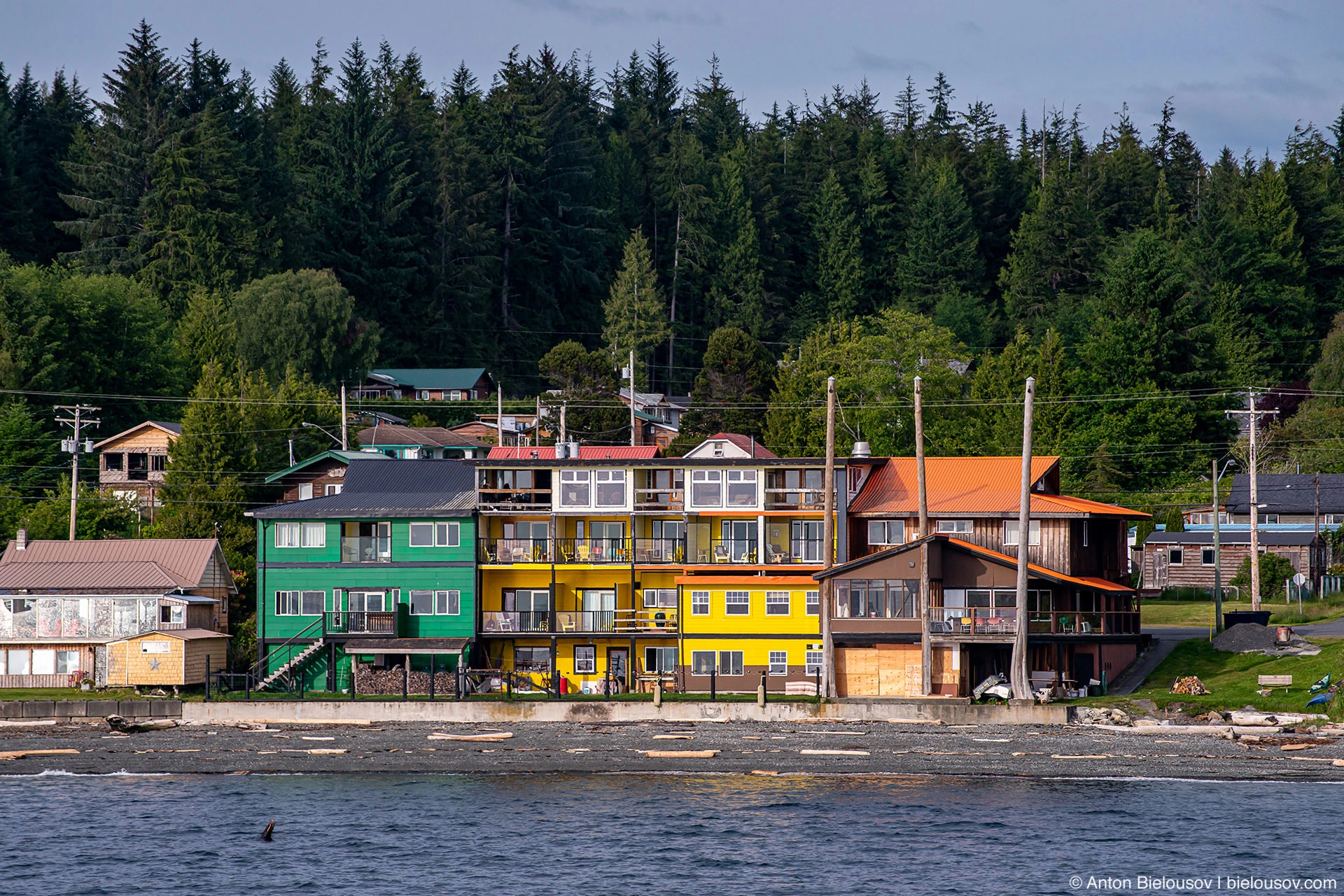 As you can see, socialism did not work out again - capitalism and entropy, as always, won.
As you can see, socialism did not work out again - capitalism and entropy, as always, won.
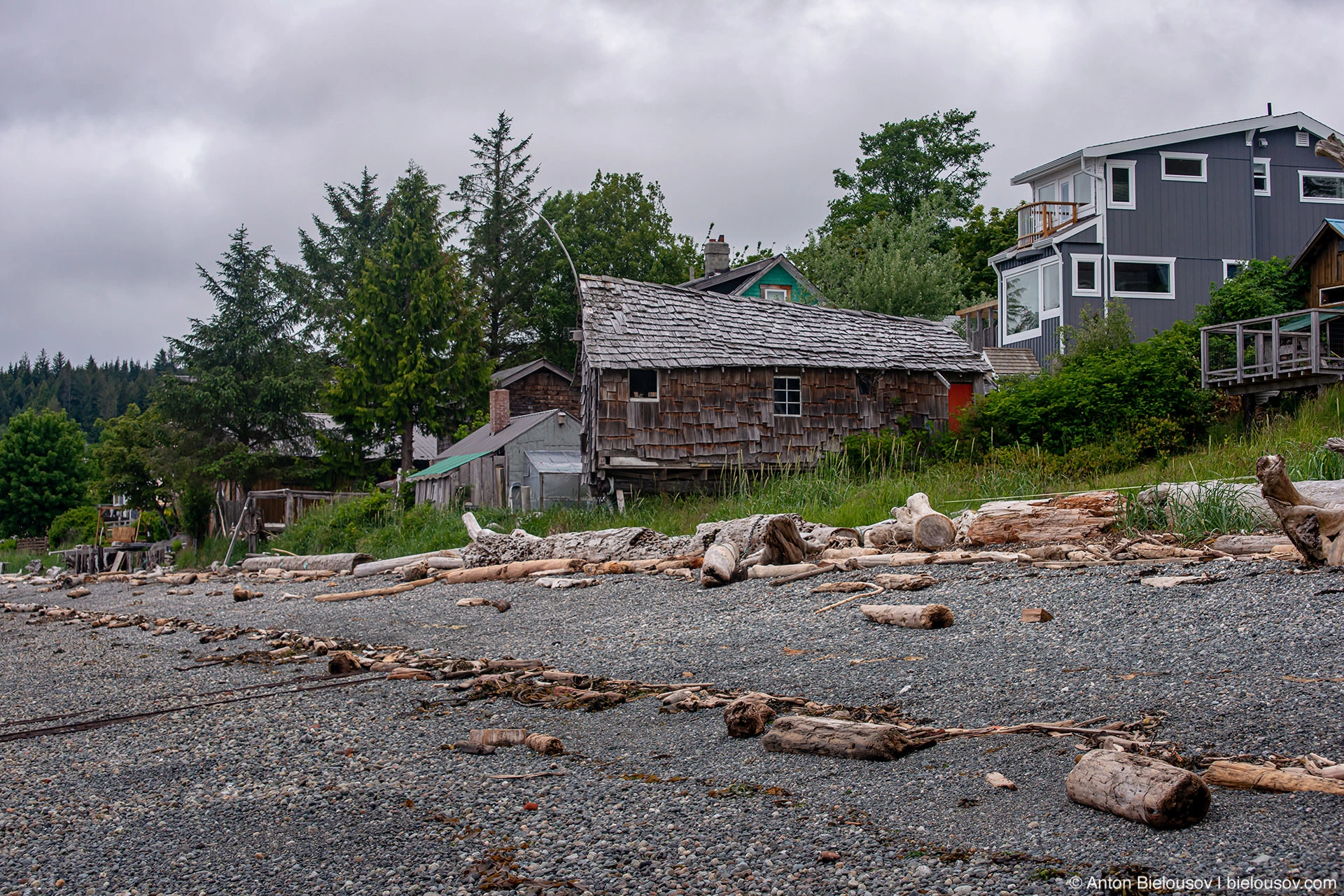 The first thing you notice when you get off the ferry to the shore is that the people in Soinchul are completely different. Do you know how in Canada, and in the States, too, everyone greets and smiles when they meet? So here they are not just saying hello, but actively waving their hands in greeting - it seems that if it were not for the pandemic, they would have run to hug at all.
The first thing you notice when you get off the ferry to the shore is that the people in Soinchul are completely different. Do you know how in Canada, and in the States, too, everyone greets and smiles when they meet? So here they are not just saying hello, but actively waving their hands in greeting - it seems that if it were not for the pandemic, they would have run to hug at all.
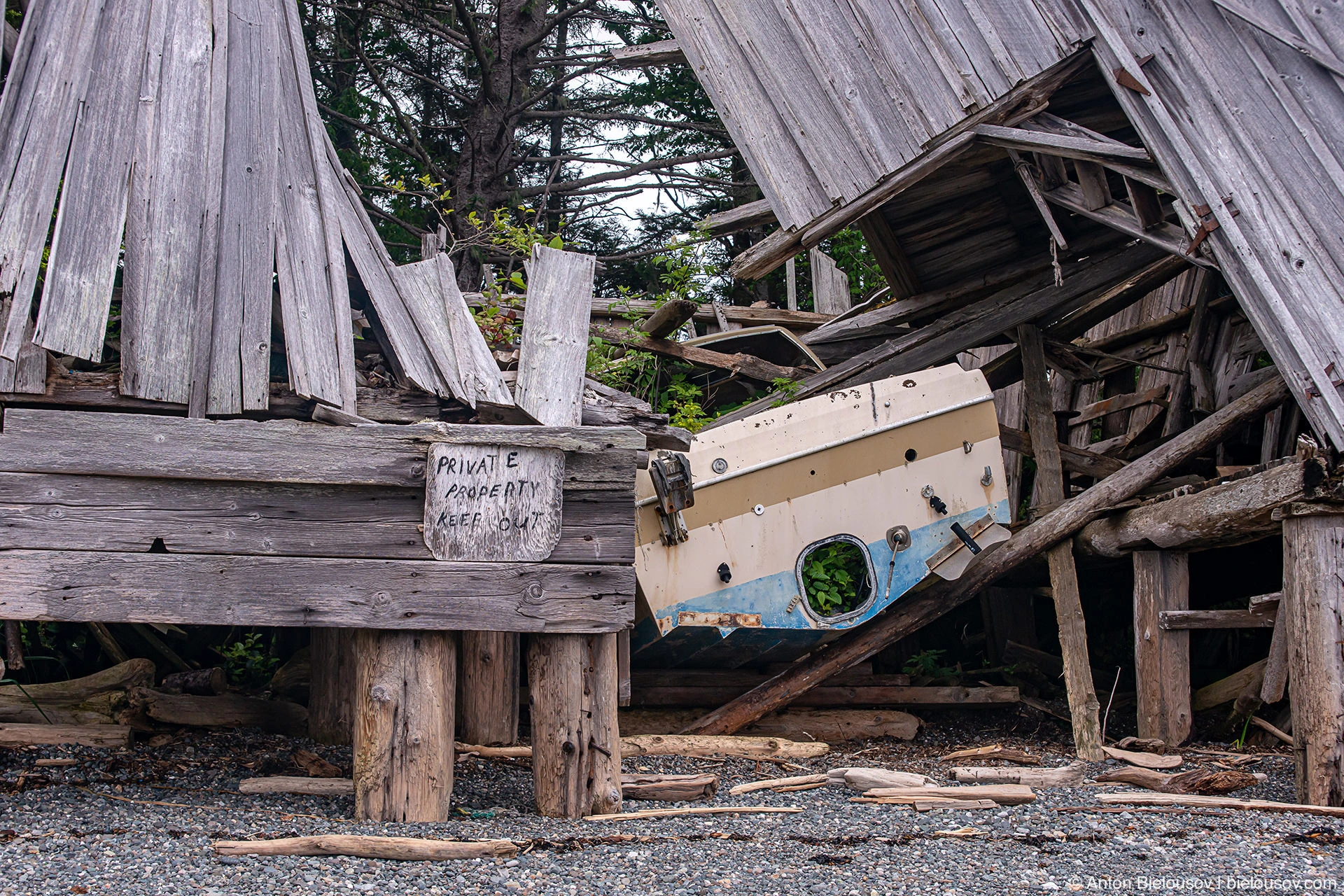 There is a fire station here, but it contains some booze from the village shop next door. I would understand even if pies or dried mushrooms - stew the sea blue.
There is a fire station here, but it contains some booze from the village shop next door. I would understand even if pies or dried mushrooms - stew the sea blue.
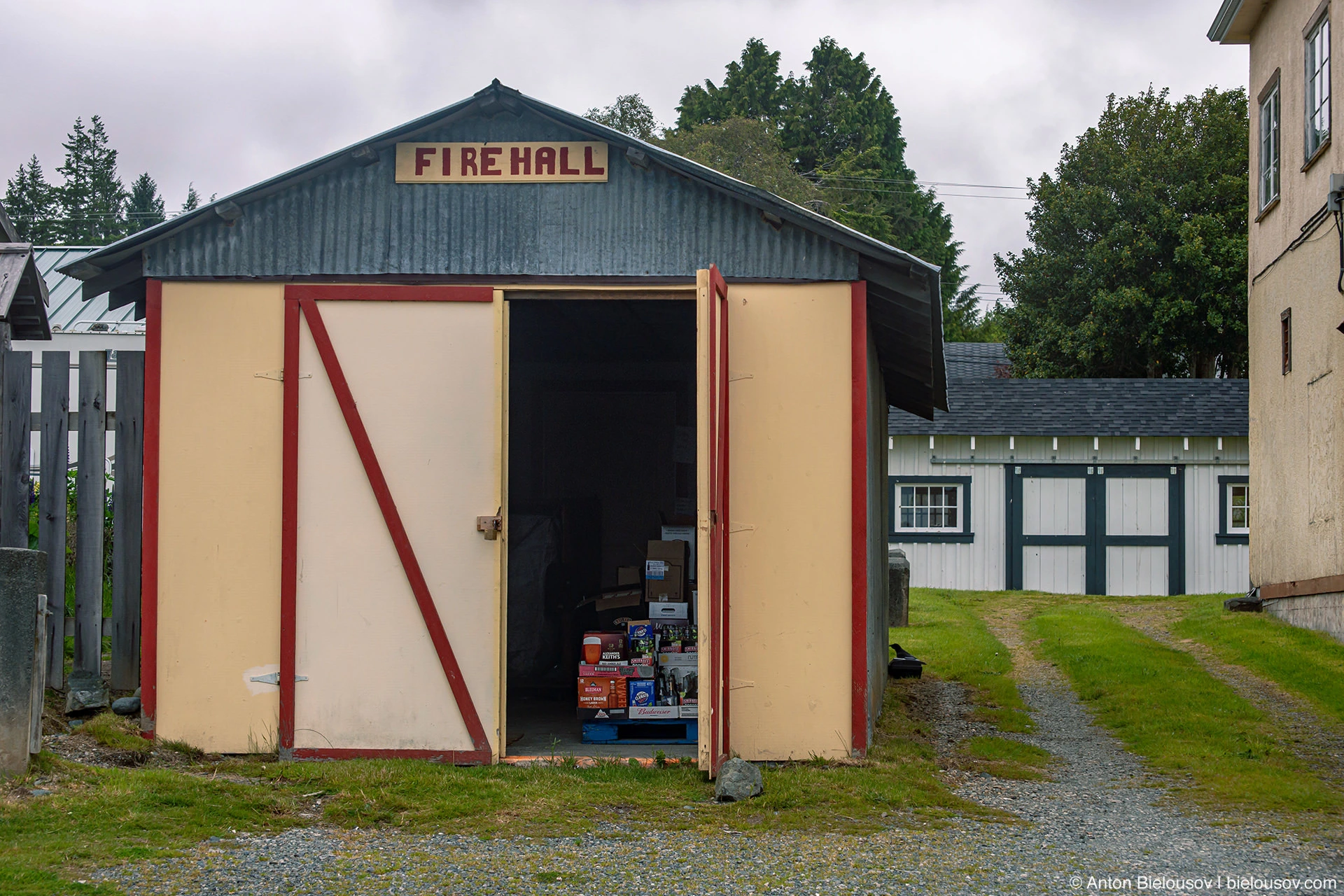 There are signs showing directions to the police station, but not ... the police station itself.
There are less than 2 kilometers of asphalt roads on the island (all of them are in Soinchul), with its approximate size of 24 km × 3 km (in the narrowest place, on the neck of the "cat"), which, among other things, did not prevent someone from coming here on a Porsche.
Typical road on the island. These are to my taste - coming here you can immediately relieve the pressure in the tires and not pump up until the very departure.
There are signs showing directions to the police station, but not ... the police station itself.
There are less than 2 kilometers of asphalt roads on the island (all of them are in Soinchul), with its approximate size of 24 km × 3 km (in the narrowest place, on the neck of the "cat"), which, among other things, did not prevent someone from coming here on a Porsche.
Typical road on the island. These are to my taste - coming here you can immediately relieve the pressure in the tires and not pump up until the very departure.
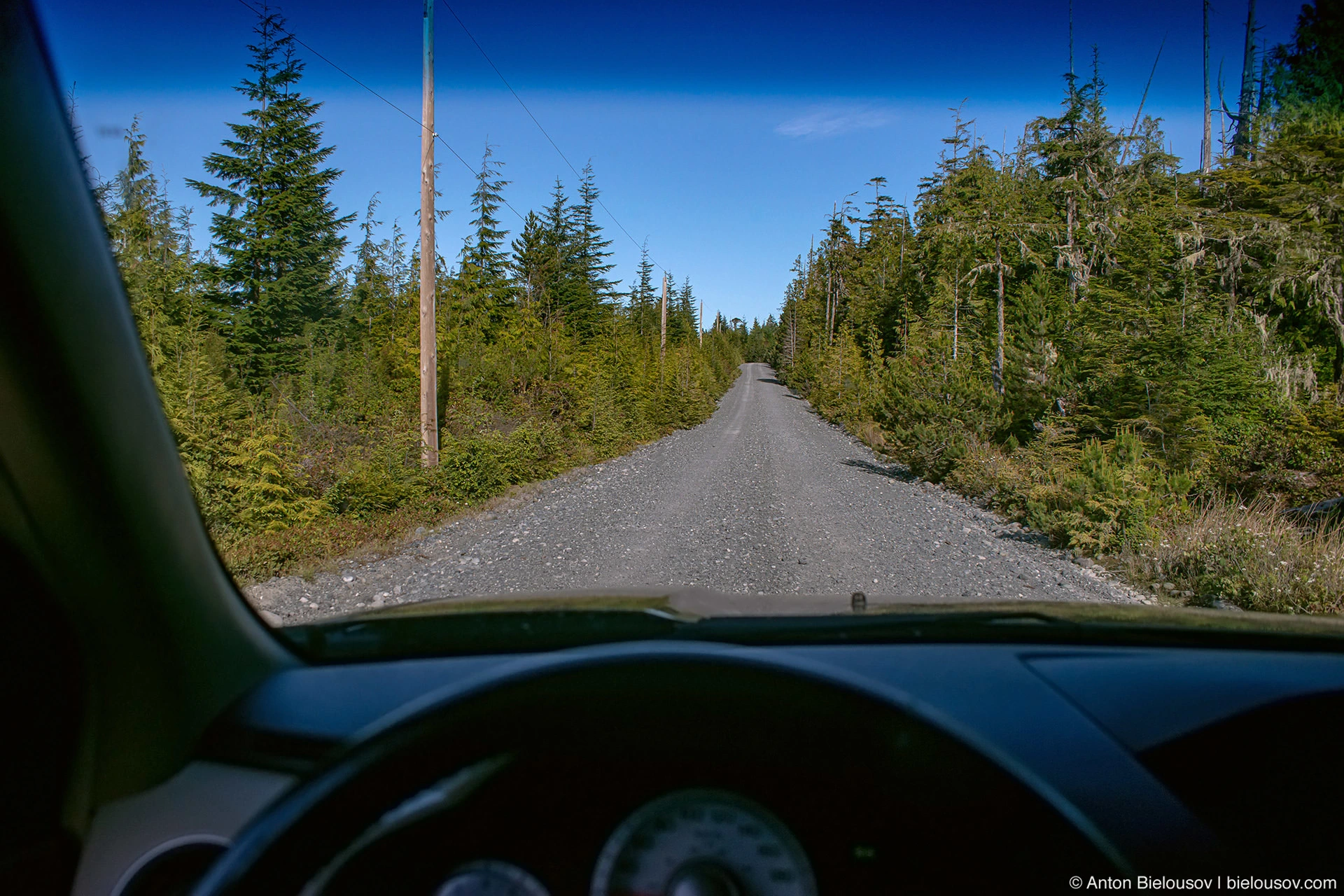 True, other passengers in line for the ferry were very worried thinking that I was broken (my compressor is connected directly to the battery) - they did not see this here.
True, other passengers in line for the ferry were very worried thinking that I was broken (my compressor is connected directly to the battery) - they did not see this here.
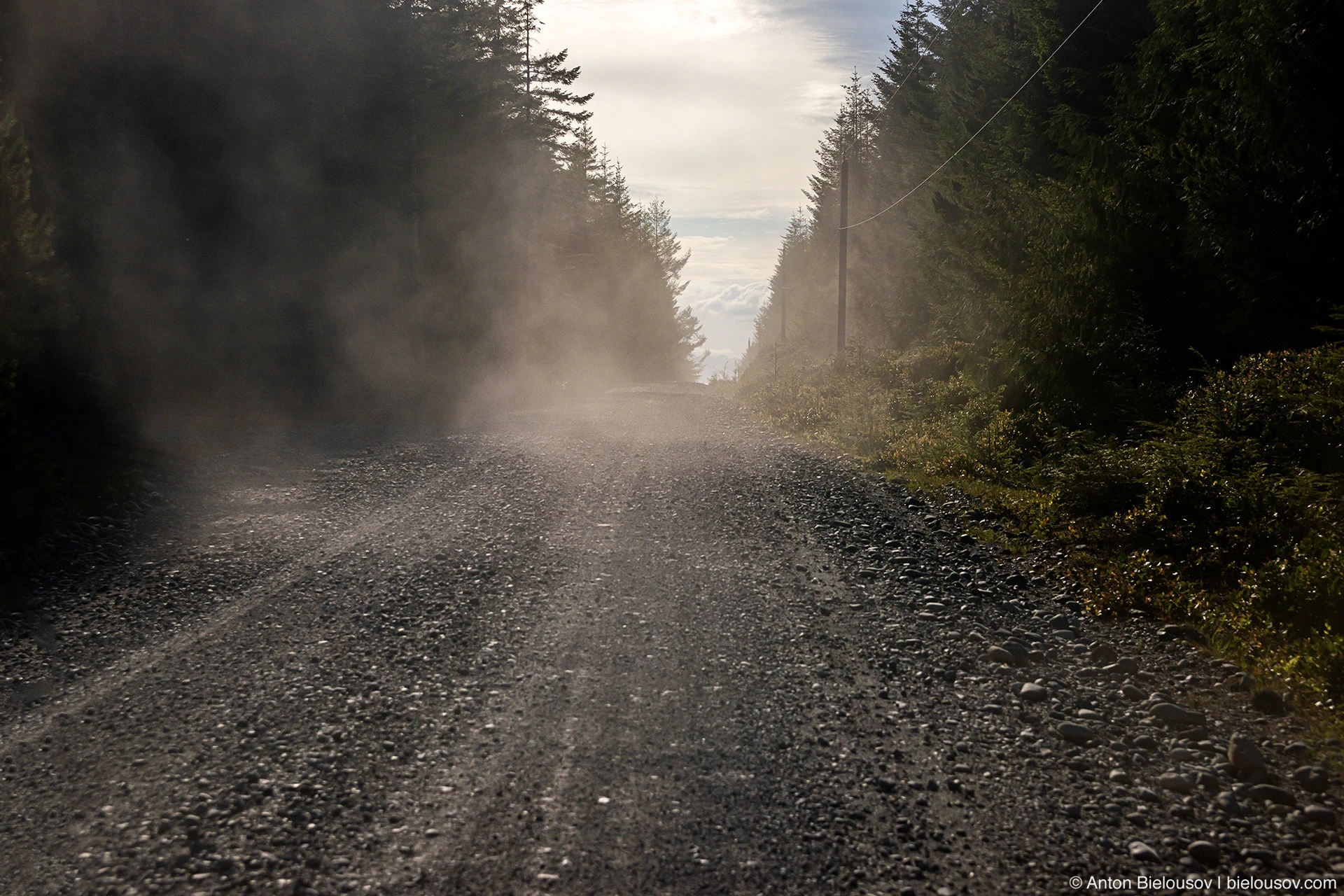 You can drive the entire island across - from one far side to the other.
There is a lighthouse on the west side - Lighthouse Pulteney Point
You can drive the entire island across - from one far side to the other.
There is a lighthouse on the west side - Lighthouse Pulteney Point
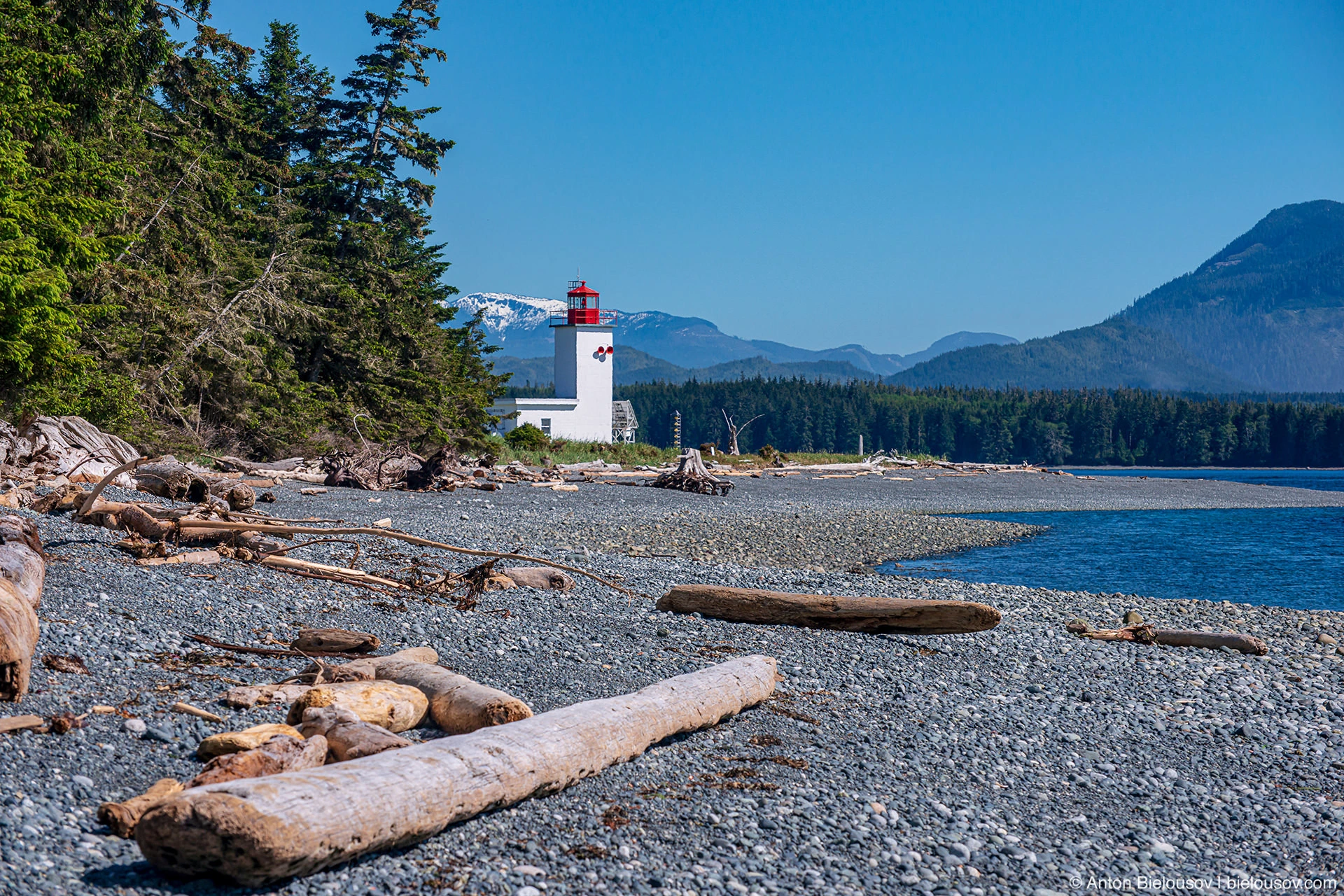 Flags at half-mast in connection with the recent discovery of a large burial of children from a century ago on the grounds of an Indian boarding school.
Flags at half-mast in connection with the recent discovery of a large burial of children from a century ago on the grounds of an Indian boarding school.
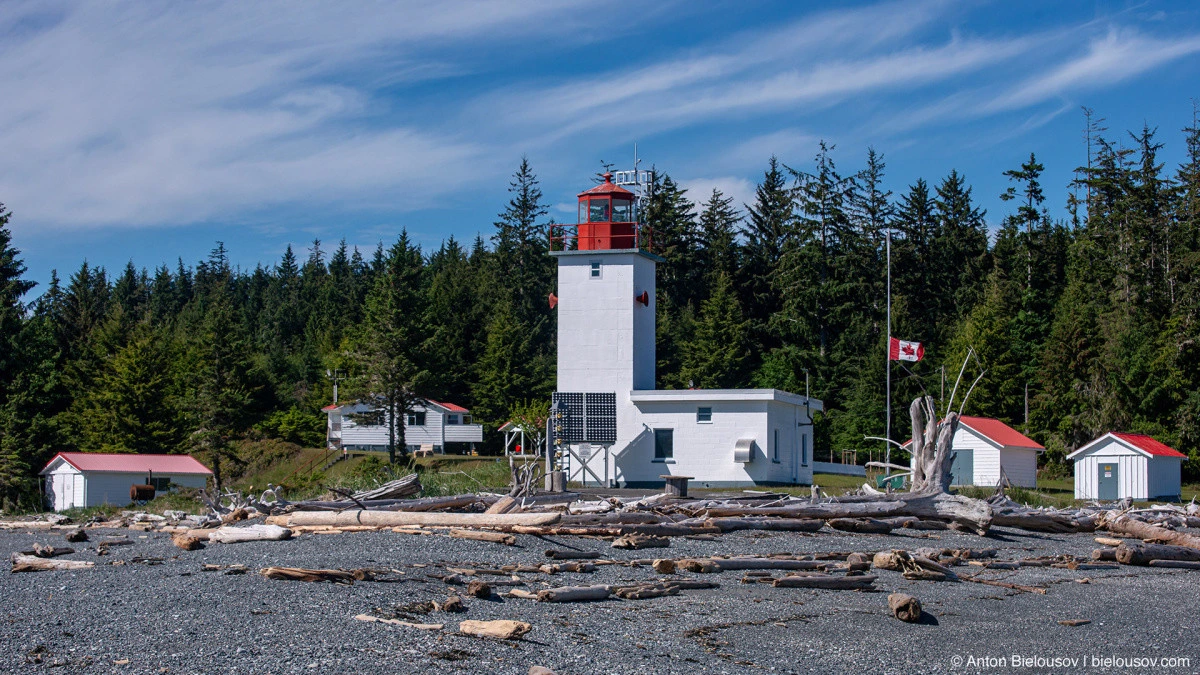 And so basically, of course, all the pleasure from Malcolm's Island you get not from what is here, but from what is not here - people.
And so basically, of course, all the pleasure from Malcolm's Island you get not from what is here, but from what is not here - people.
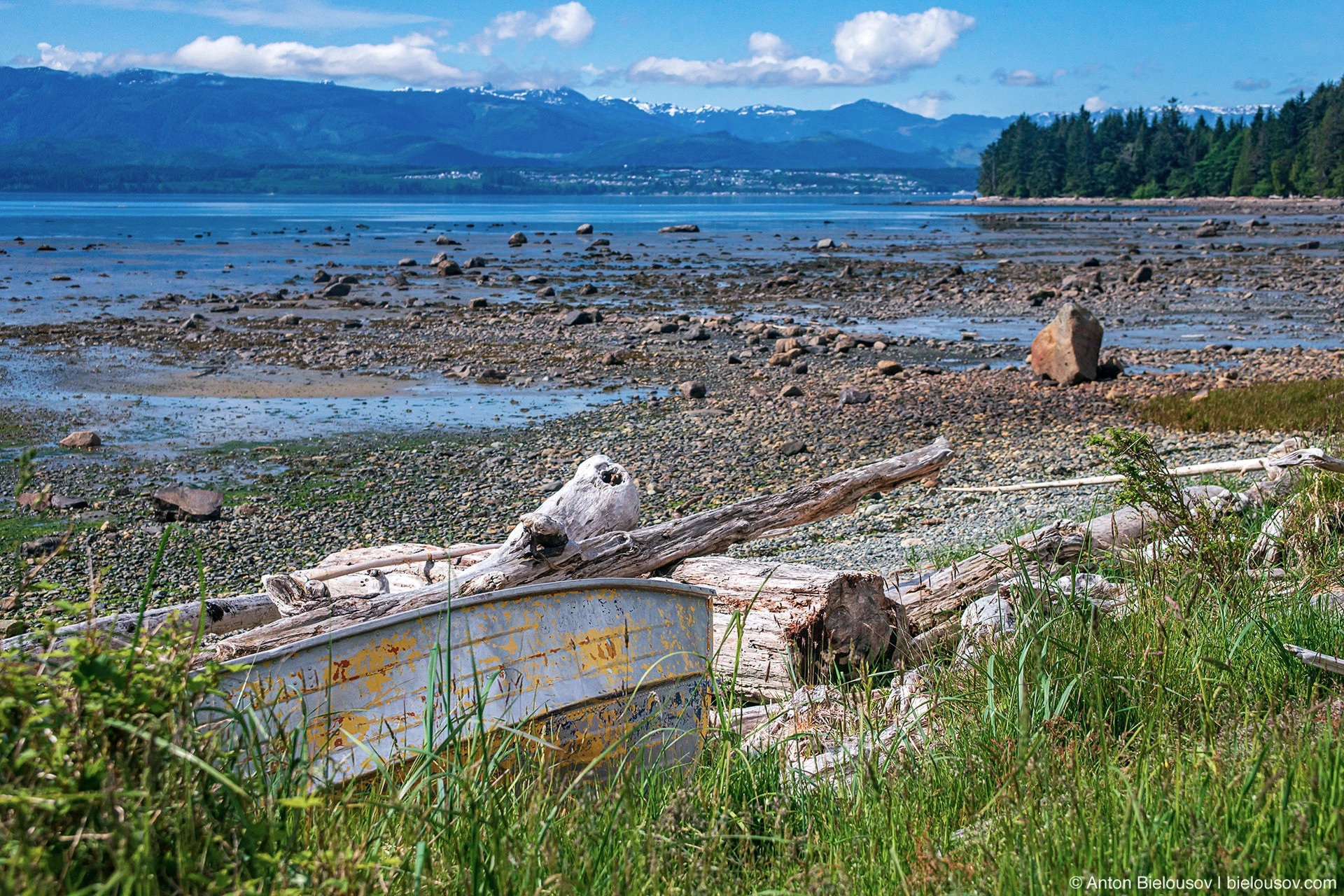 One of my first admiring Instagram posts (subscribe to the new channel) was about how we walked along the beach all day and did not meet literally a single person.
One of my first admiring Instagram posts (subscribe to the new channel) was about how we walked along the beach all day and did not meet literally a single person.
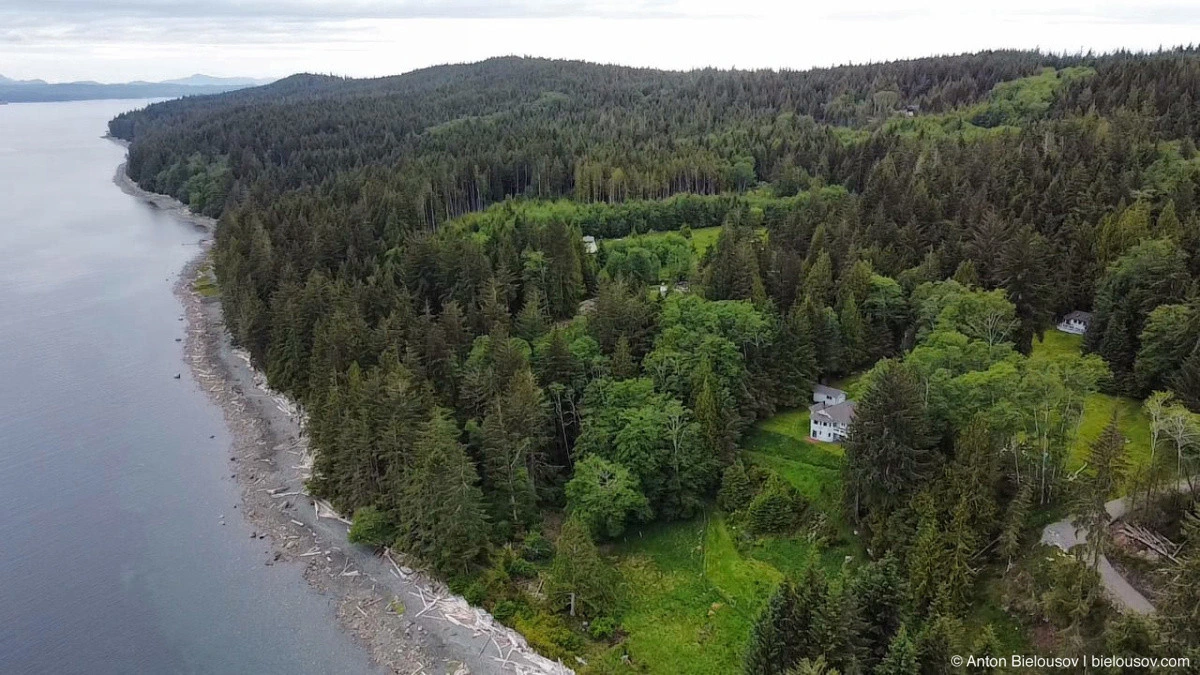 Well, the next evening we went the other way - and again no one.
Well, the next evening we went the other way - and again no one.
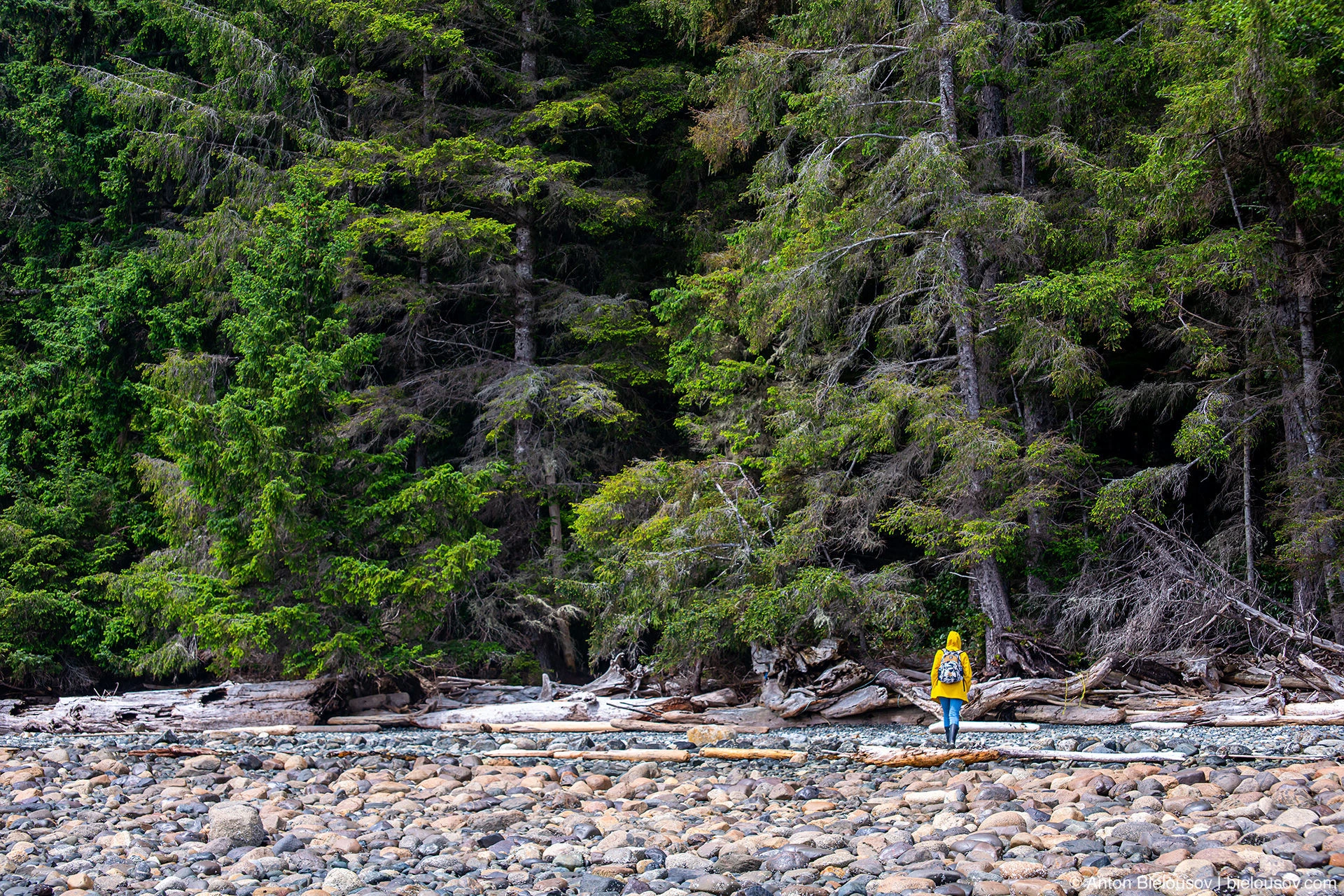 And this is never an exaggeration.
And this is never an exaggeration.
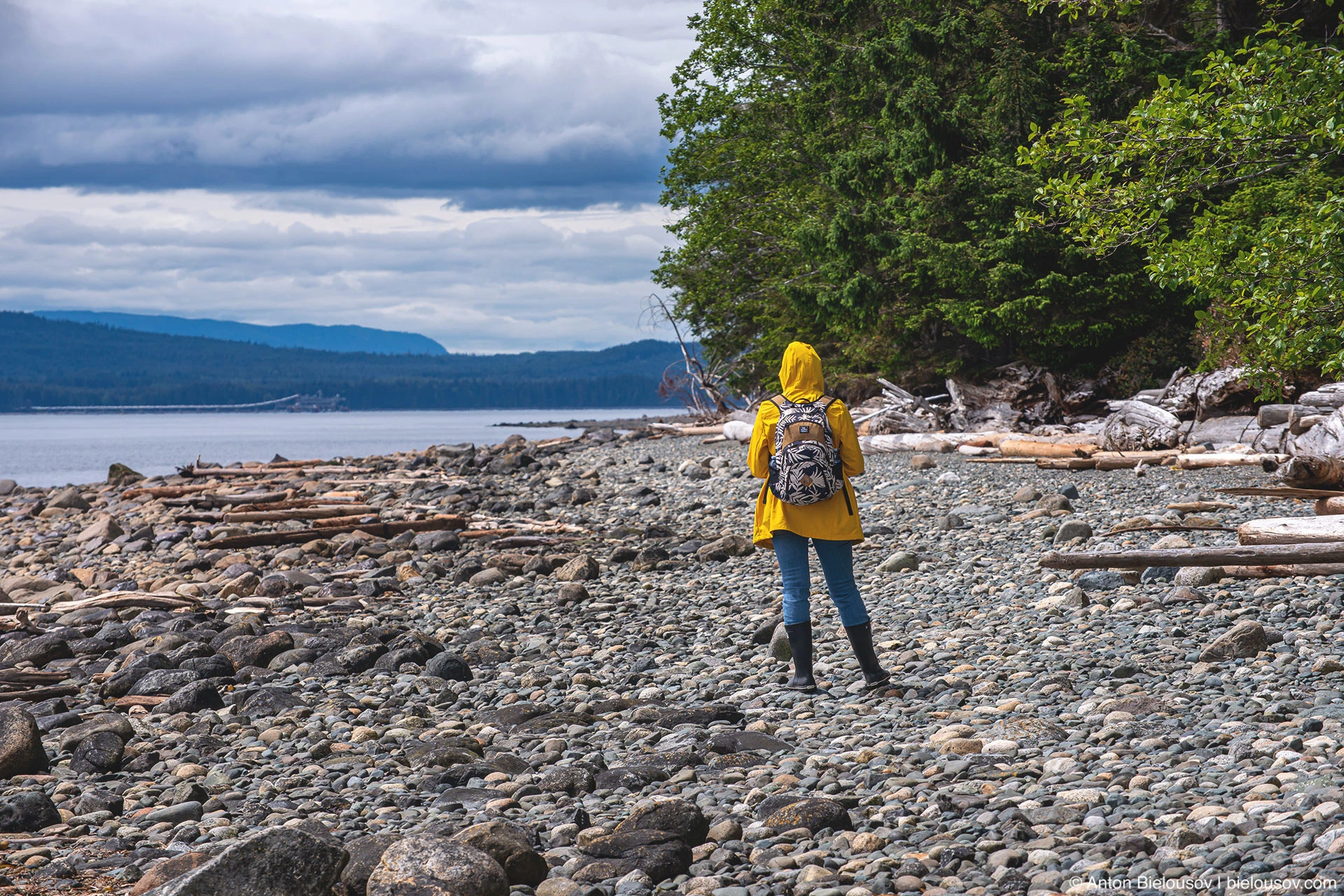 Perhaps the local beaches are not the most amazing in terms of beachcombing, but what is needed for reflection.
Perhaps the local beaches are not the most amazing in terms of beachcombing, but what is needed for reflection.
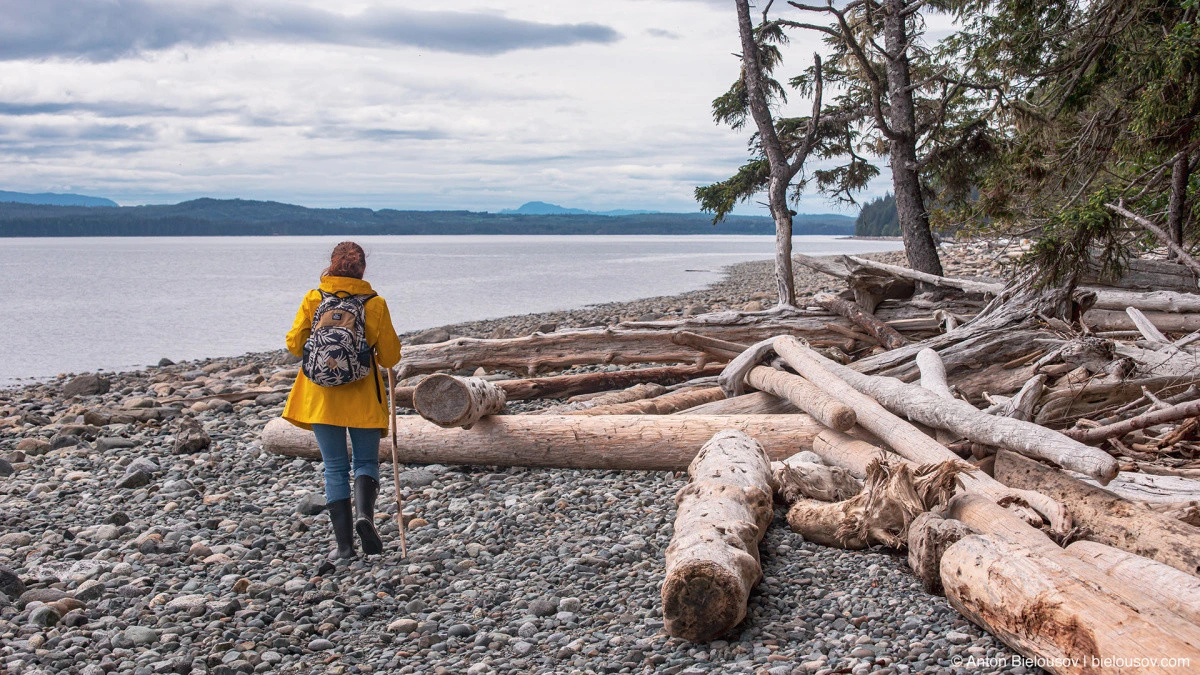 The beaches are very clean. Perhaps even too much. The National Parks in Washington DC are a dump by comparison.
The beaches are very clean. Perhaps even too much. The National Parks in Washington DC are a dump by comparison.
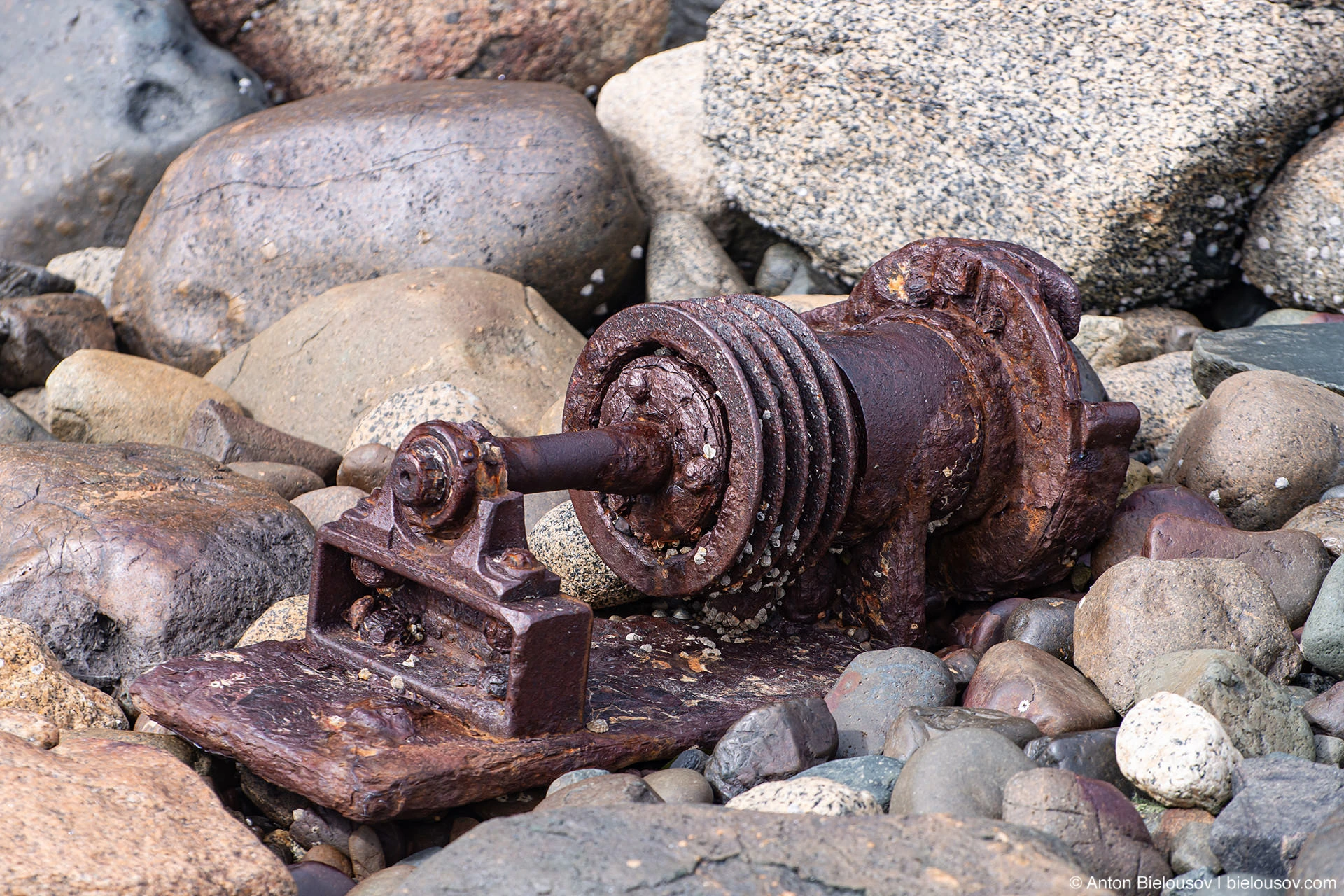 I came across quite a bit of rusty equipment, all from local artifacts.
I came across quite a bit of rusty equipment, all from local artifacts.
 Yes, all kinds of algae.
Yes, all kinds of algae.
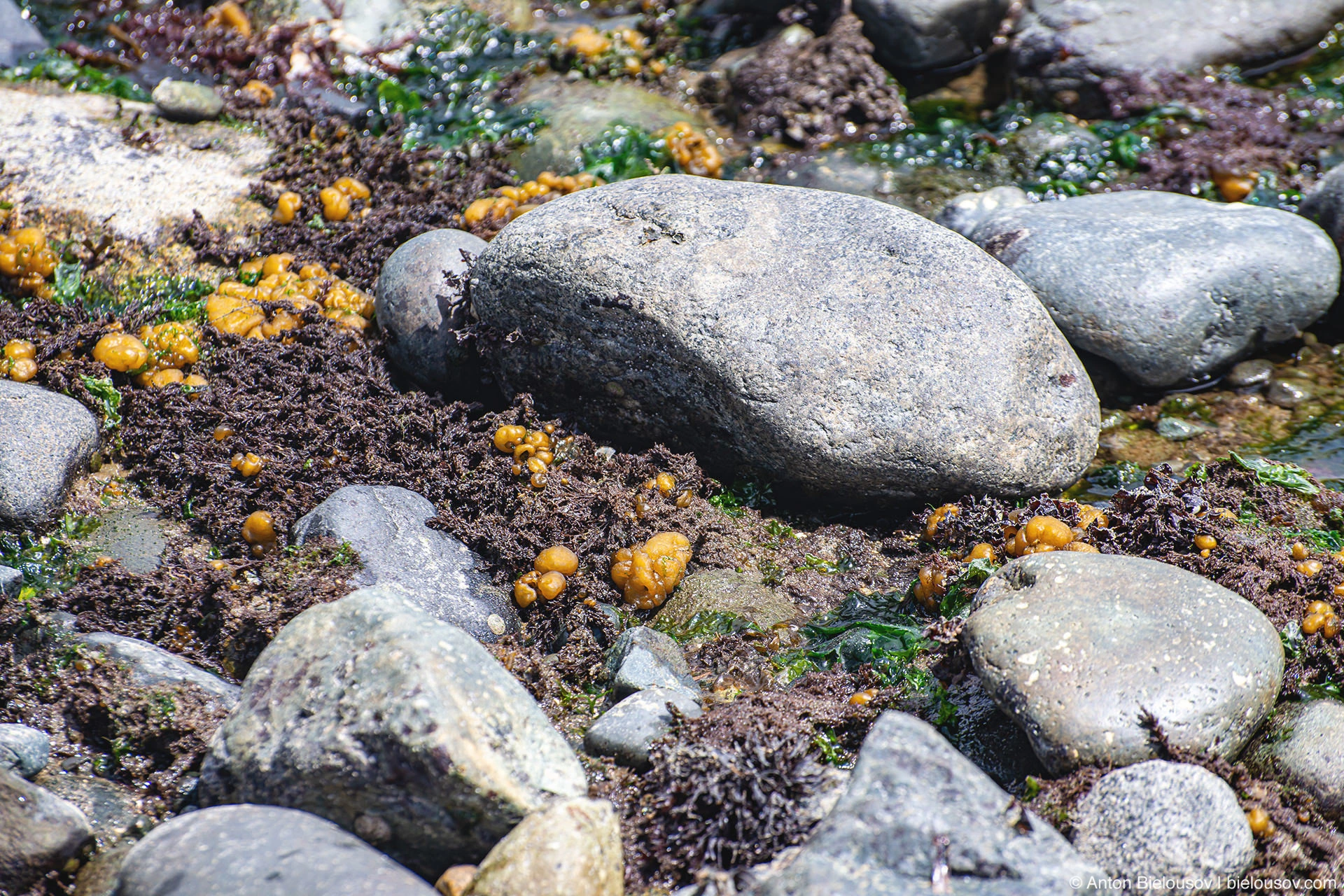
 These I know are kelp.
These I know are kelp.
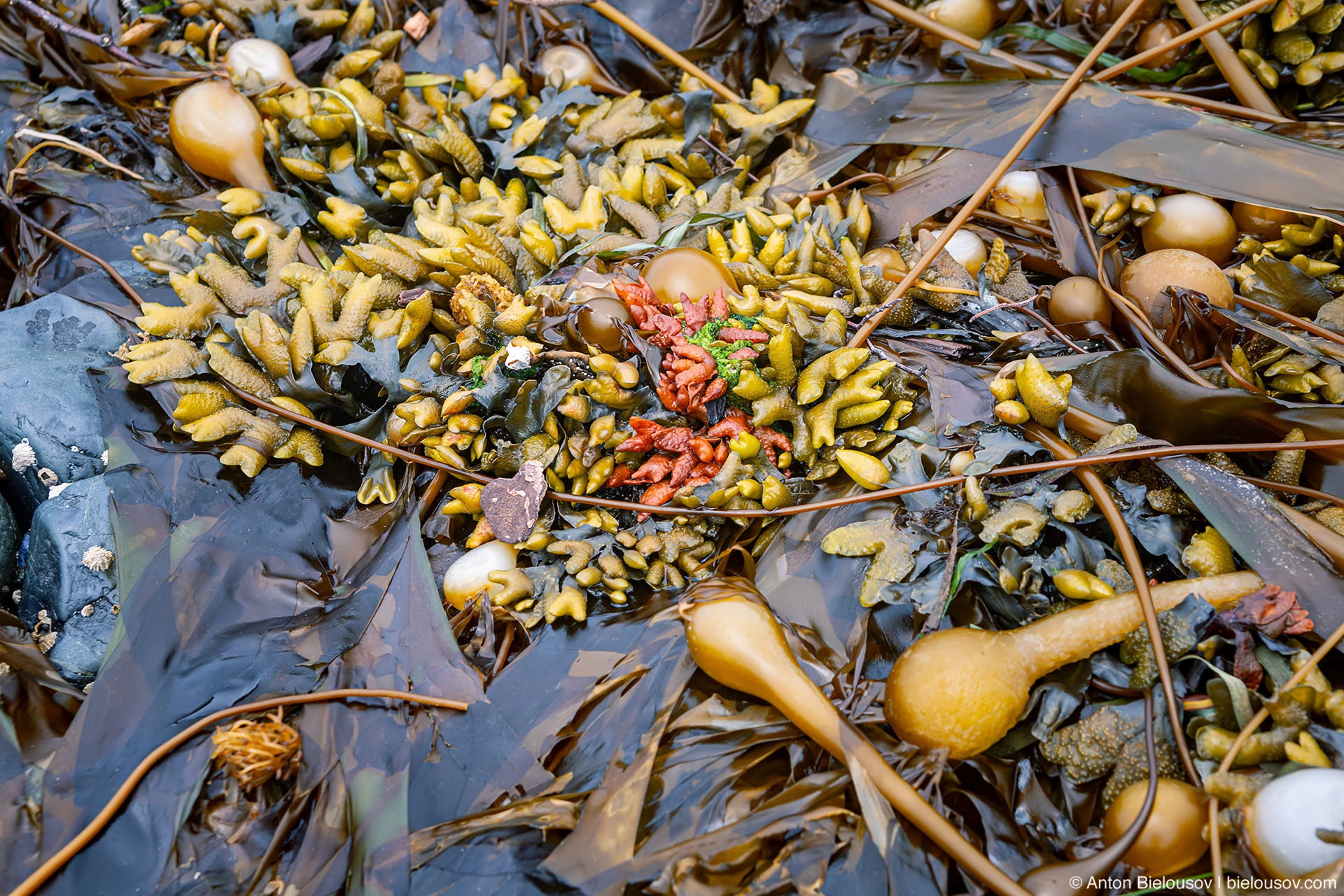 And these here - generally have no idea what it is, but very much like coral mushrooms.
And these here - generally have no idea what it is, but very much like coral mushrooms.
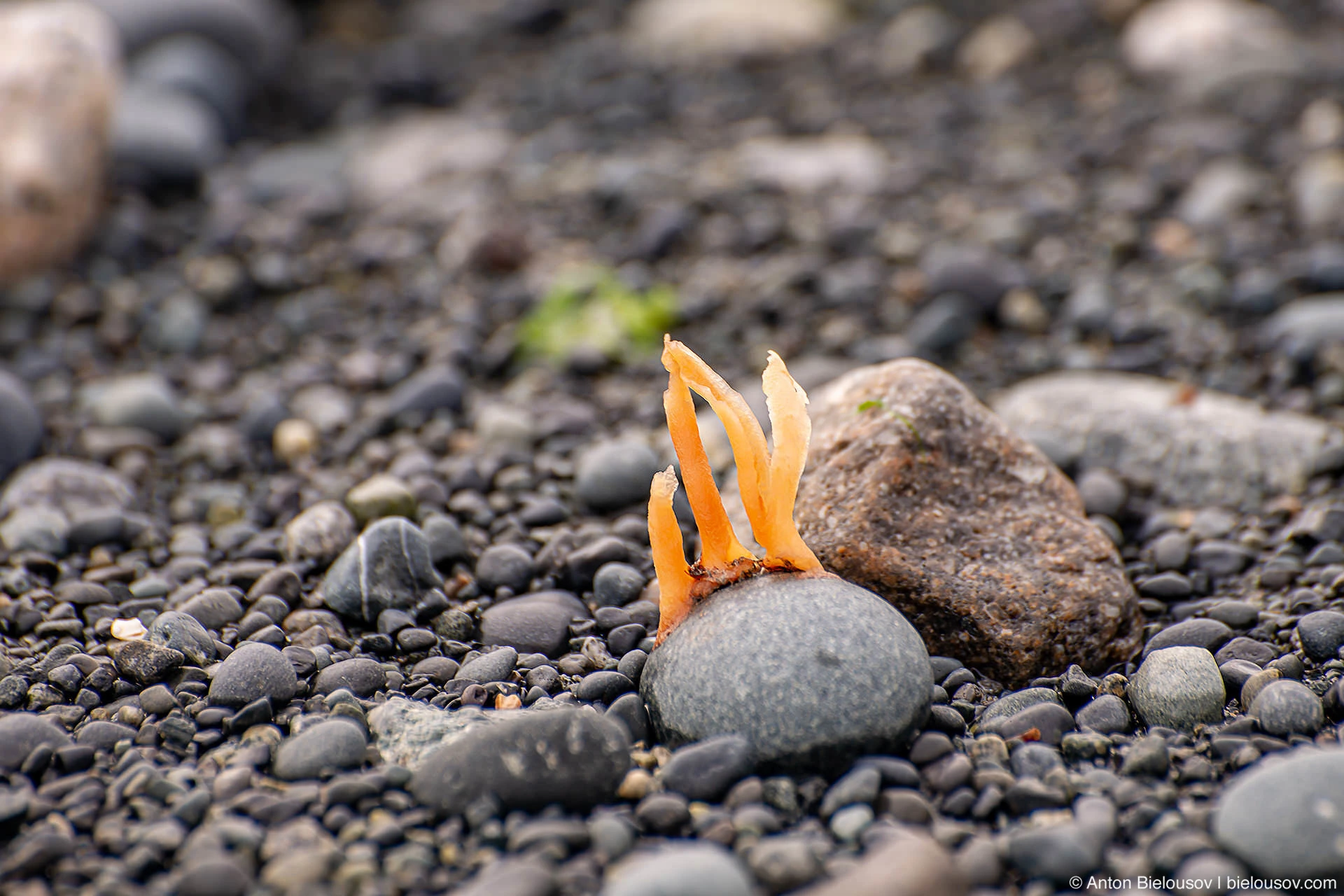 Here, the corpse of a sea urchin was found.
Here, the corpse of a sea urchin was found.
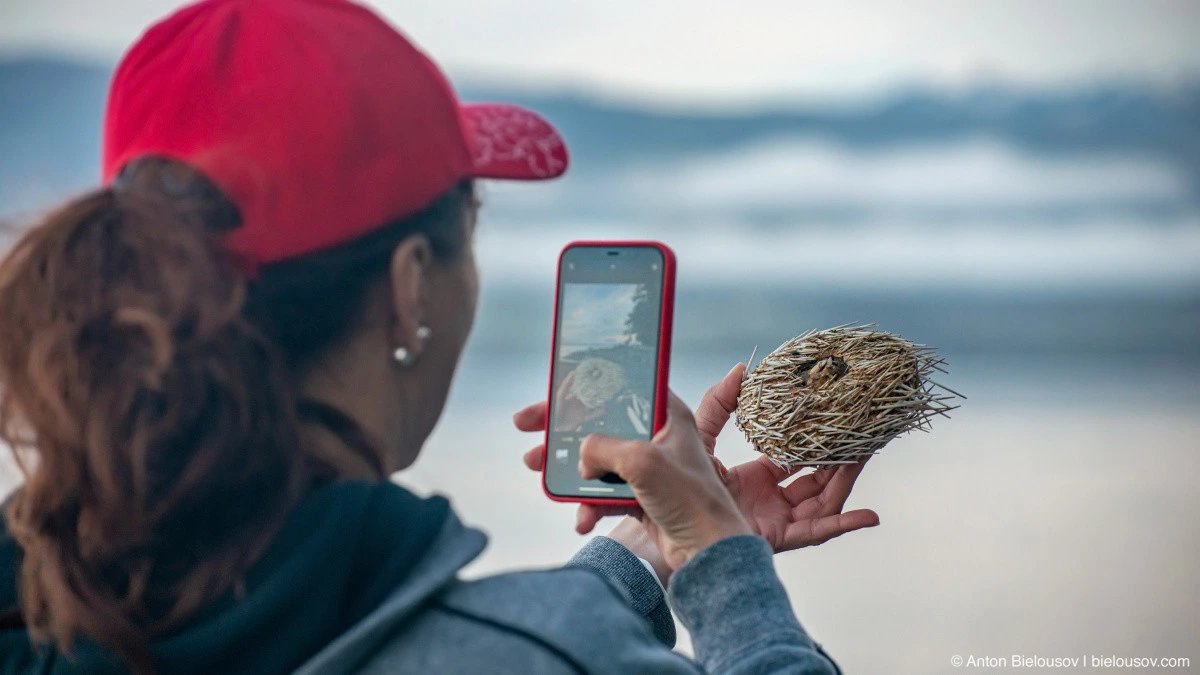 The new forest grows directly from the snags nailed to the shore.
The new forest grows directly from the snags nailed to the shore.
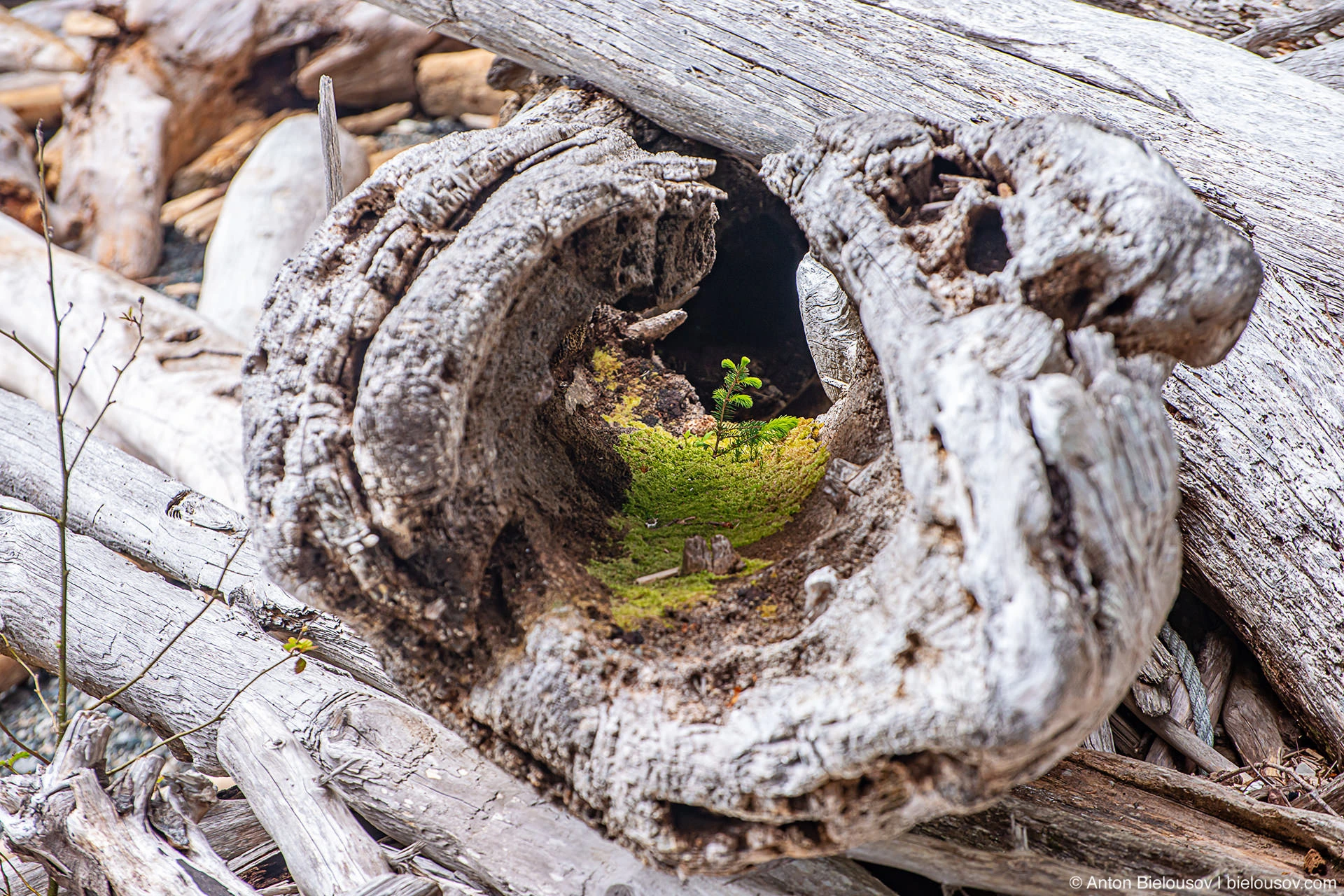 Malcolm's beaches would not be as spectacular if it weren't for the mountains above the horizon - whichever side of the island you look at.
Malcolm's beaches would not be as spectacular if it weren't for the mountains above the horizon - whichever side of the island you look at.
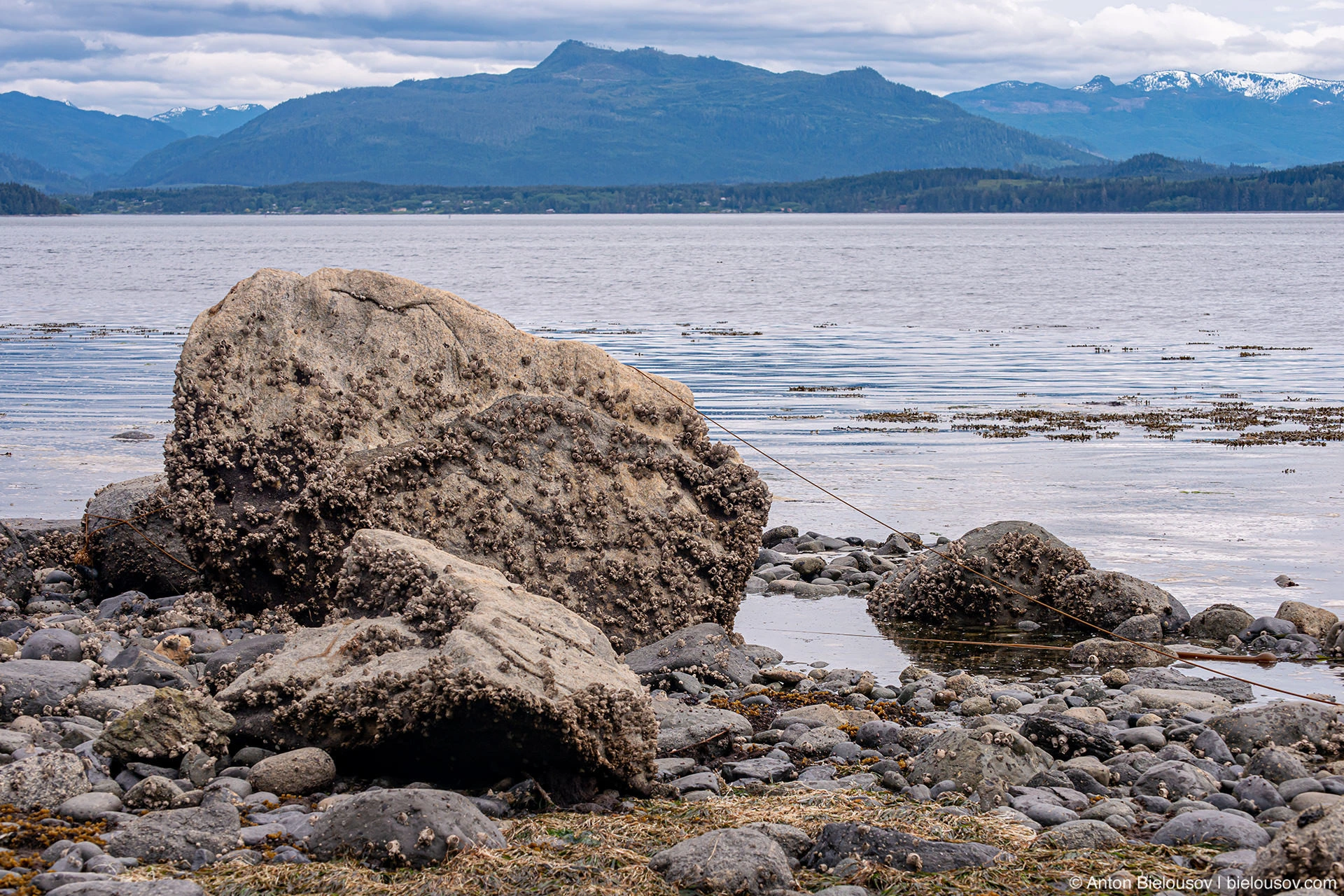 To the south are the snowy peaks of Vancouver Island.
To the south are the snowy peaks of Vancouver Island.
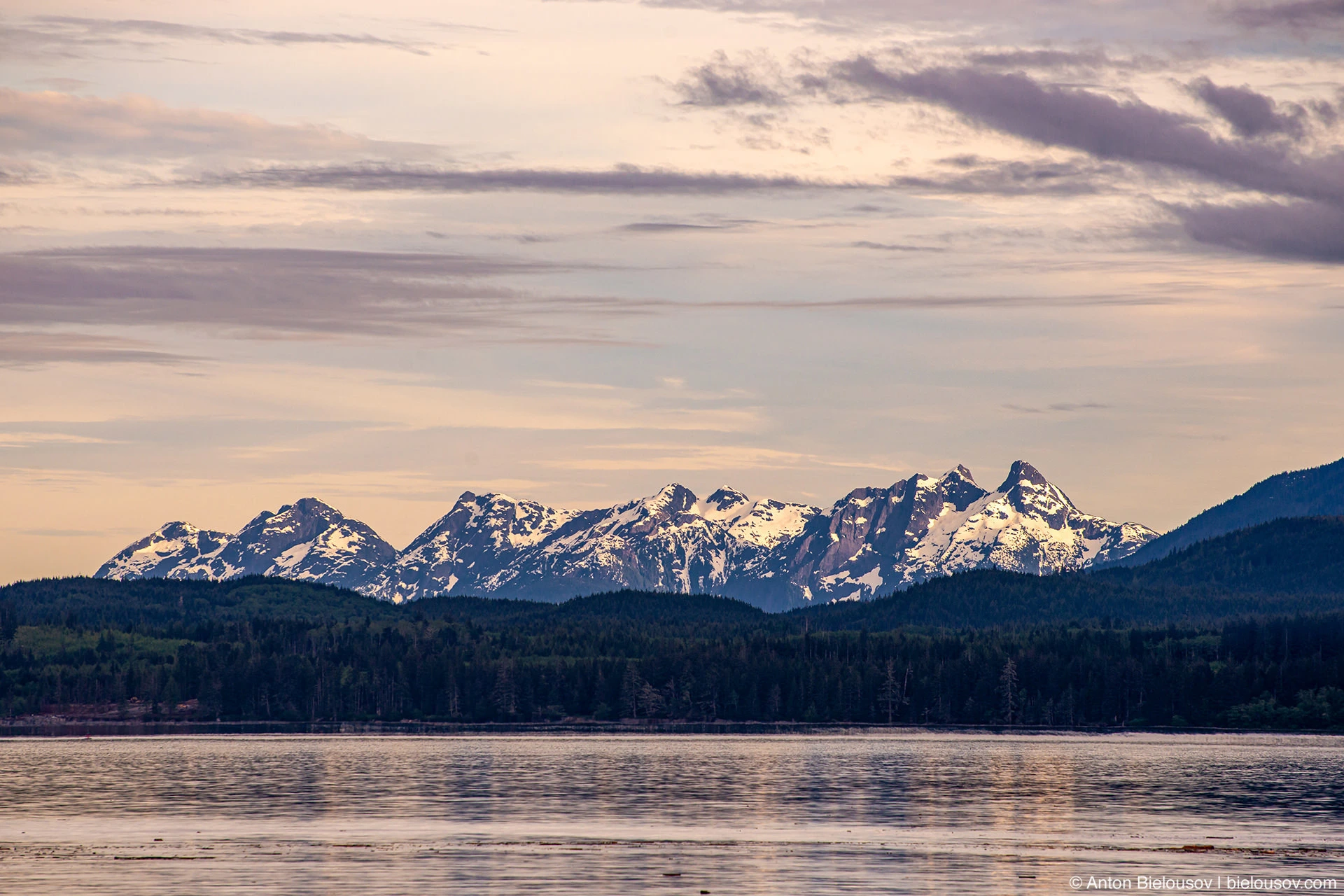 In the north, there are hundreds and hundreds of kilometers of the Coast mountains.
In the north, there are hundreds and hundreds of kilometers of the Coast mountains.
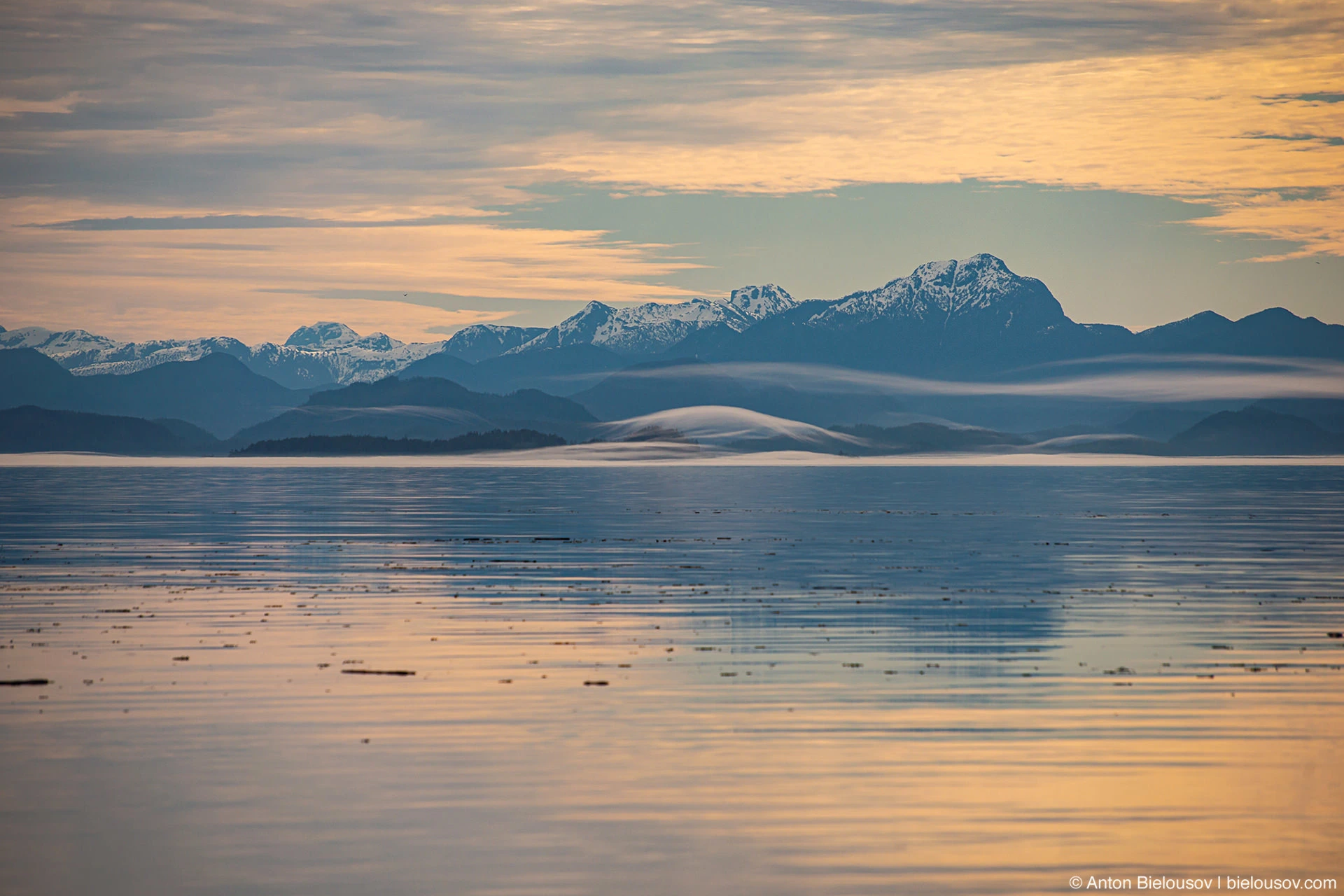 Castaks love to sail here on the quiet beach of Bere Point - scratching themselves over pebbles.
Castaks love to sail here on the quiet beach of Bere Point - scratching themselves over pebbles.
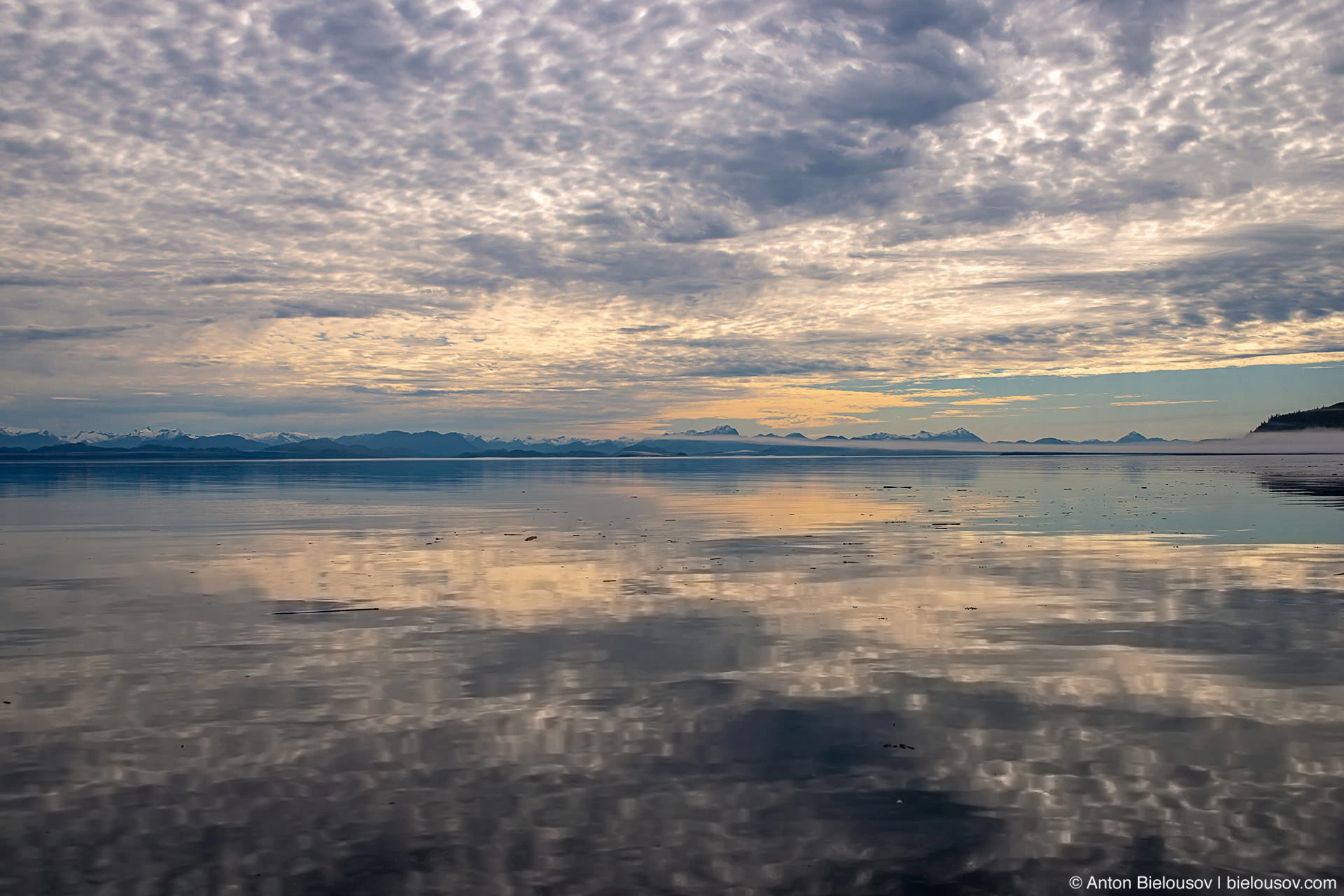 And although this was the best time to see them - in the mornings from April to June, but, alas, we were not lucky.
Complementary foods seem to swim, but killer whales do not.
And although this was the best time to see them - in the mornings from April to June, but, alas, we were not lucky.
Complementary foods seem to swim, but killer whales do not.
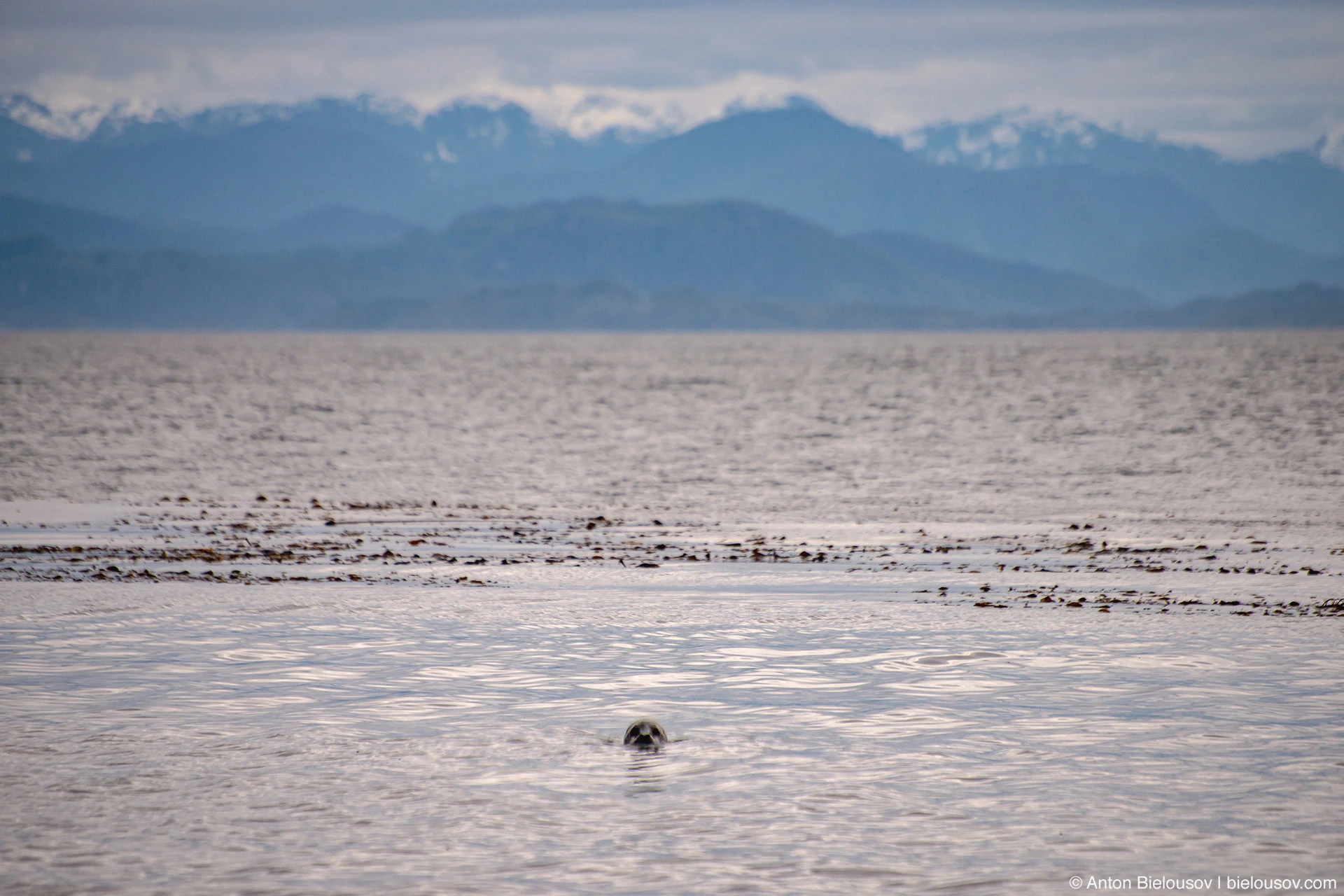 Maybe partly because it was necessary to go 3 km here and we could not do it every day. But on the other hand, there is a campsite right at Bere Point where you can get up next time indefinitely - and stand still unlucky.
By the way, there are no bears on the island at all - many have expressed concern about camping because of the bears - so what is stopping you now? Forward!
Maybe partly because it was necessary to go 3 km here and we could not do it every day. But on the other hand, there is a campsite right at Bere Point where you can get up next time indefinitely - and stand still unlucky.
By the way, there are no bears on the island at all - many have expressed concern about camping because of the bears - so what is stopping you now? Forward!
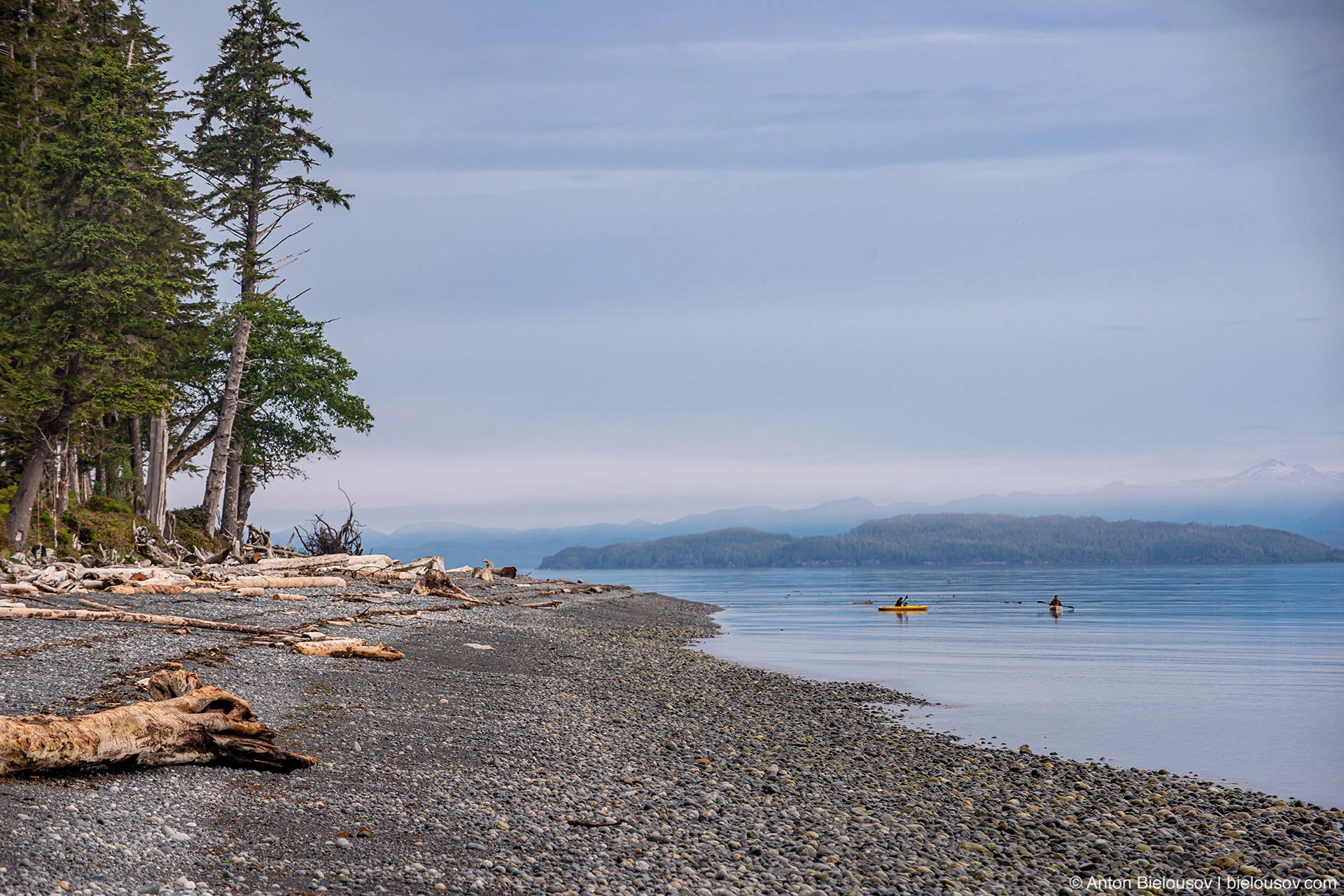 On the other hand, if you are not interested at all without risk, then take a kayak or a board - and swim with the Chinese killers.
On the other hand, if you are not interested at all without risk, then take a kayak or a board - and swim with the Chinese killers.
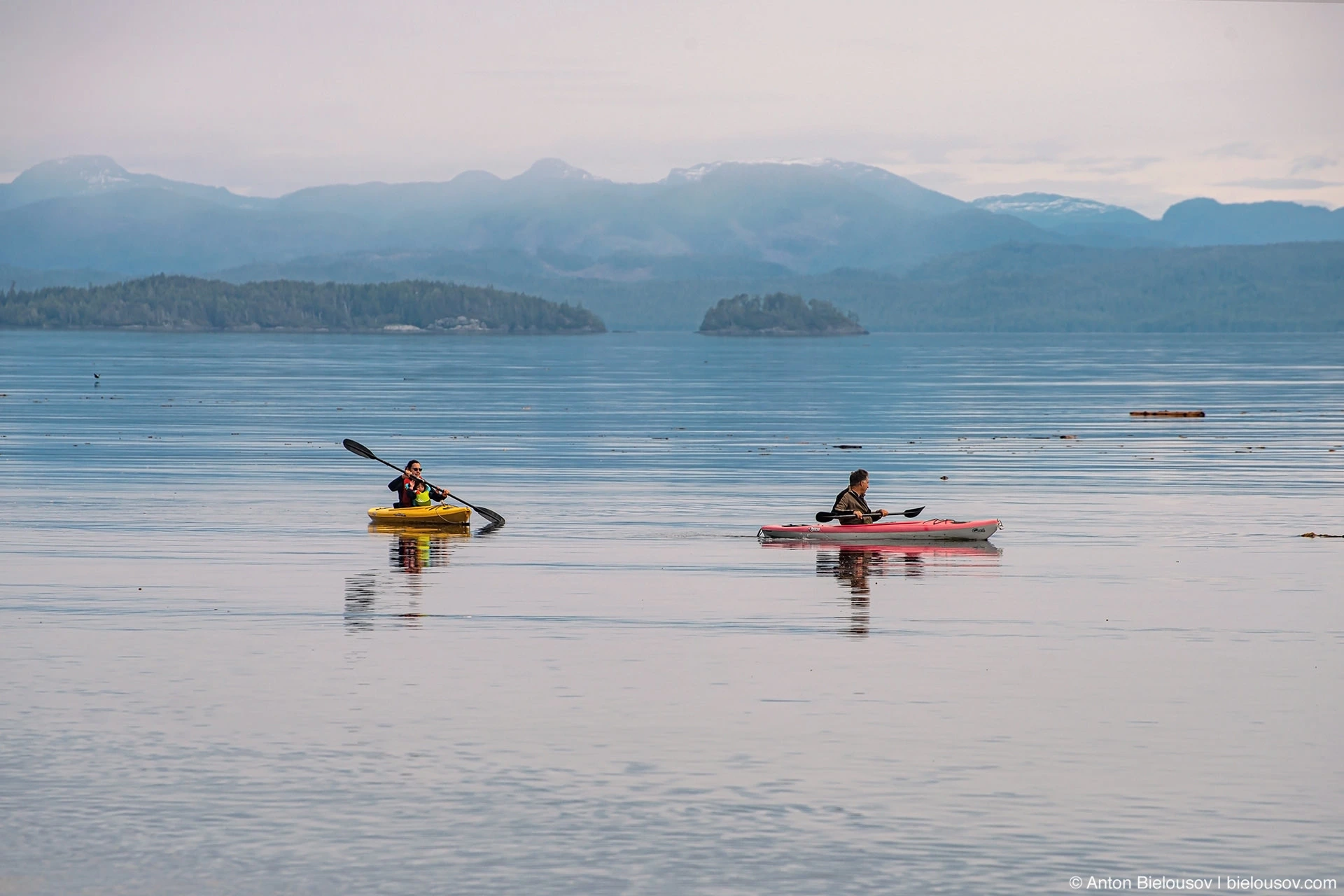 In any case, this beach is simply gorgeous and without killer whales.
In any case, this beach is simply gorgeous and without killer whales.
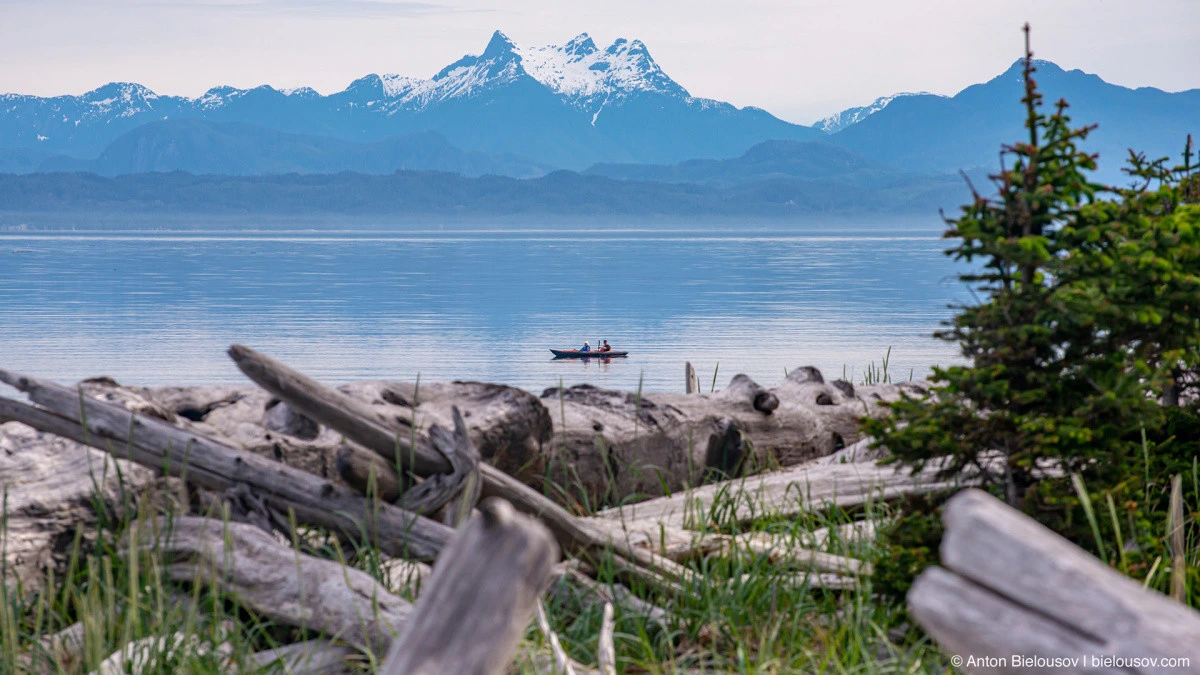
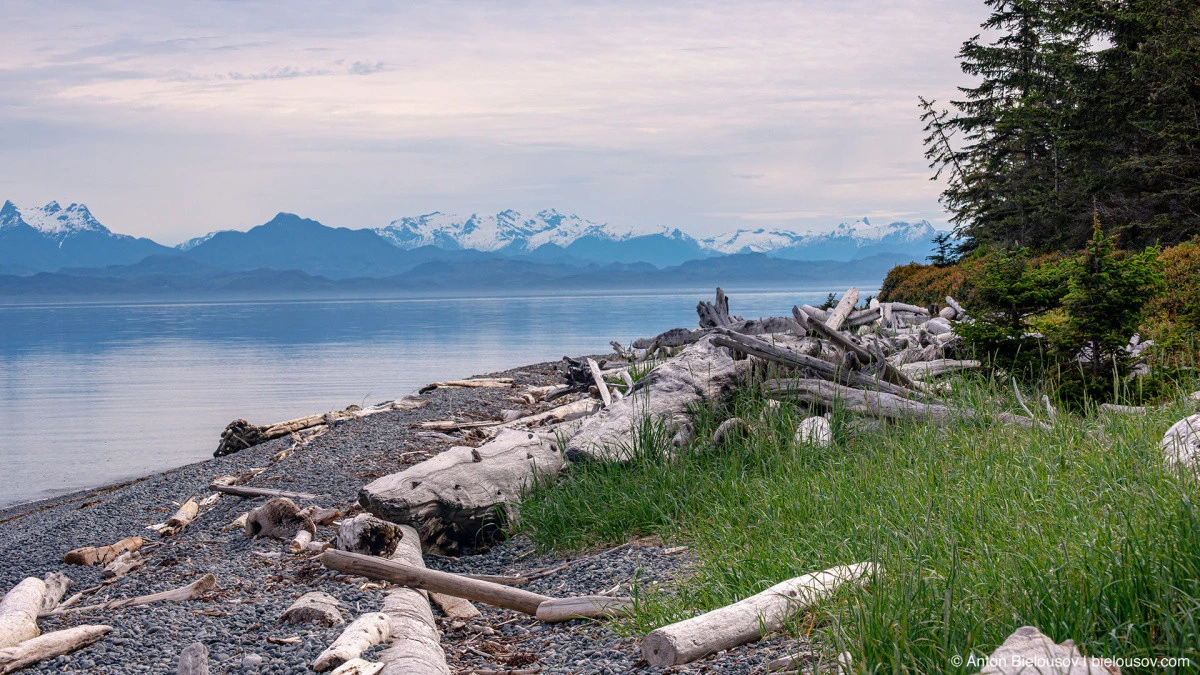
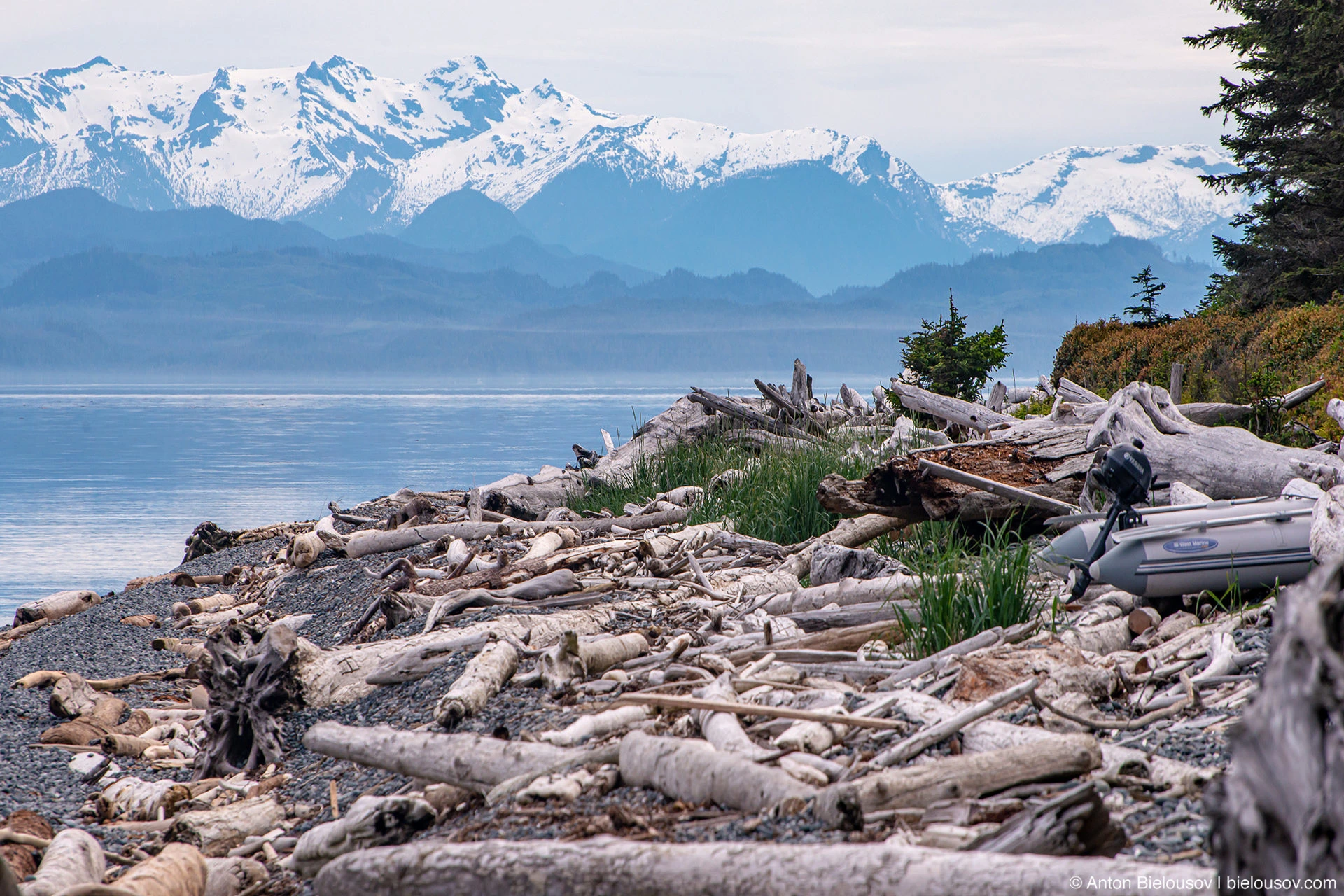 Walking in the morning and observing the completely surreal behavior of the fog, we had a theory that if the fact that the Indians never lived on Malcolm (but only came here from a neighboring island to hunt and collect shellfish) is caused by the fact that some then, let's say, not a very good spirit.
Walking in the morning and observing the completely surreal behavior of the fog, we had a theory that if the fact that the Indians never lived on Malcolm (but only came here from a neighboring island to hunt and collect shellfish) is caused by the fact that some then, let's say, not a very good spirit.
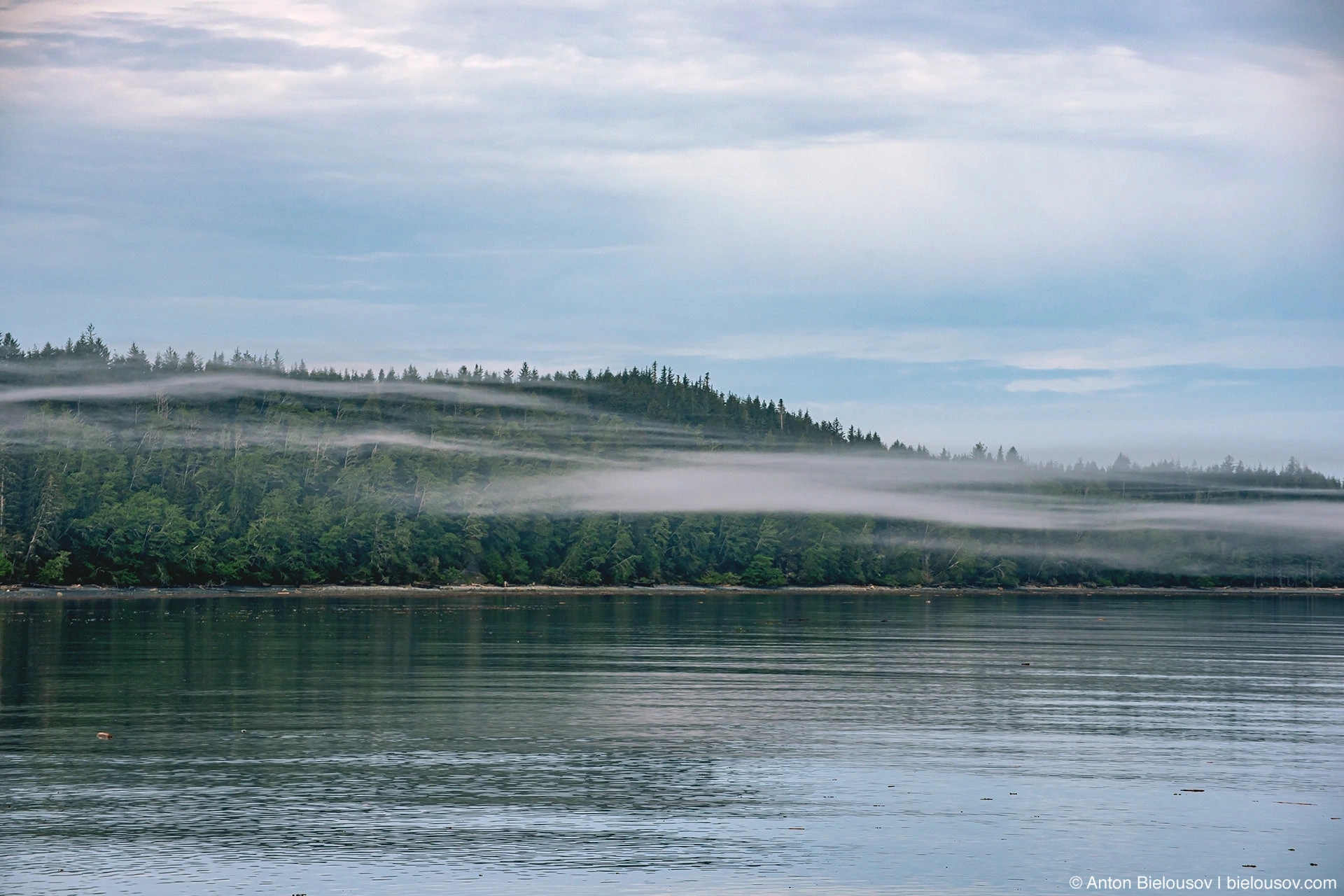 This theory is supported by a couple of tragic drug stories. In other words, what if coming here does not suggest the best thoughts?
Surely, this was not a problem for the "pure" Finns who are building socialism here. But the Indian shamans could well feel that something was wrong.
This theory is supported by a couple of tragic drug stories. In other words, what if coming here does not suggest the best thoughts?
Surely, this was not a problem for the "pure" Finns who are building socialism here. But the Indian shamans could well feel that something was wrong.
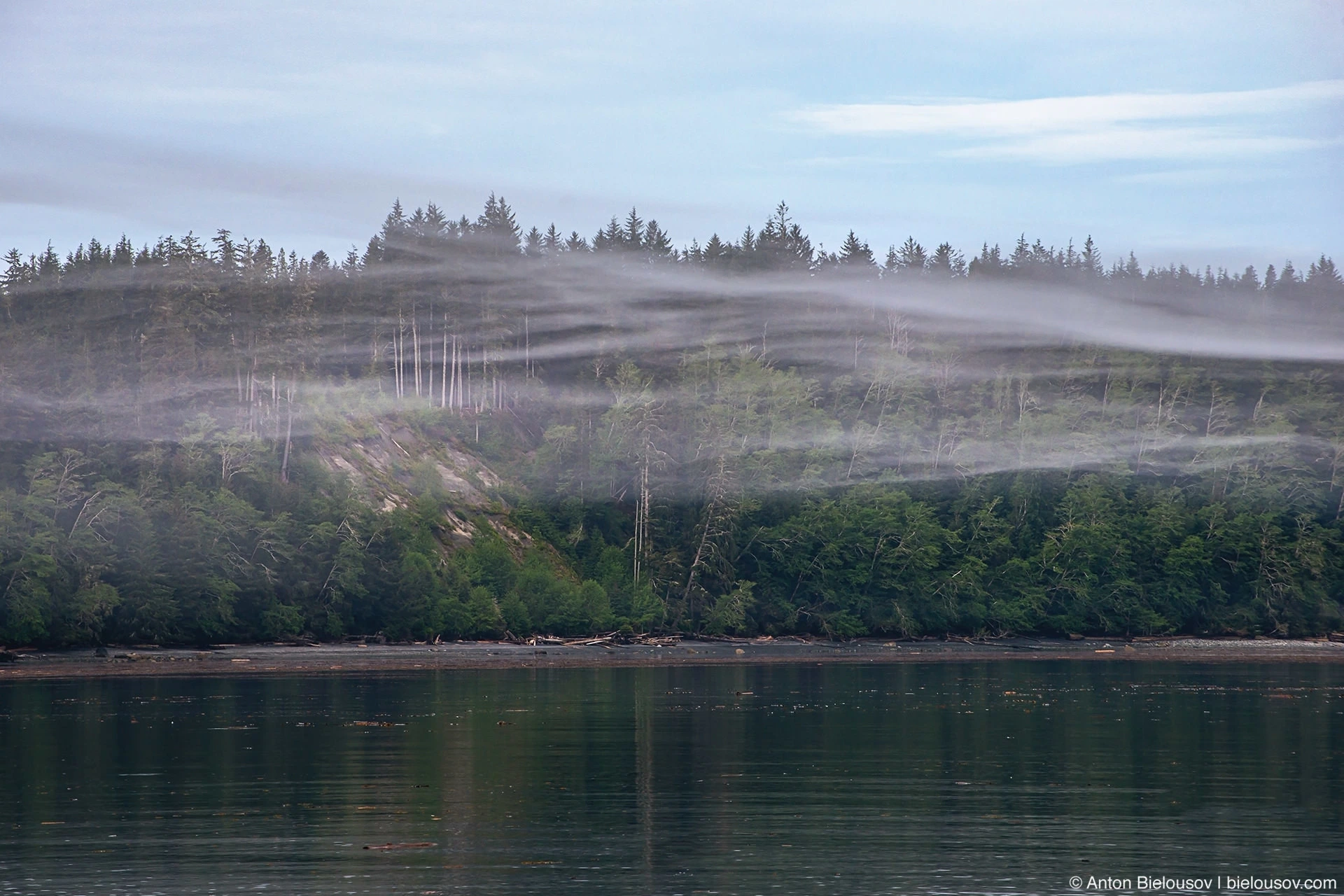 This is just theory, but my advice to you is not to use drugs. Especially on this island.
This is just theory, but my advice to you is not to use drugs. Especially on this island.
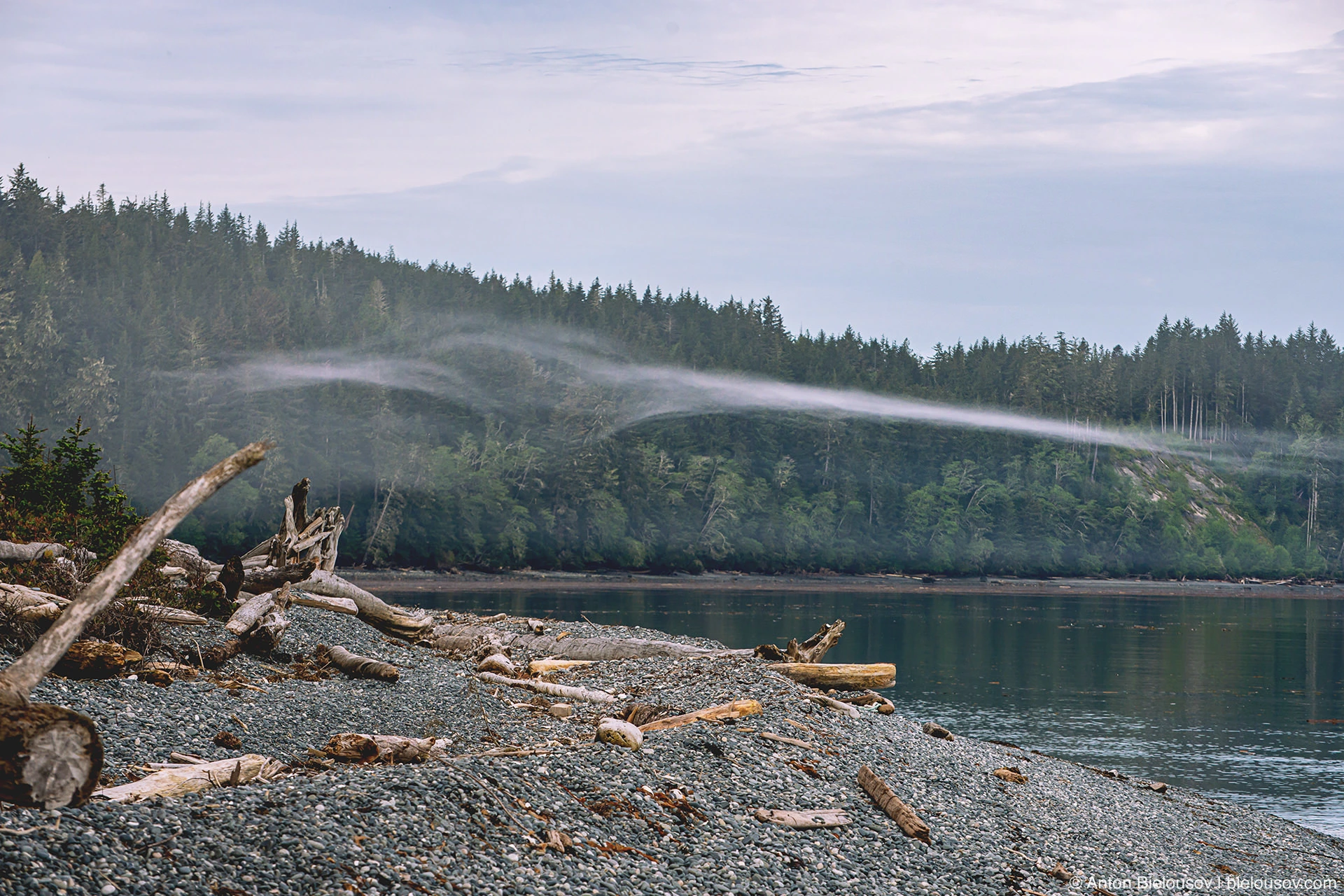 One thing I can say for sure - I saw such fogs only in Indian paintings.
In general, as far as the weather is concerned, the forecast for the island for more than a day was always useless: while driving here we were already tuned in for a week of rains, which in fact did not happen at all, except for one night it dripped a little. But while Vancouver was suffocating in the first heat this year, it was a comfortable 18-21 ° C.
One thing I can say for sure - I saw such fogs only in Indian paintings.
In general, as far as the weather is concerned, the forecast for the island for more than a day was always useless: while driving here we were already tuned in for a week of rains, which in fact did not happen at all, except for one night it dripped a little. But while Vancouver was suffocating in the first heat this year, it was a comfortable 18-21 ° C.
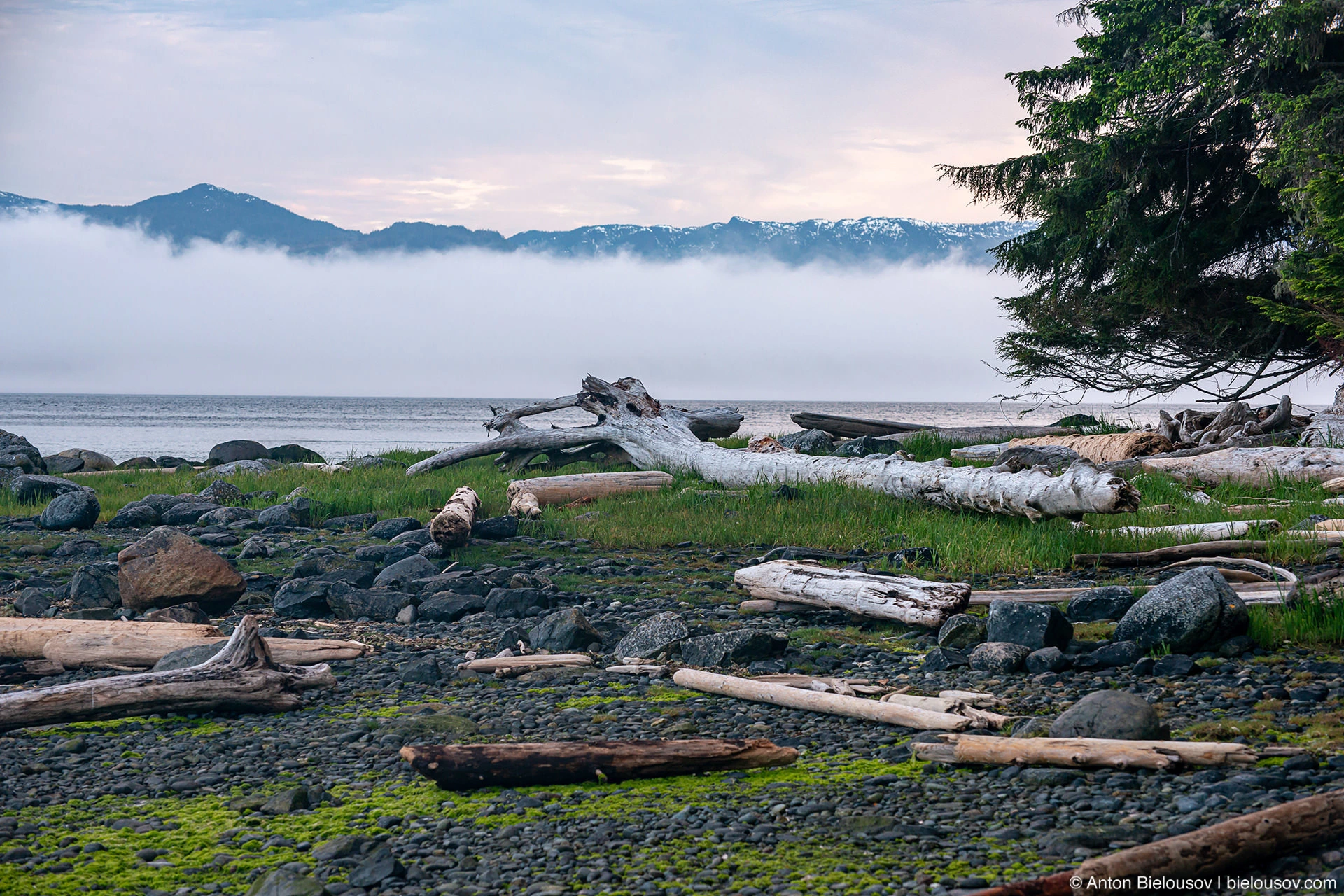 I’ll even say more - when it’s just sunny, it’s not so great here - this coast, this forest simply needs heavy clouds or clouds.
And if with killer whales, as well as with the weather, it is, after all, a lottery, then you will literally be surrounded by other animals wherever you stop on the island.
I’ll even say more - when it’s just sunny, it’s not so great here - this coast, this forest simply needs heavy clouds or clouds.
And if with killer whales, as well as with the weather, it is, after all, a lottery, then you will literally be surrounded by other animals wherever you stop on the island.
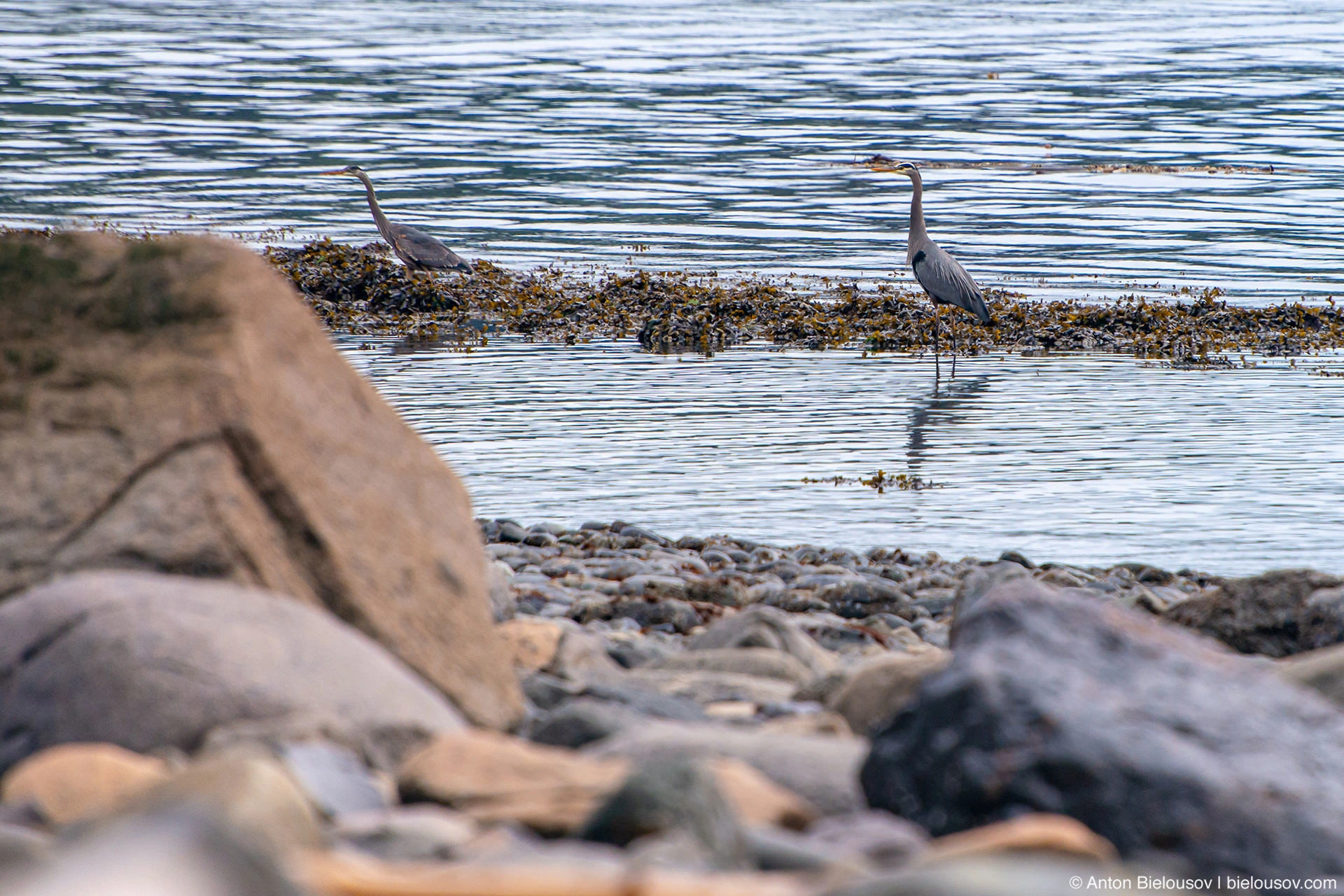 Firstly, the ravens - you always need to be on the lookout because they are just waiting for you to leave to open, get, print out what you left unattended. Even if it's not edible, it's just interesting.
Firstly, the ravens - you always need to be on the lookout because they are just waiting for you to leave to open, get, print out what you left unattended. Even if it's not edible, it's just interesting.
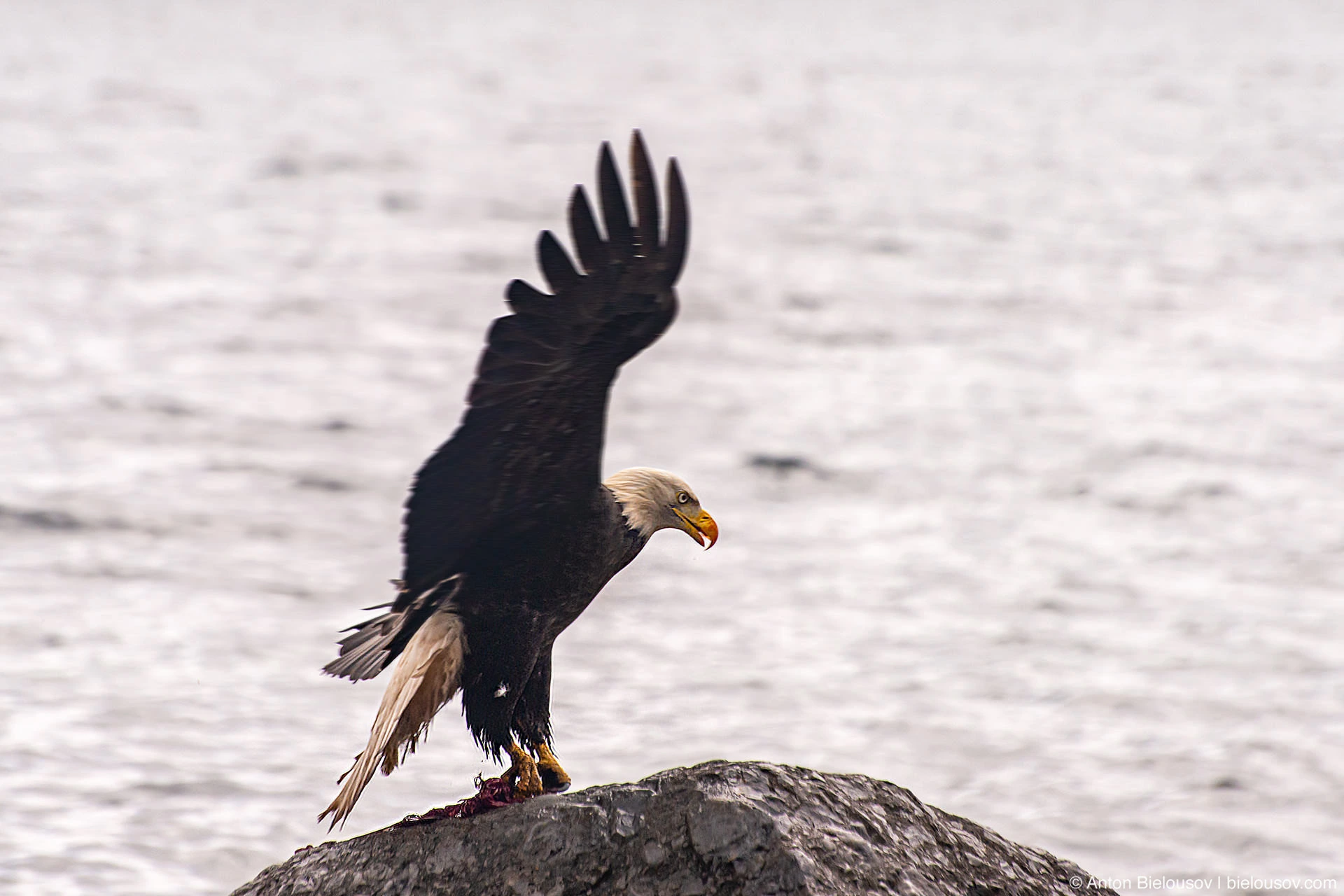 There are also many bald eagles, but these are a little more modest - scared by crows. You can often hear their arguments.
There are also many bald eagles, but these are a little more modest - scared by crows. You can often hear their arguments.
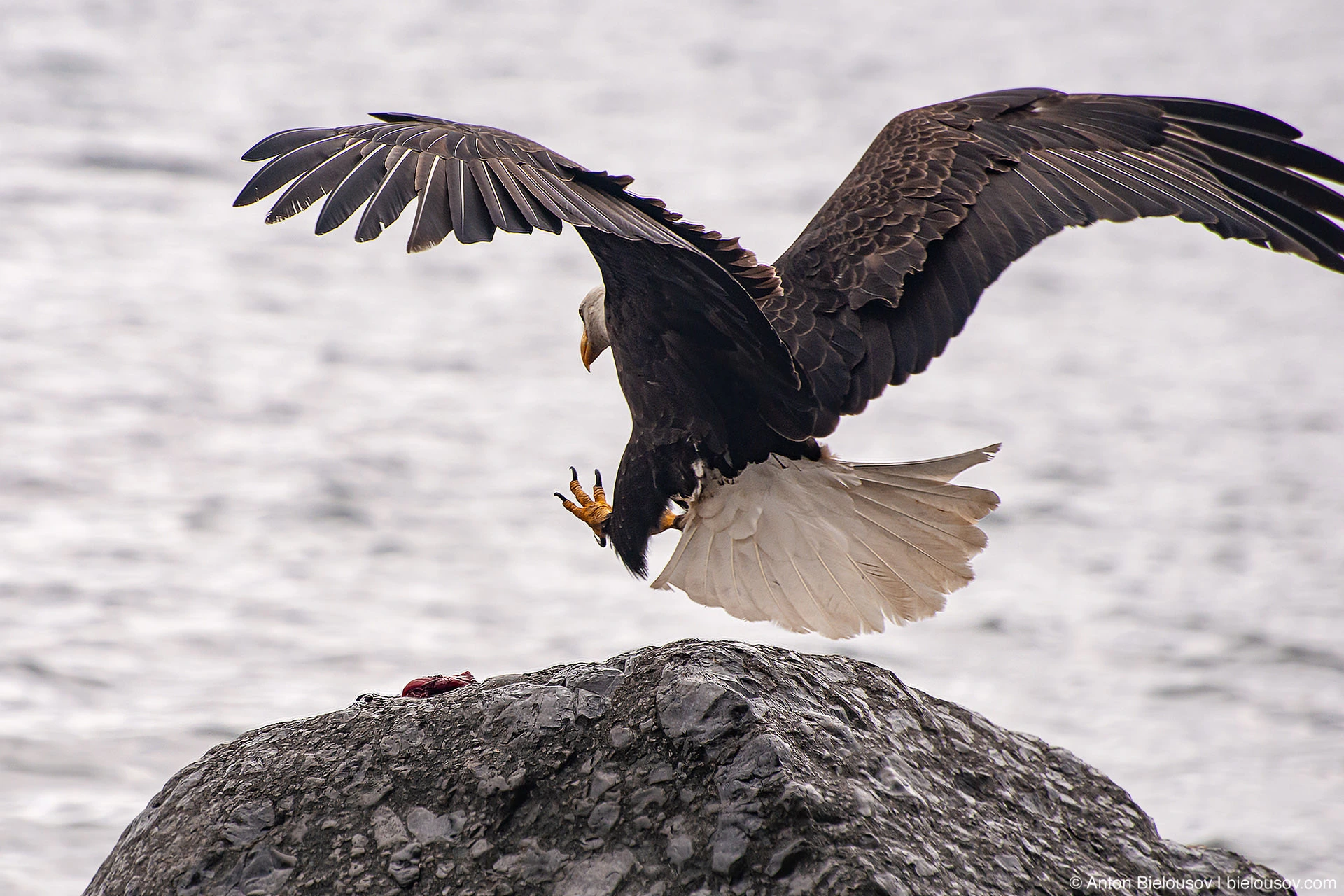 And the coolest guys on the beach are, of course, minks.
And the coolest guys on the beach are, of course, minks.
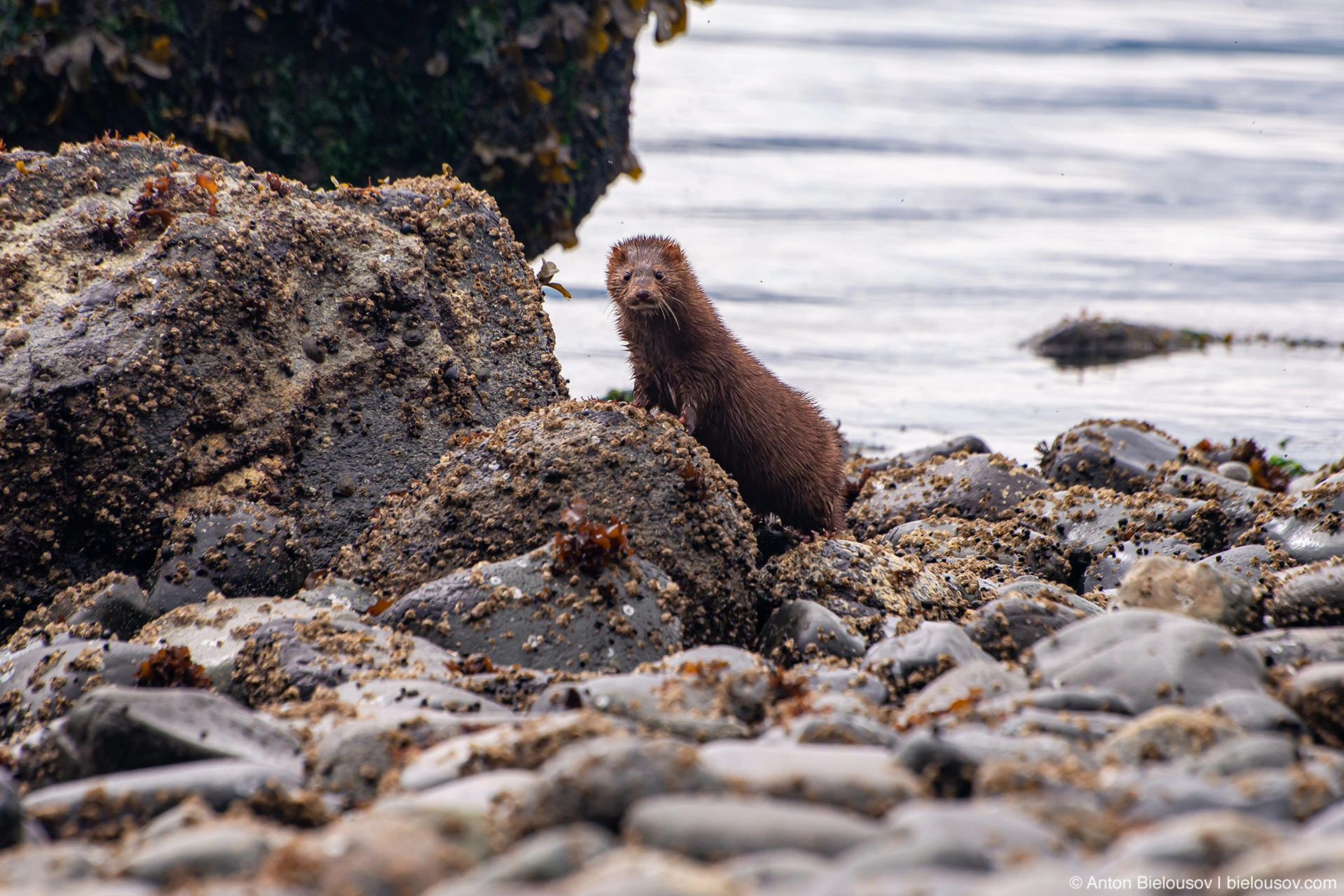
 They diligently portray their indifference and extreme preoccupation with hunting eels and molluscs.
They diligently portray their indifference and extreme preoccupation with hunting eels and molluscs.
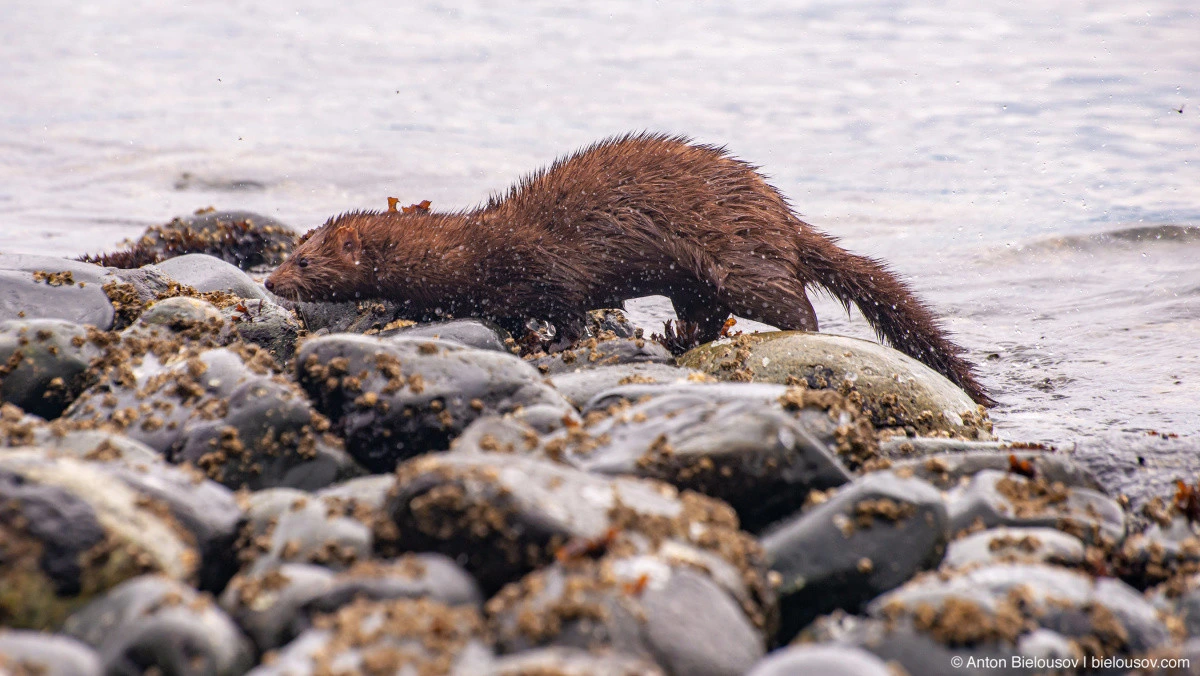
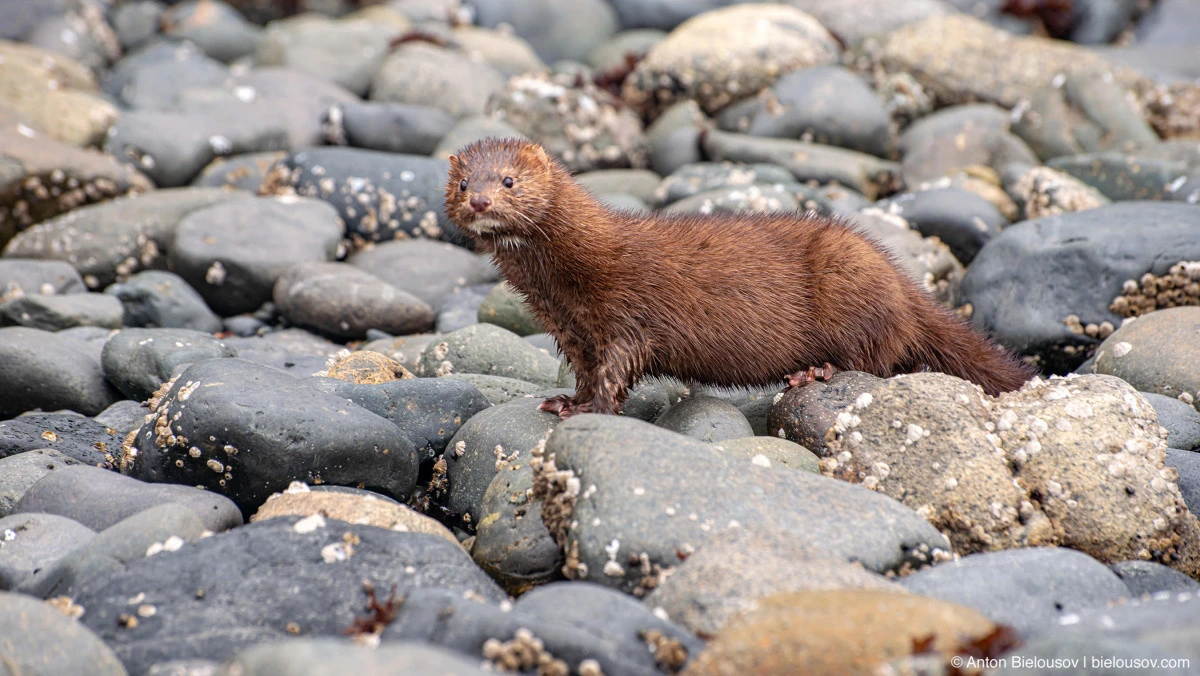 But still they cannot hide their interest.
But still they cannot hide their interest.
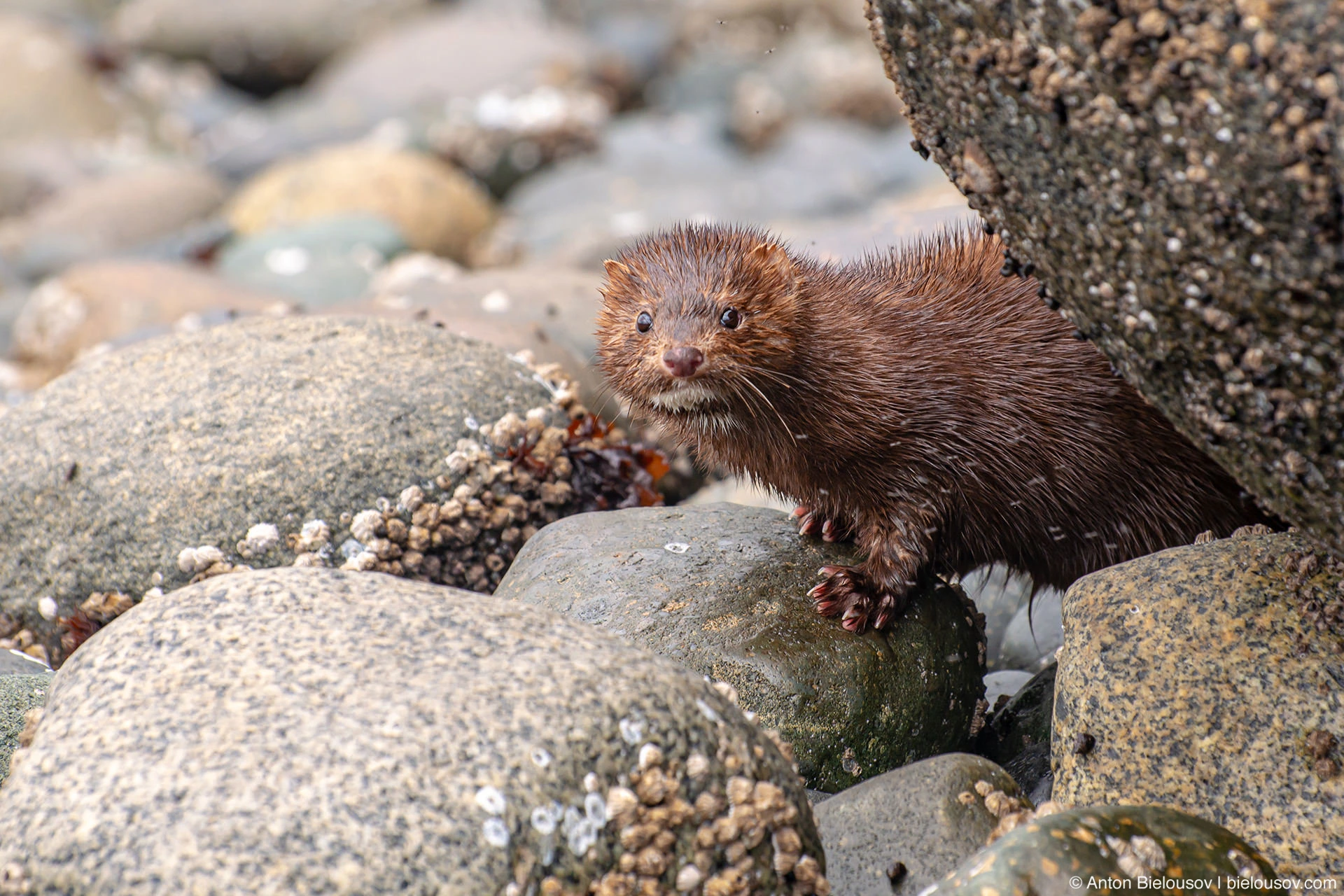 Like killer whales, minks also love to scratch themselves here on the beach.
Like killer whales, minks also love to scratch themselves here on the beach.
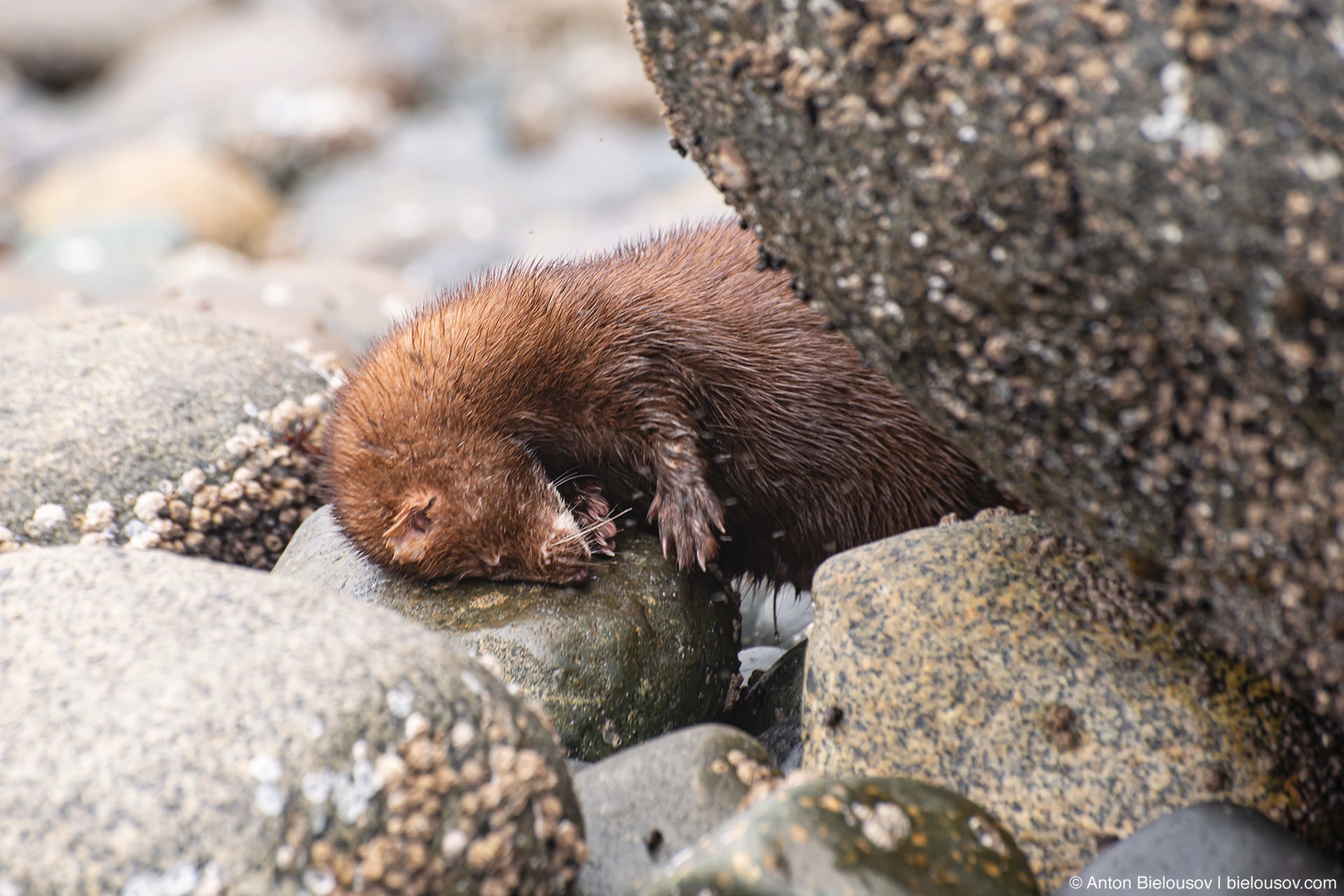 And, if you suddenly forgot, with all this - no one is around.
And, if you suddenly forgot, with all this - no one is around.
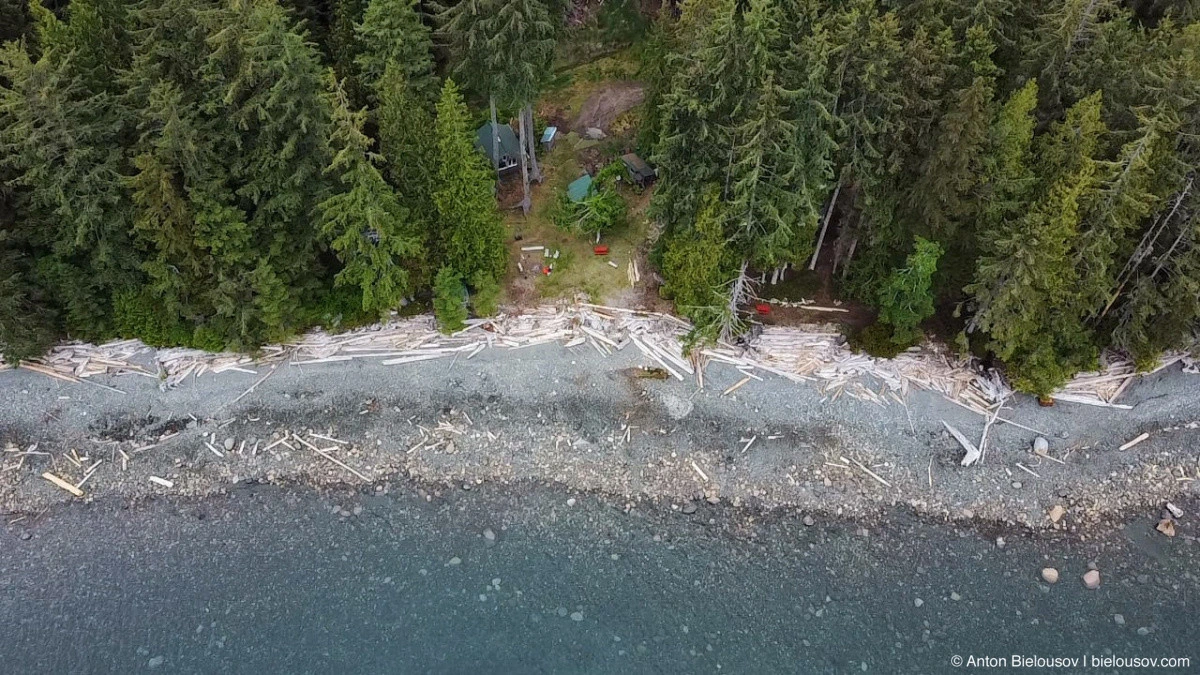 Many thanks to the hosts who have sheltered us - Svetlana and Ken are amazingly interesting people with vast experience behind them. If you are there, be sure to talk to them.
Many thanks to the hosts who have sheltered us - Svetlana and Ken are amazingly interesting people with vast experience behind them. If you are there, be sure to talk to them.
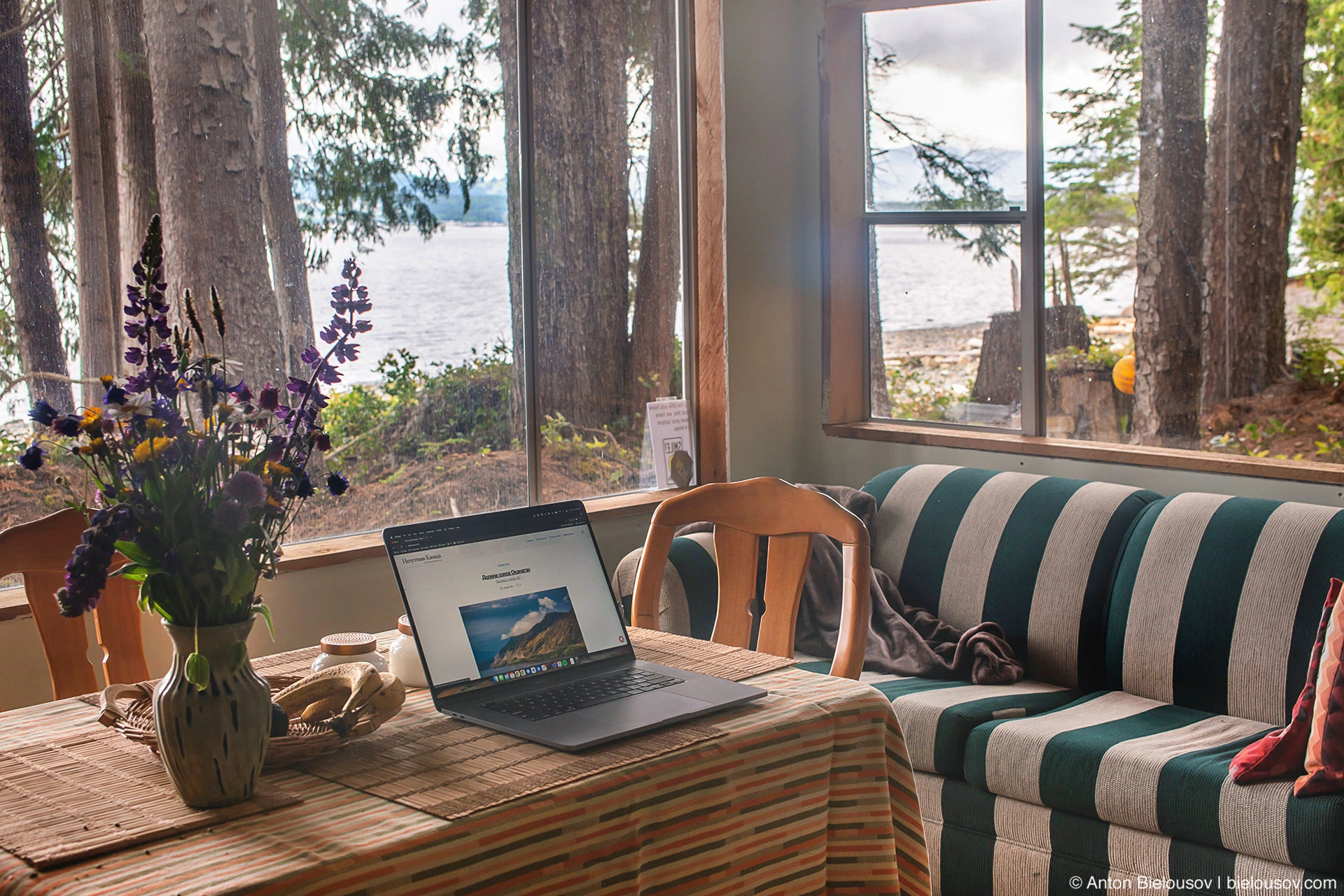 The express course on operating a wood-burning stove alone is worth a lot.
The express course on operating a wood-burning stove alone is worth a lot.
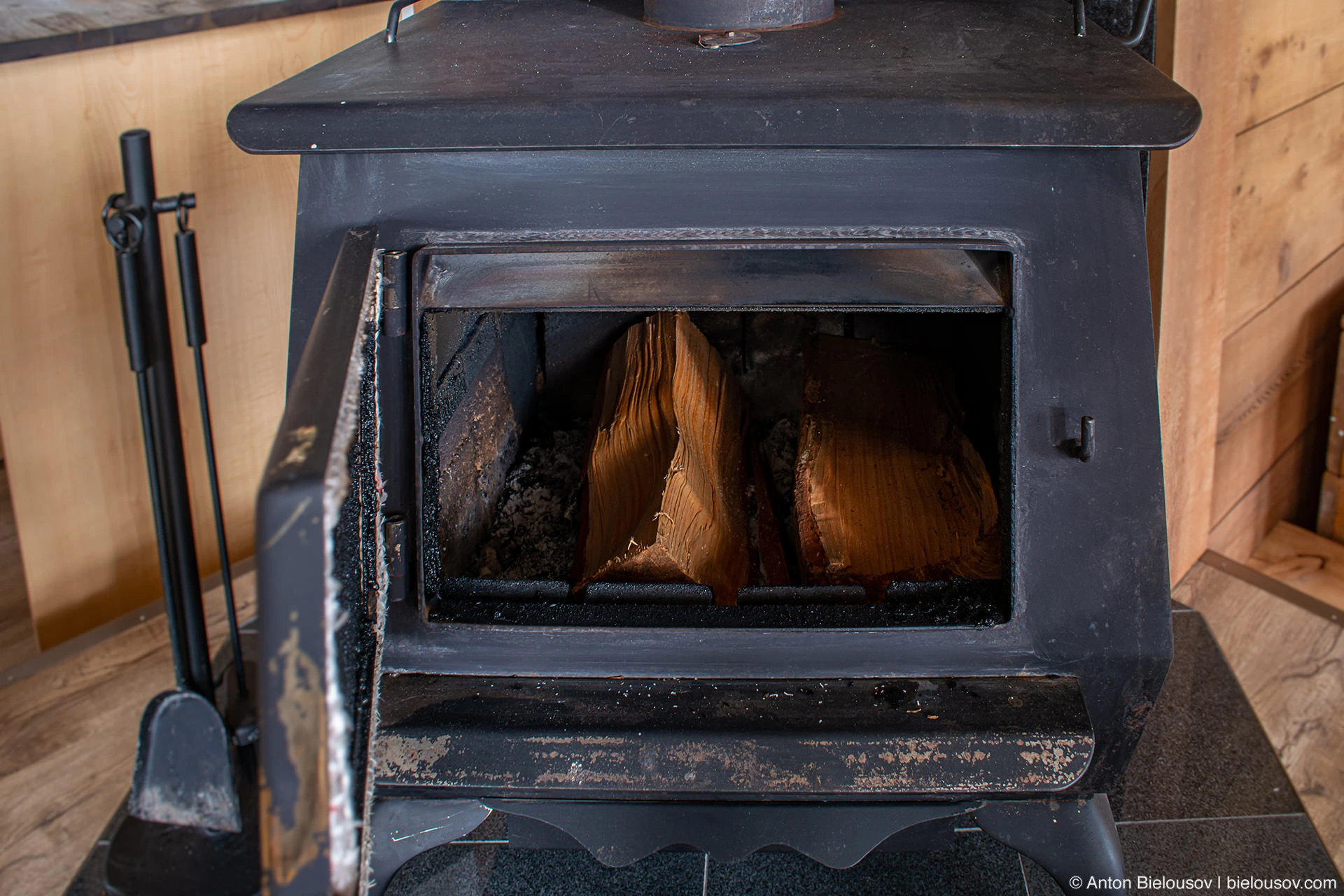






Port McNeil









Sointula
Malcolm Island is Canada's largest sedimentary island (that is, composed of sedimentary rocks). On the map, he looks like ... a cat. Even eyes and nose are included. The only city on the island with a population of 576 people (82% of the population of the entire island) is Sointula. Well, as a city, rather a village or even a village.


















































